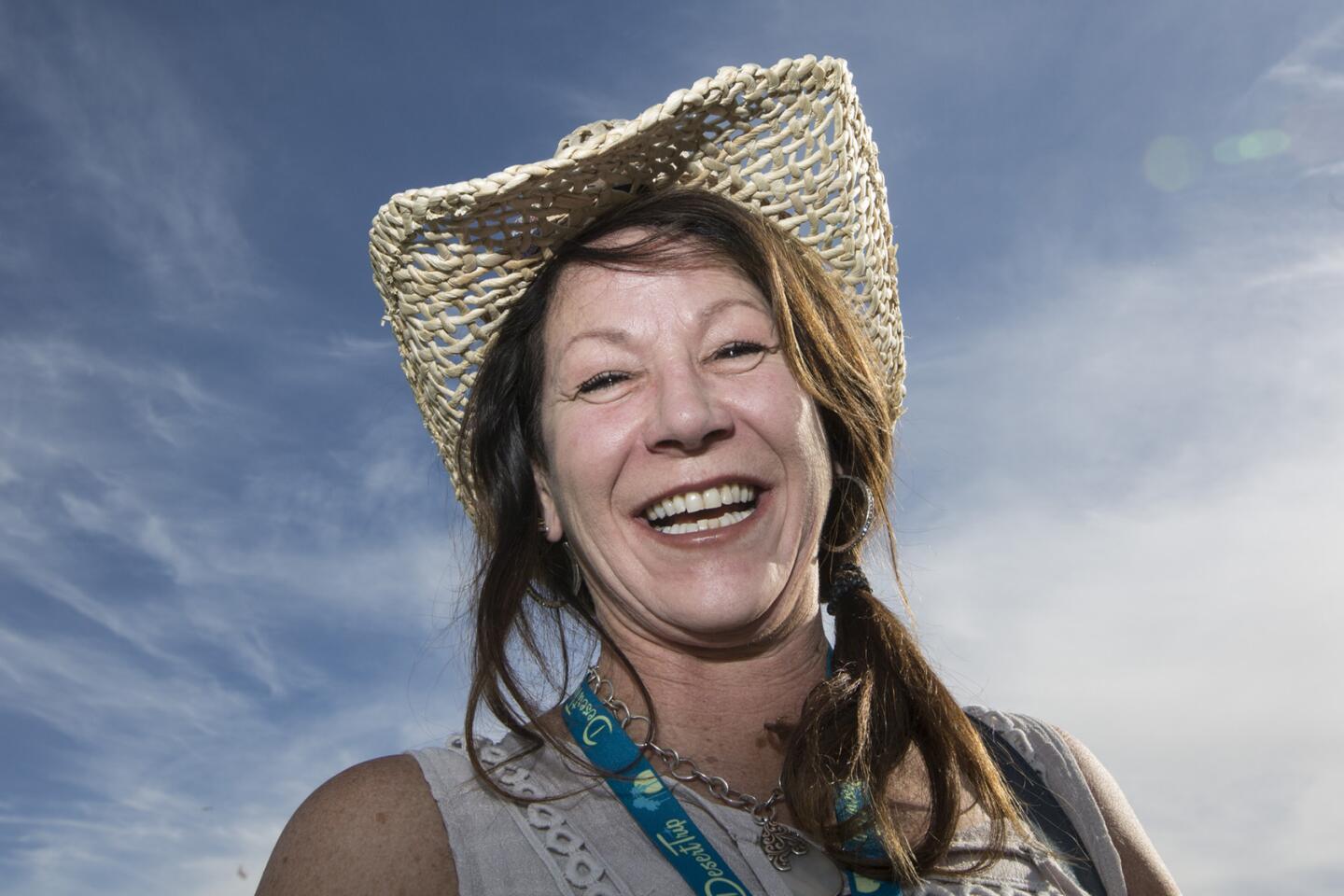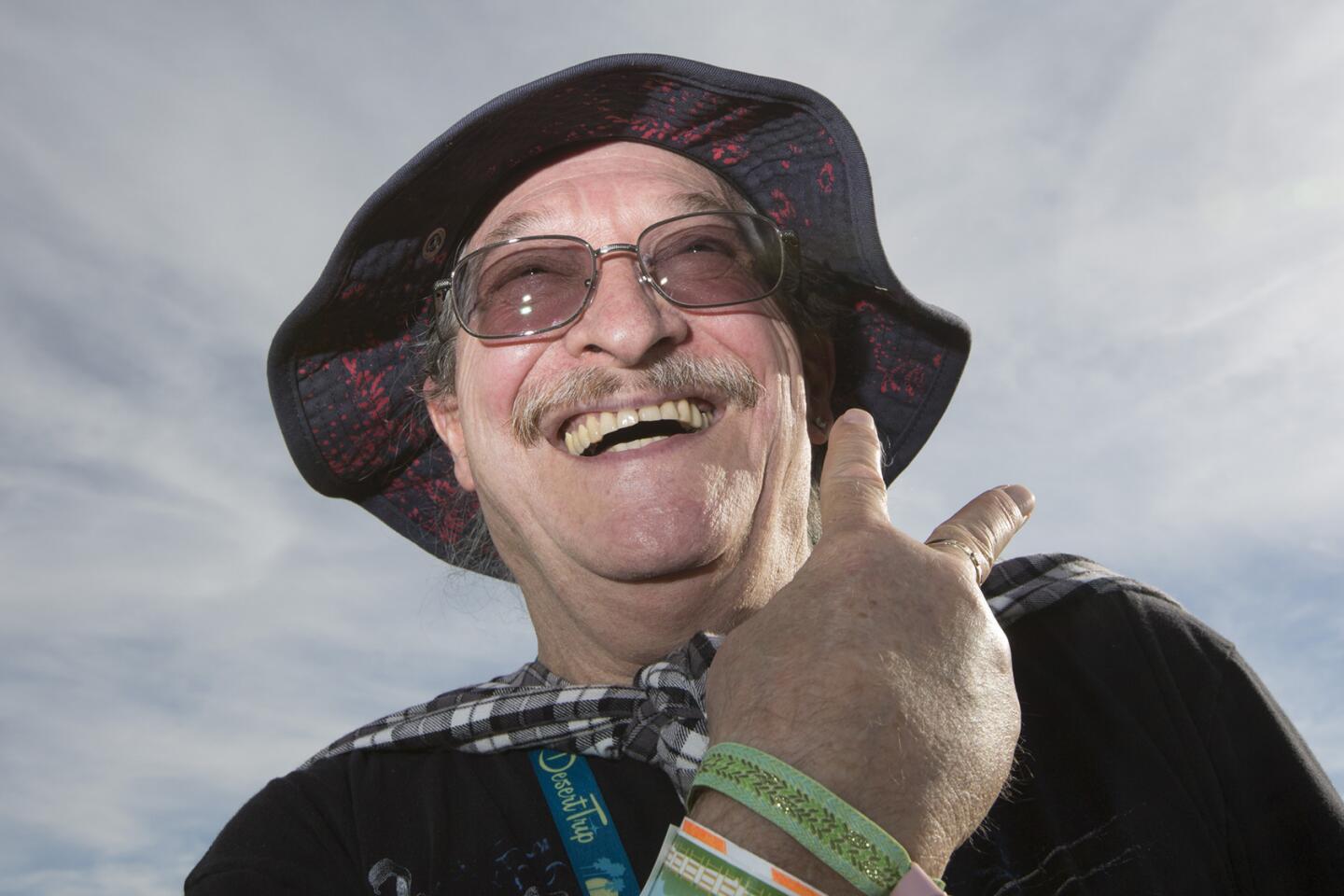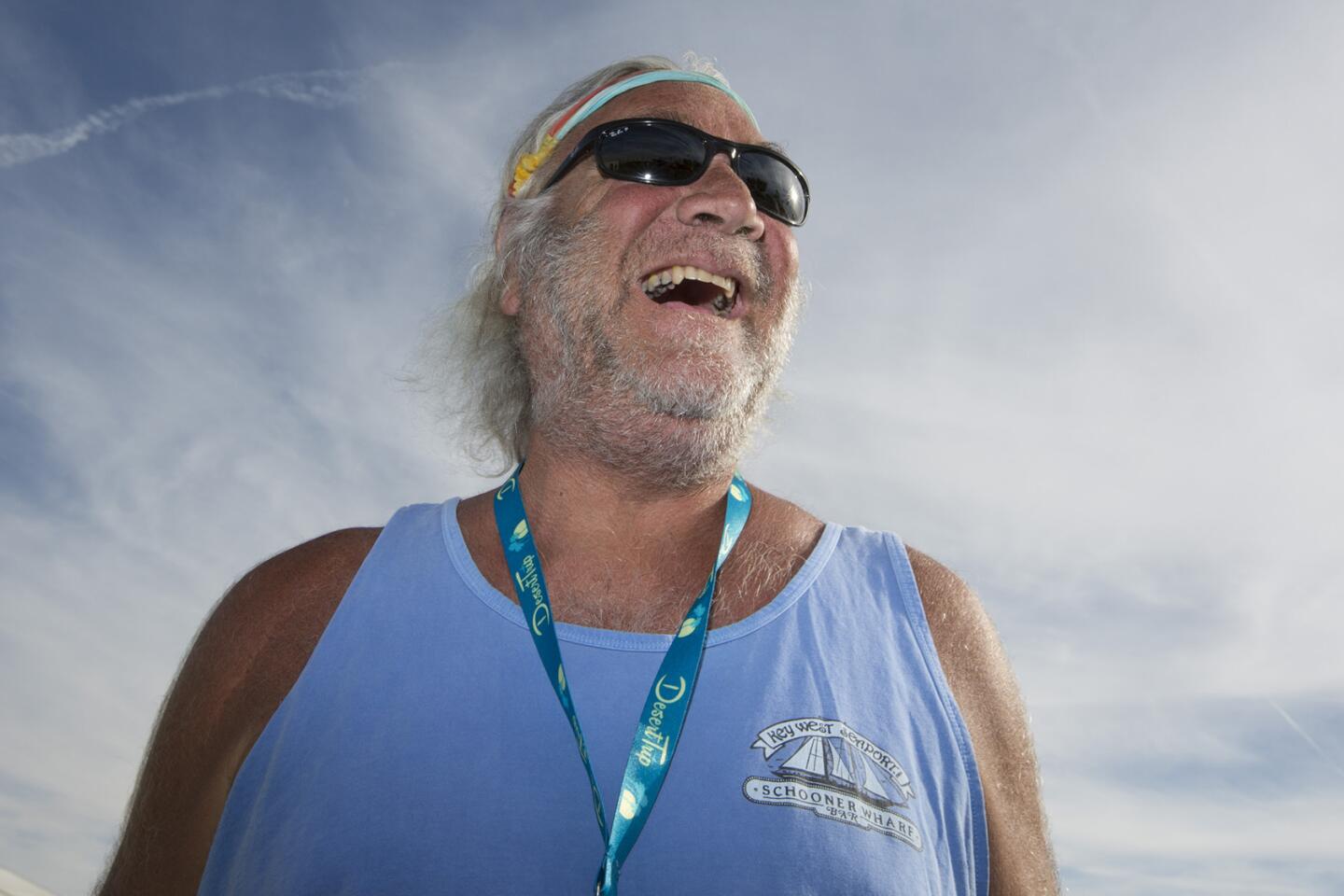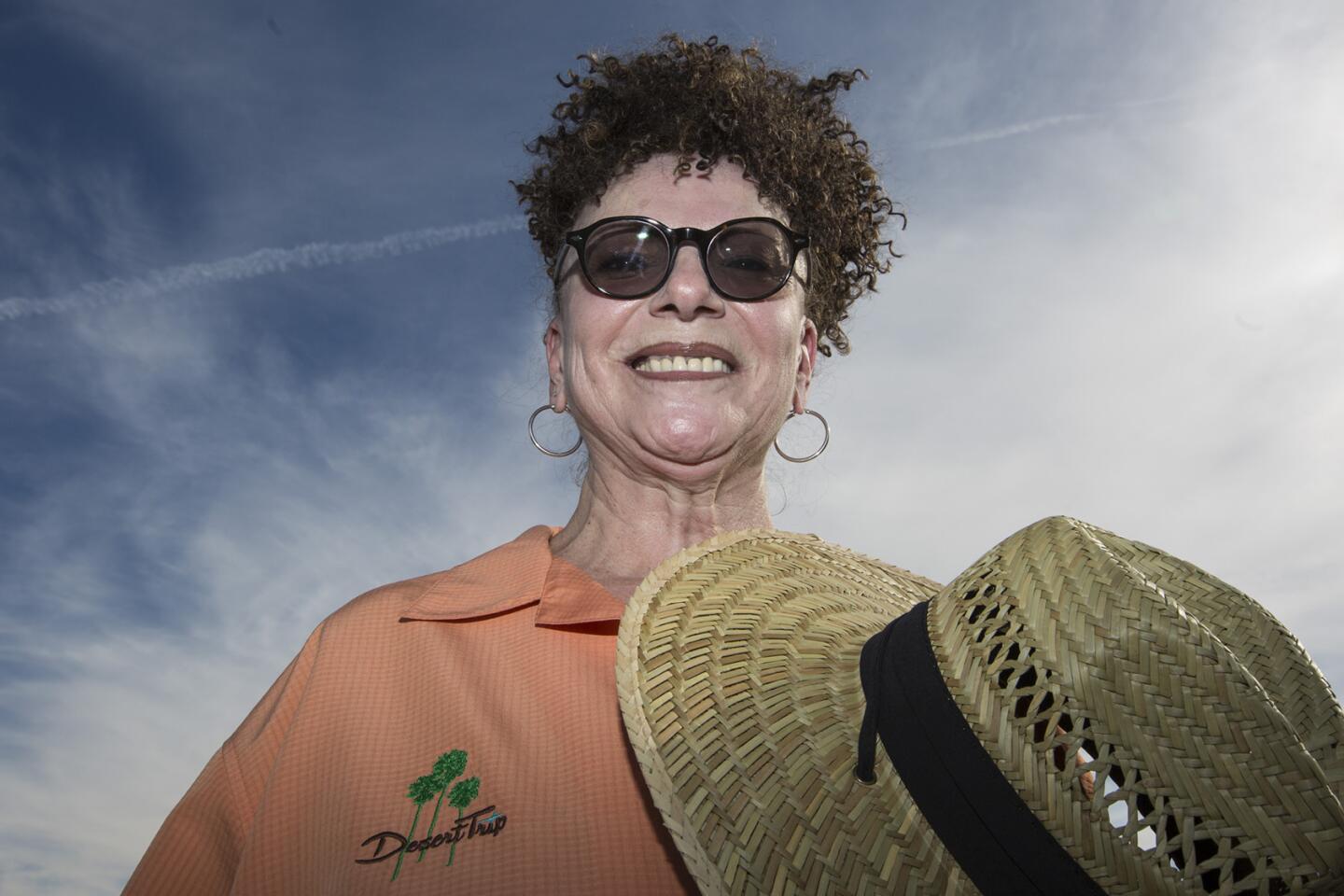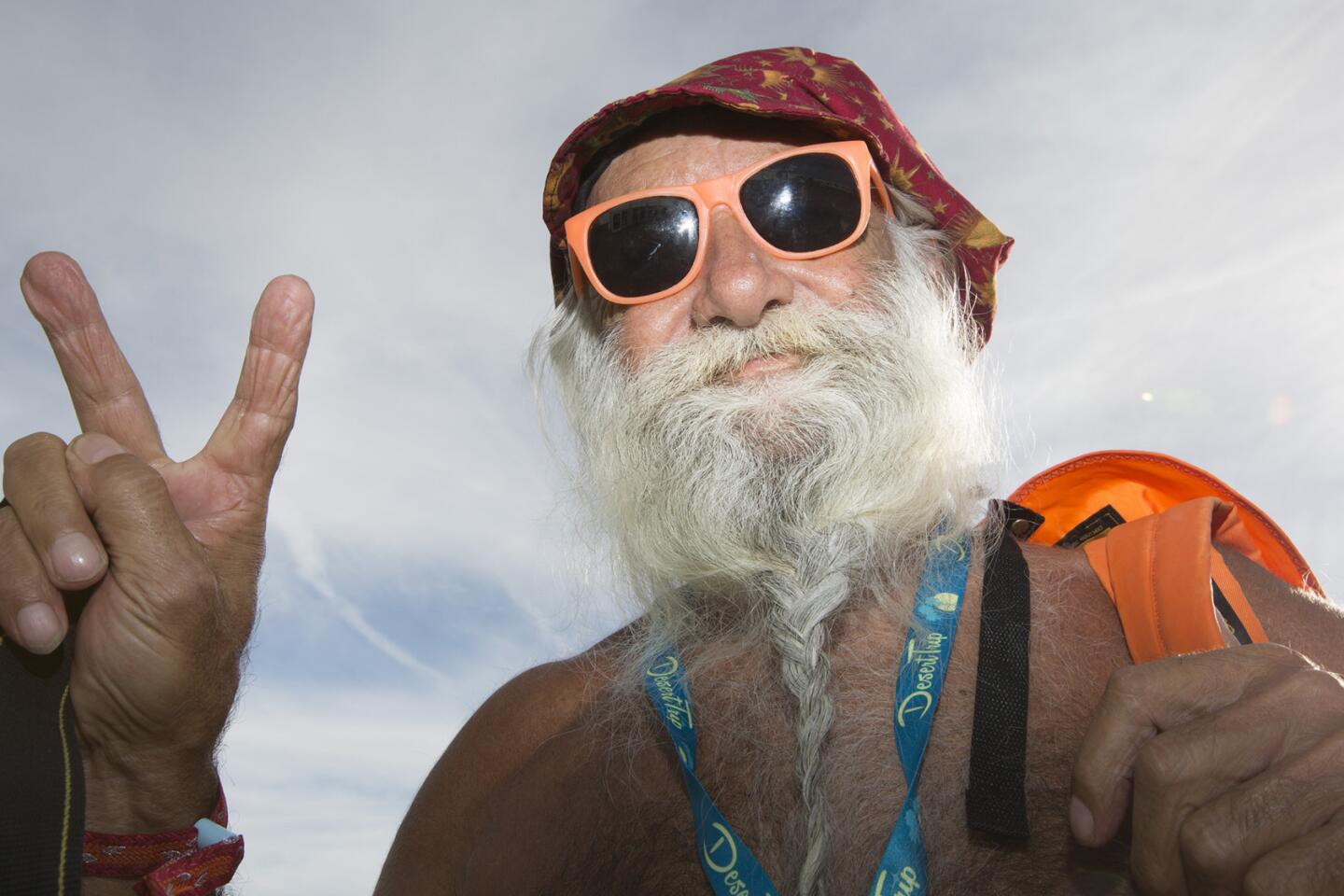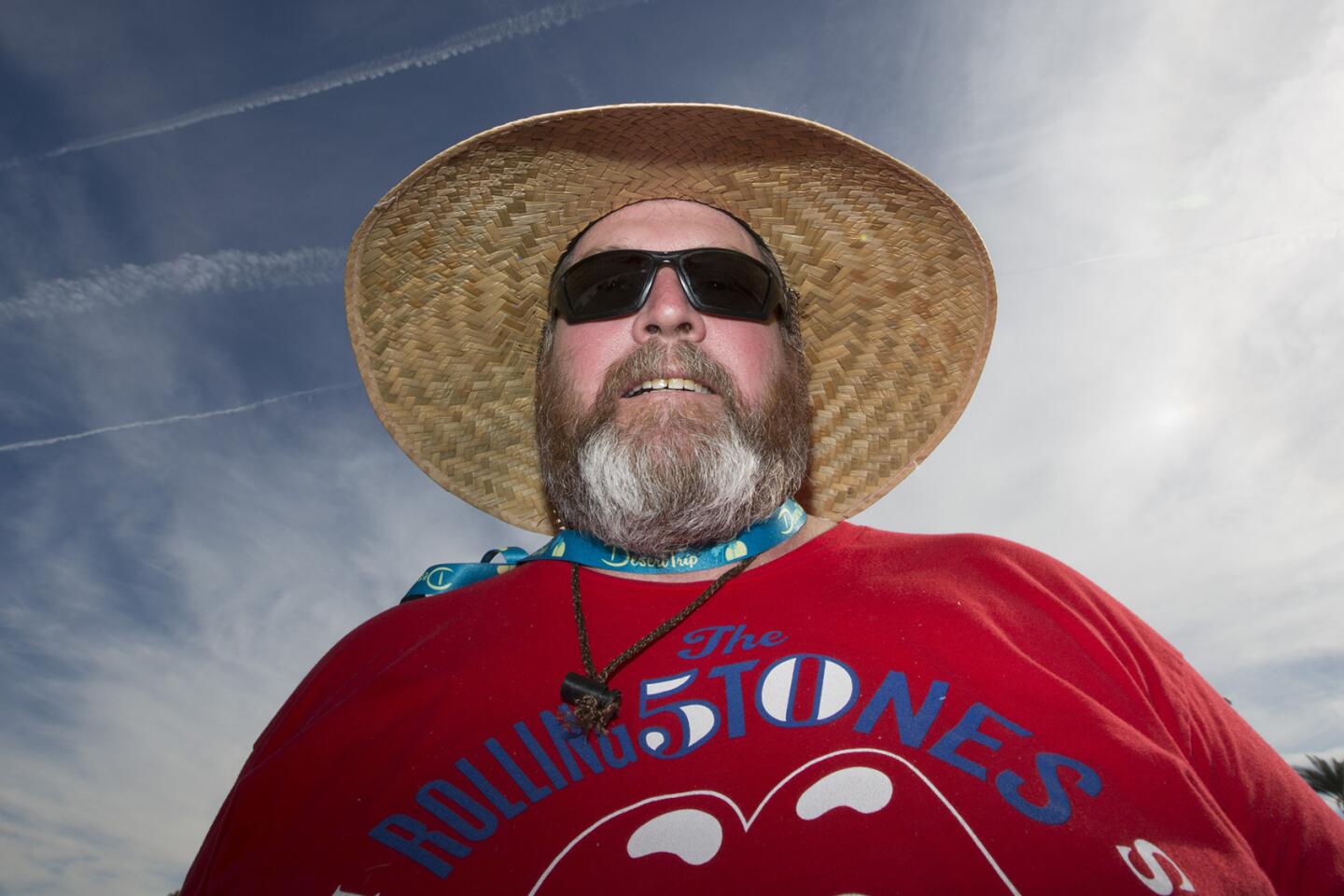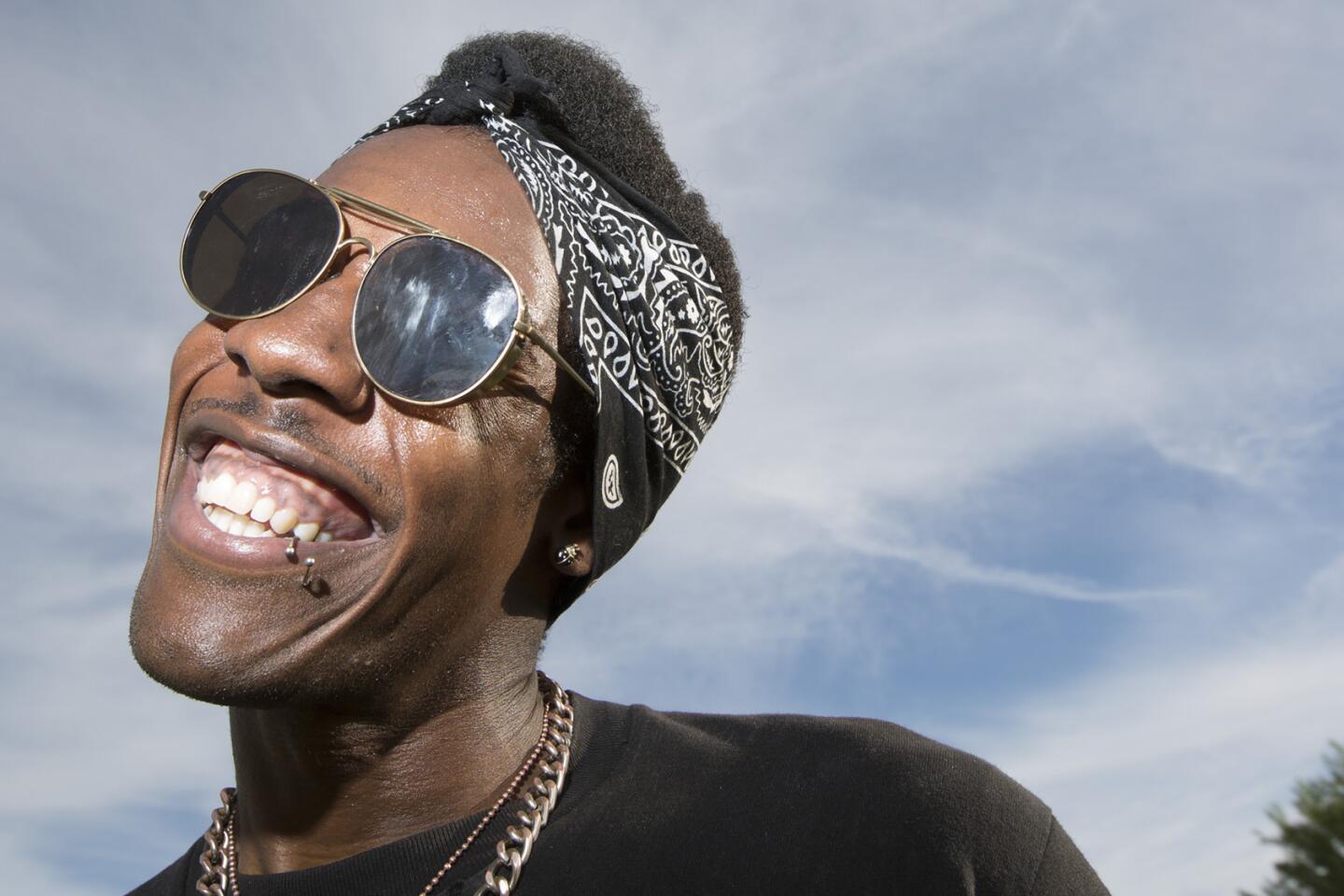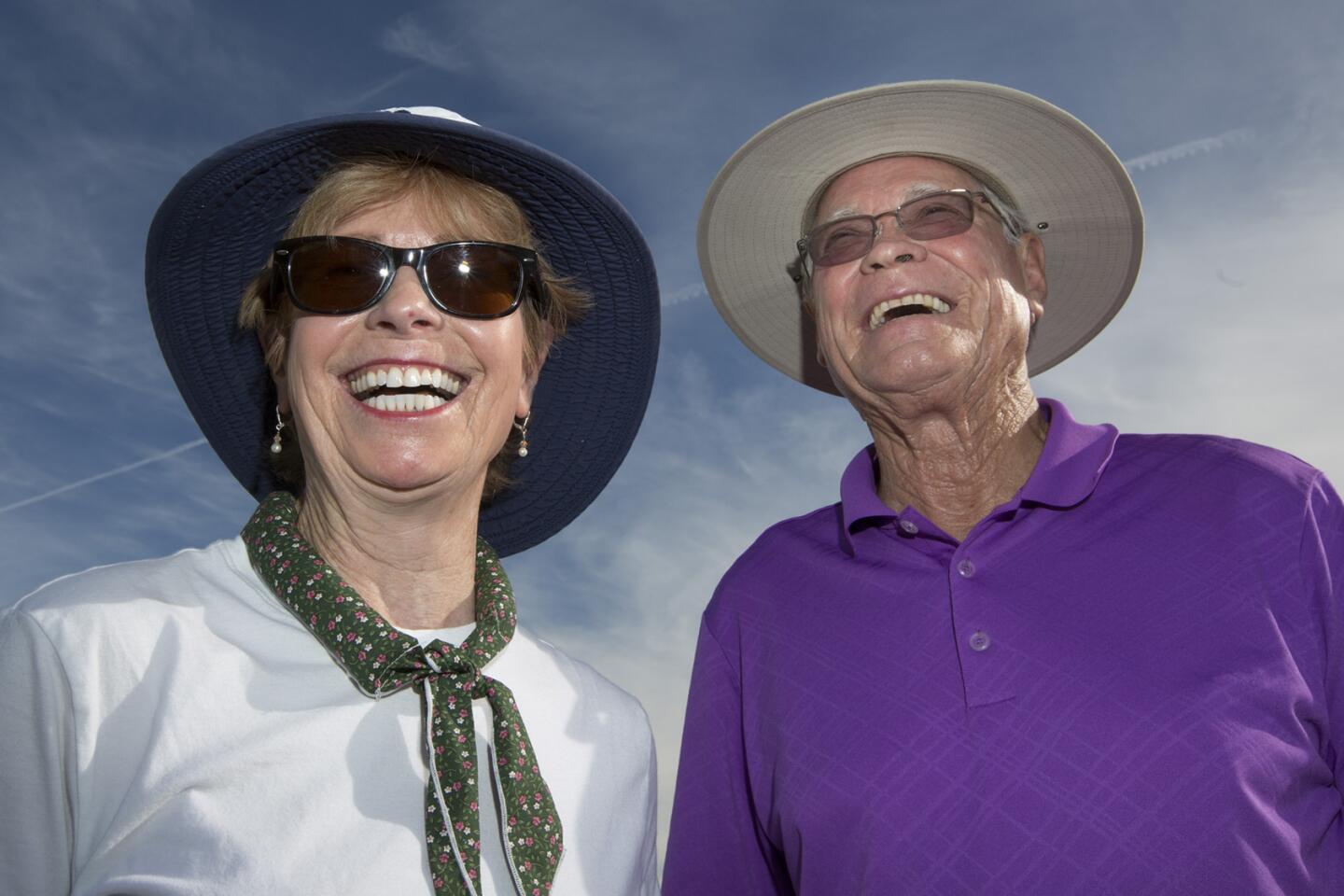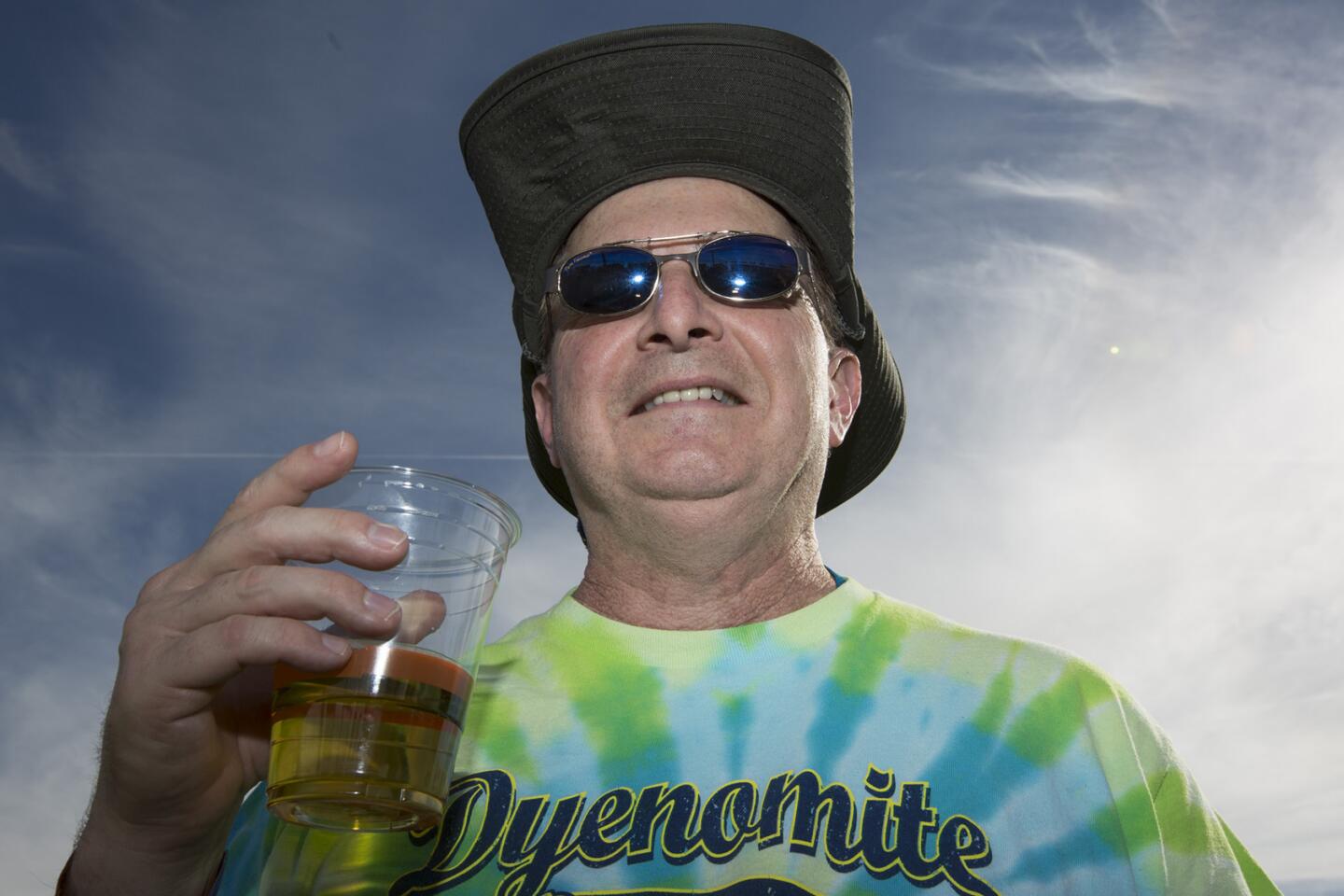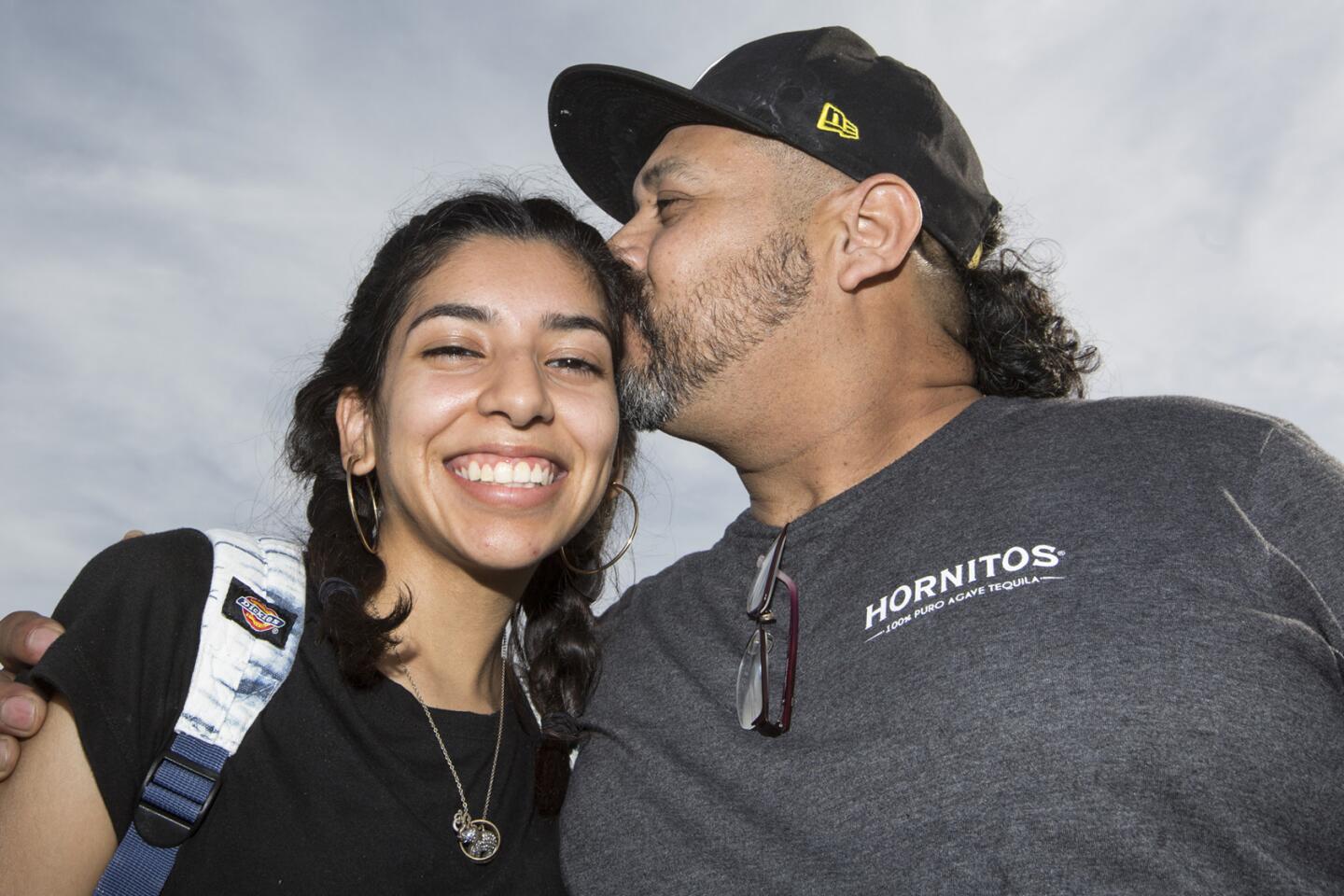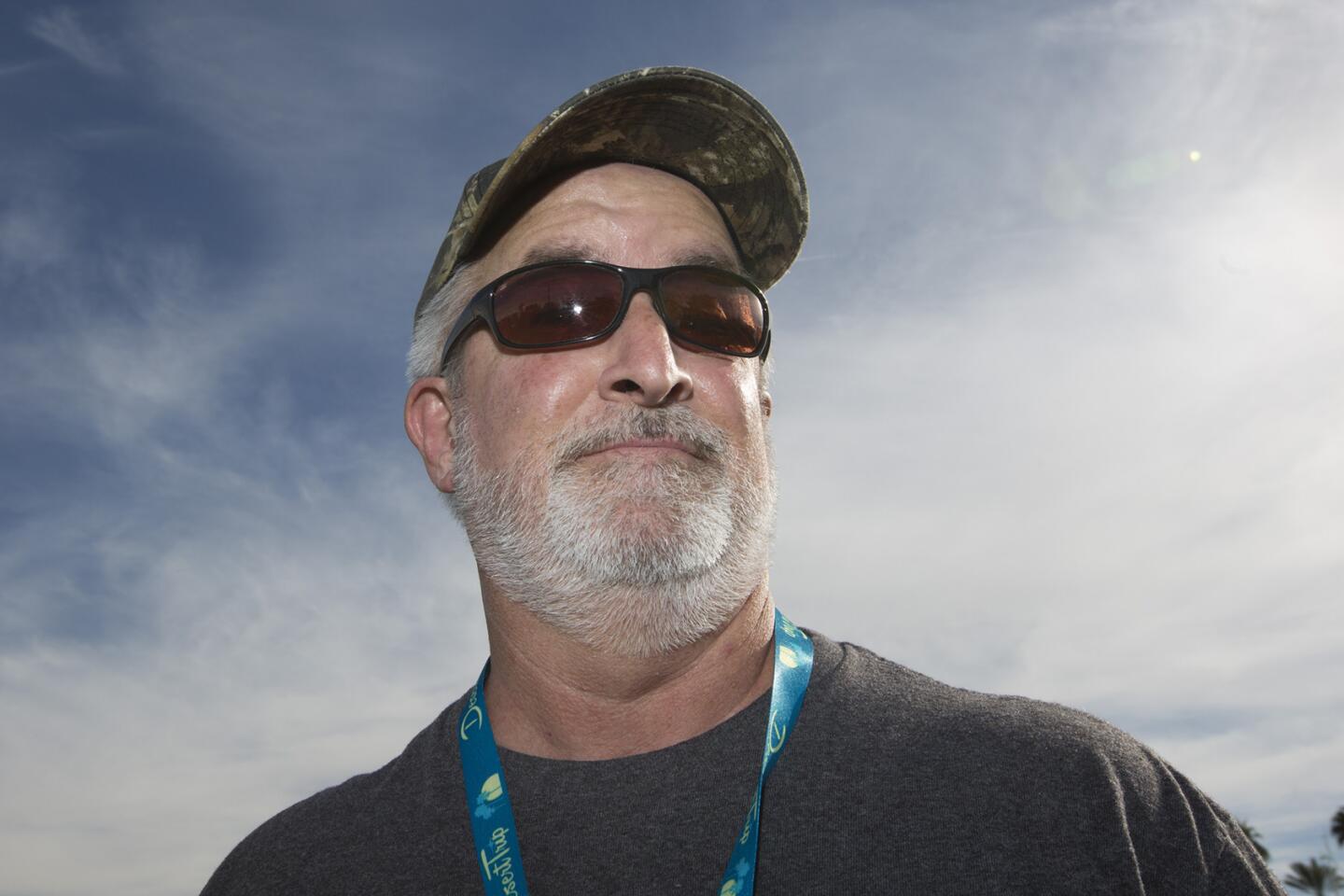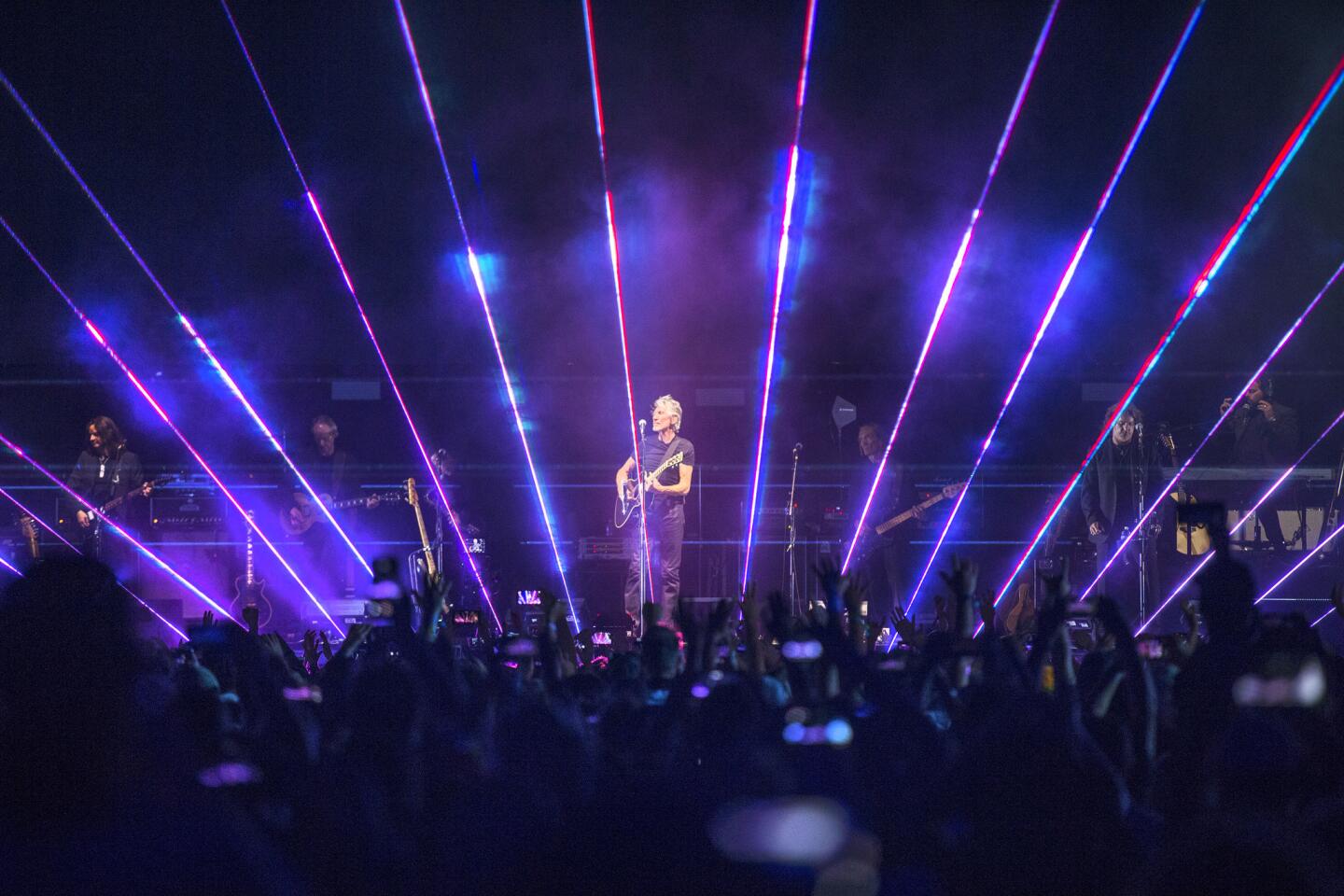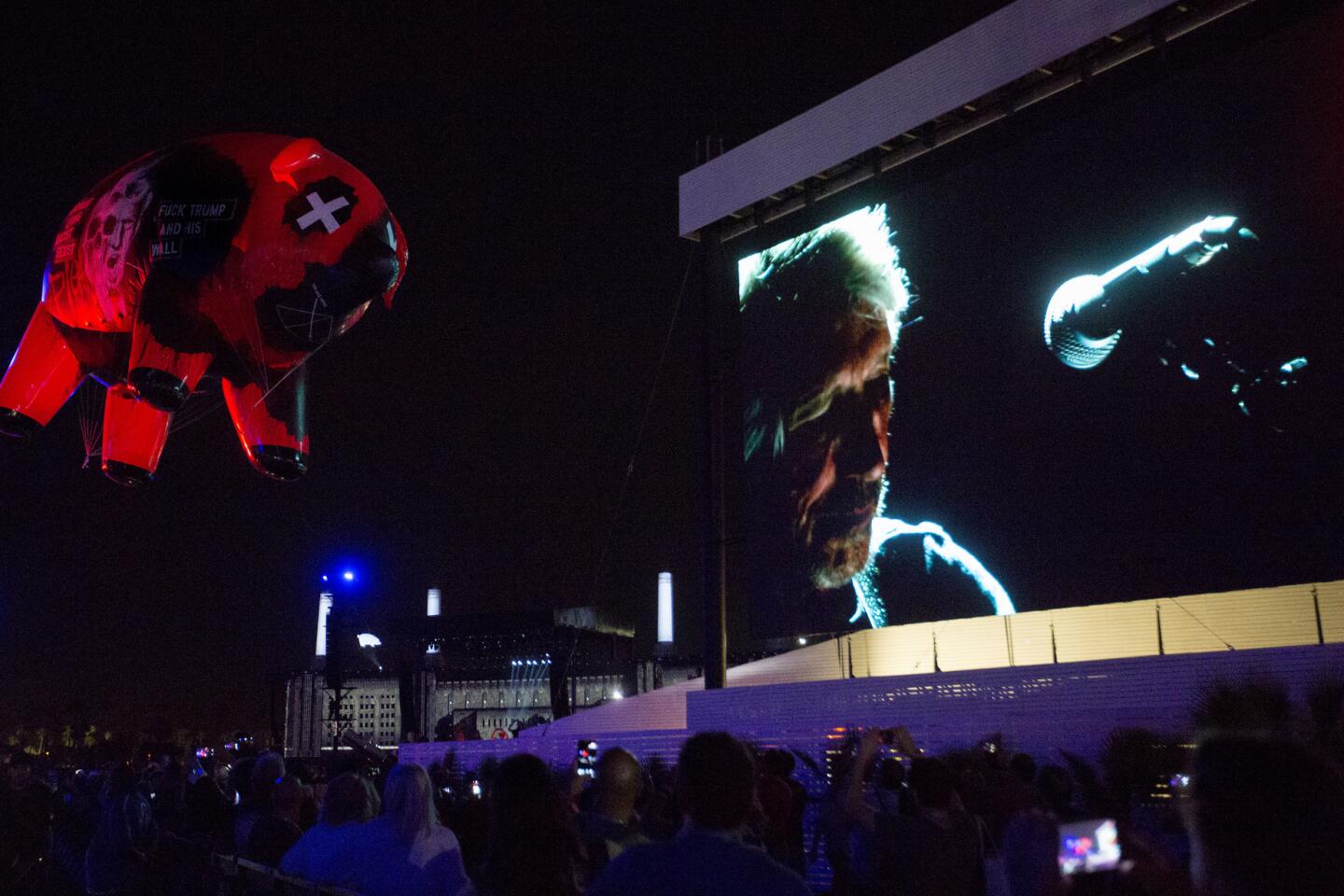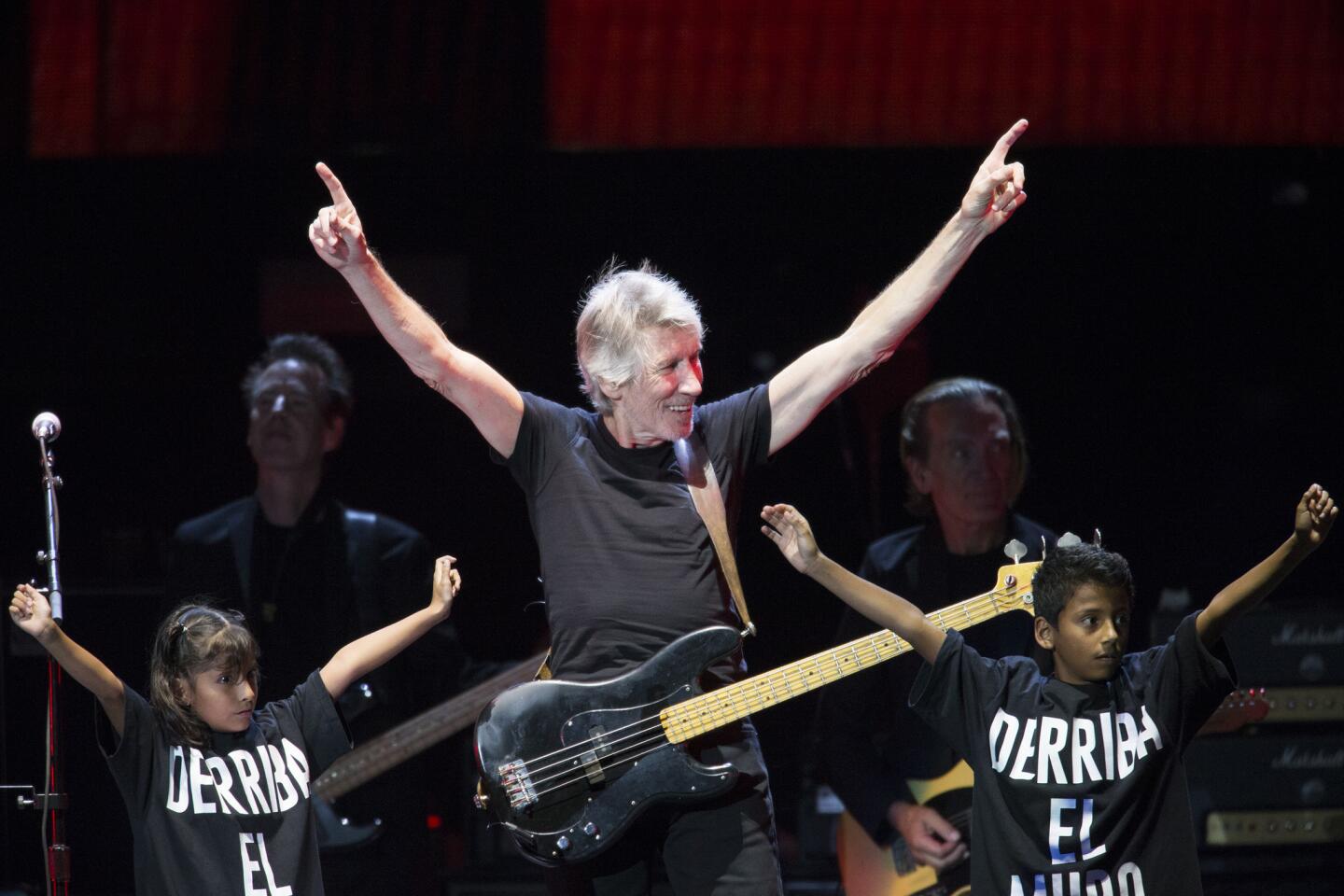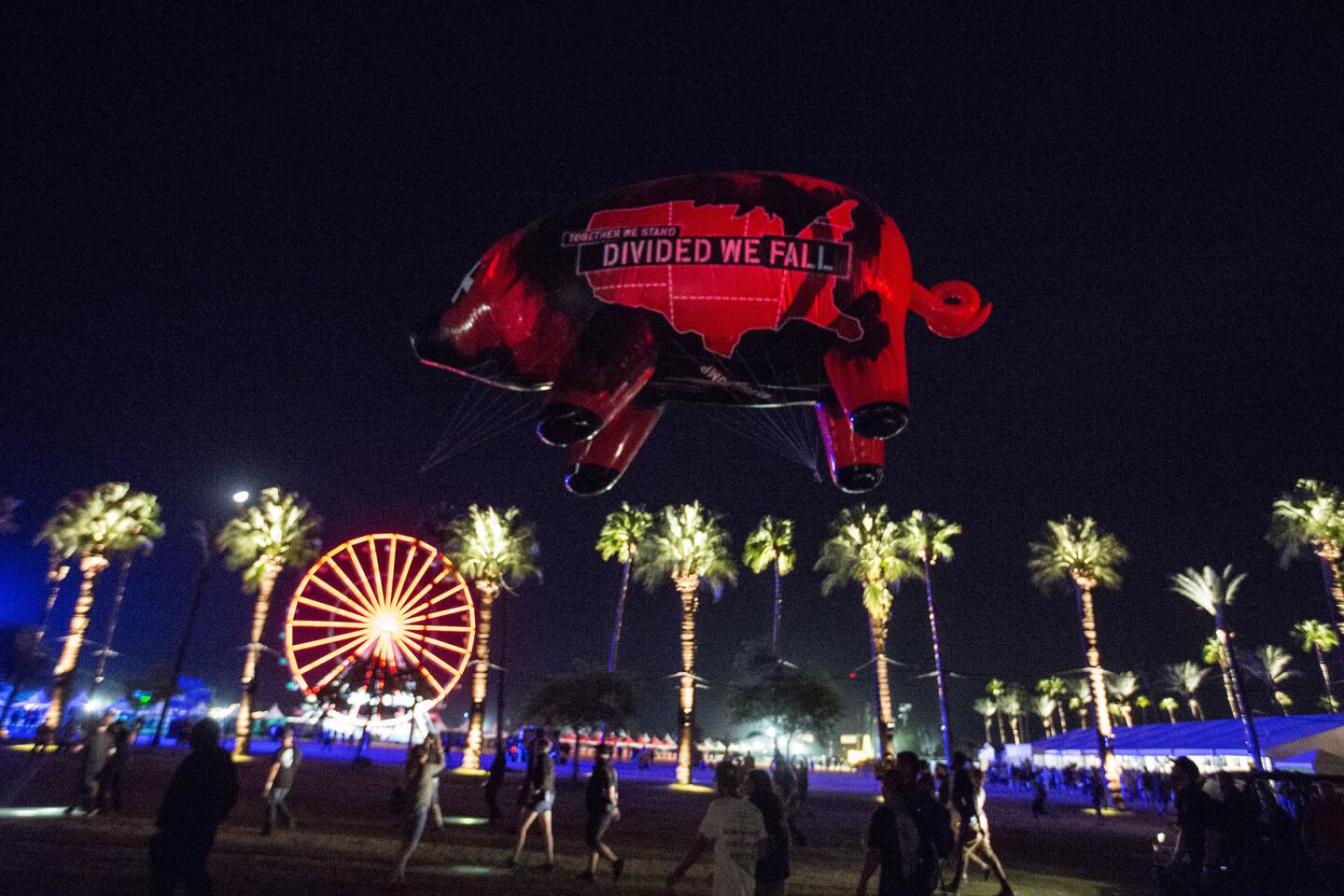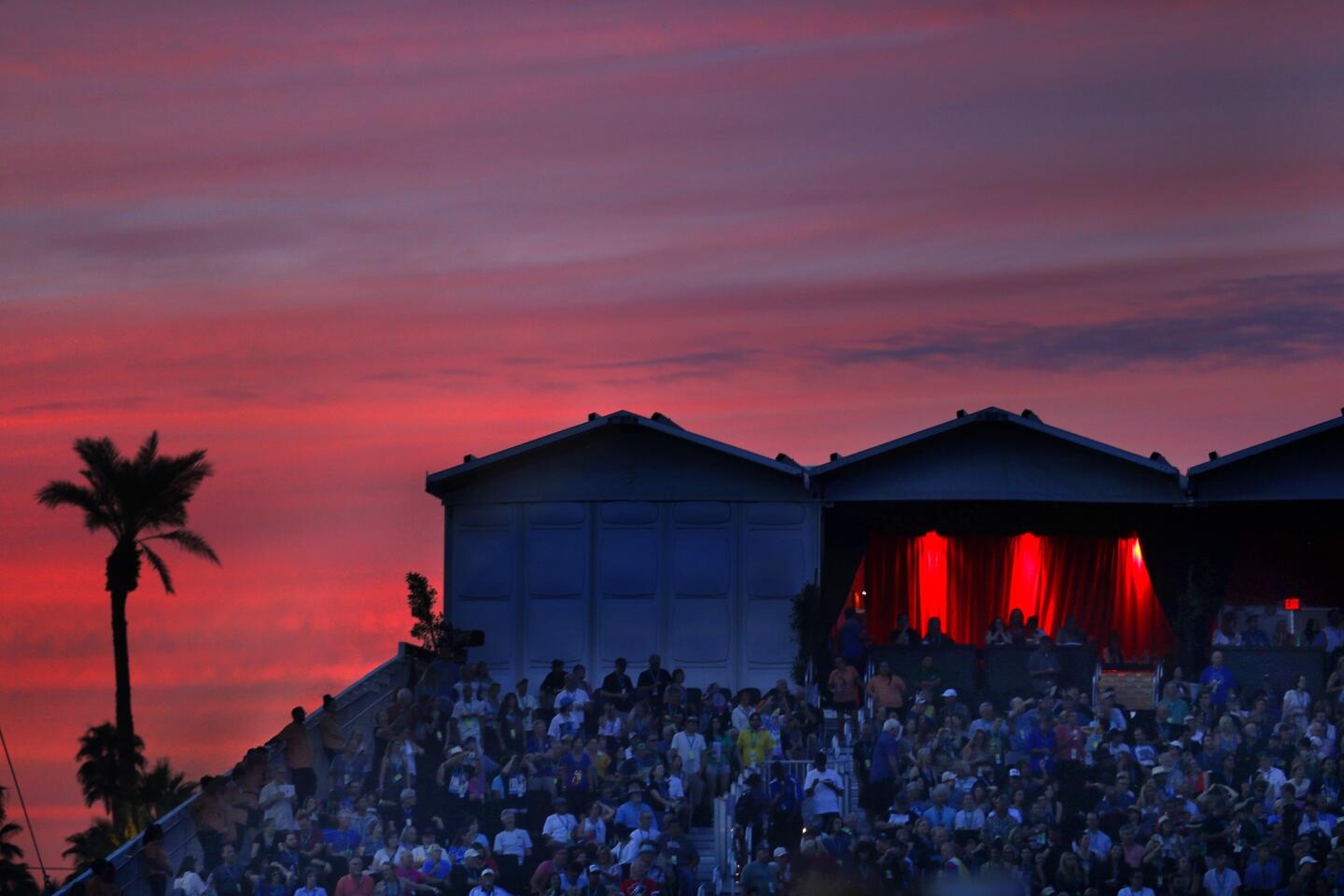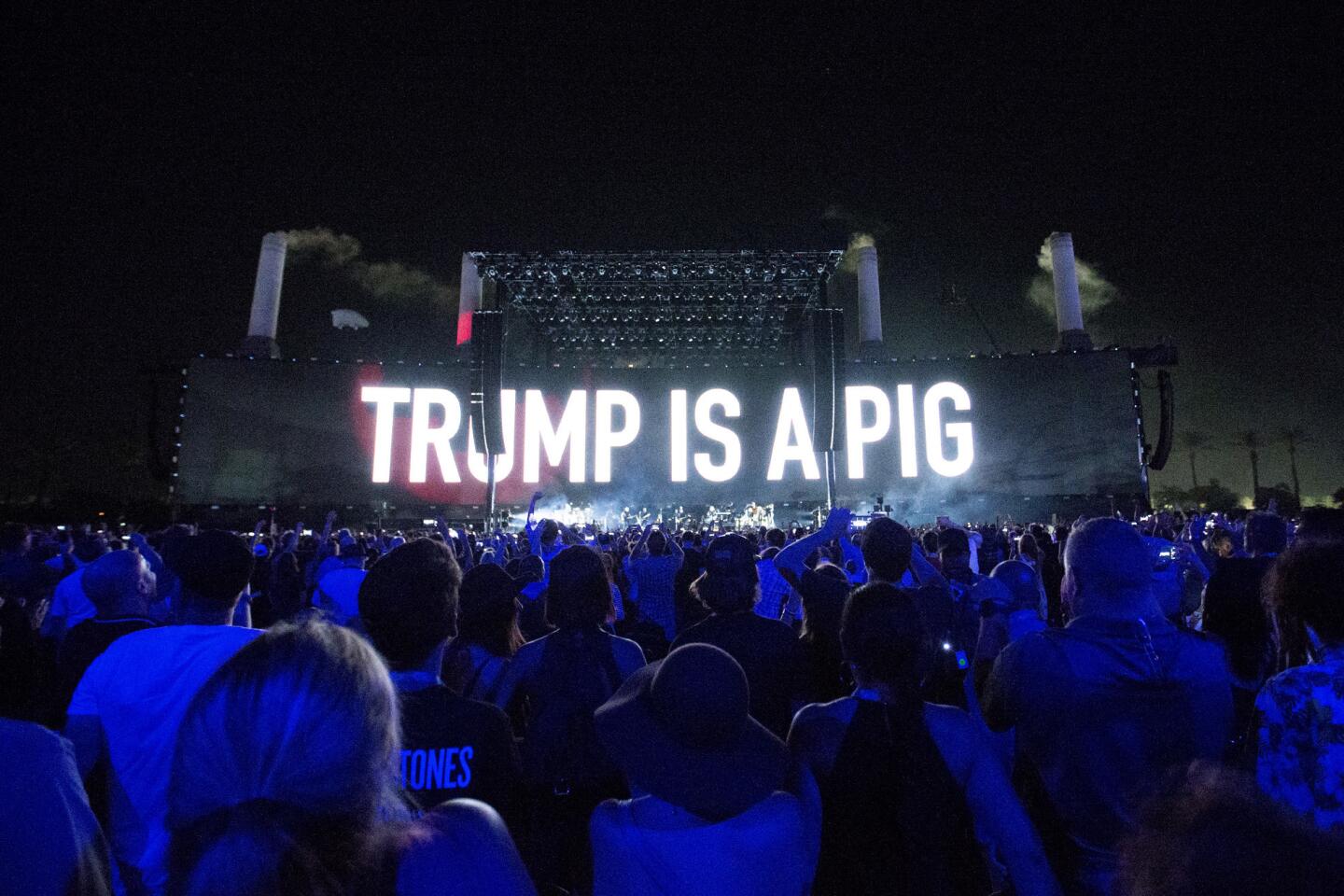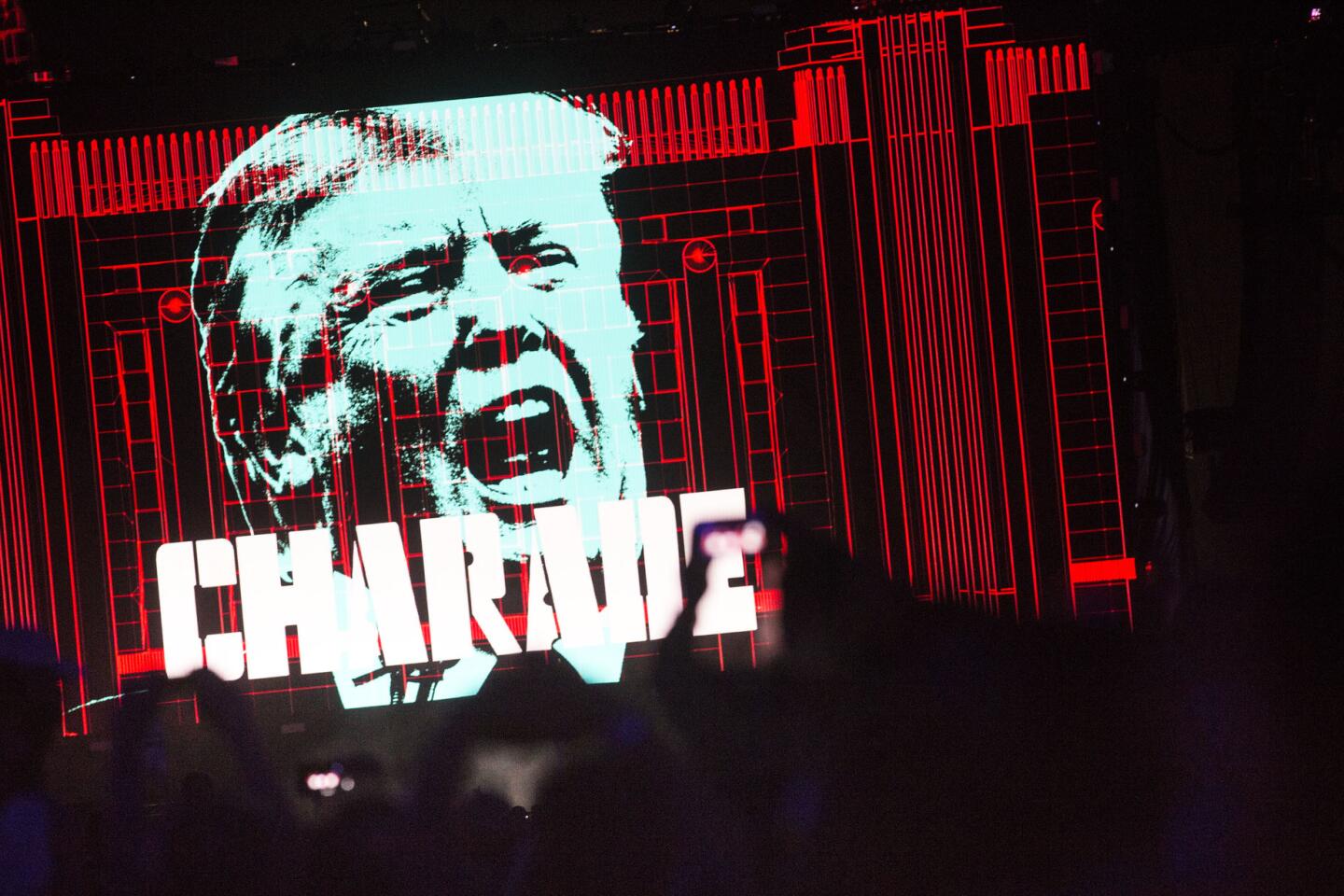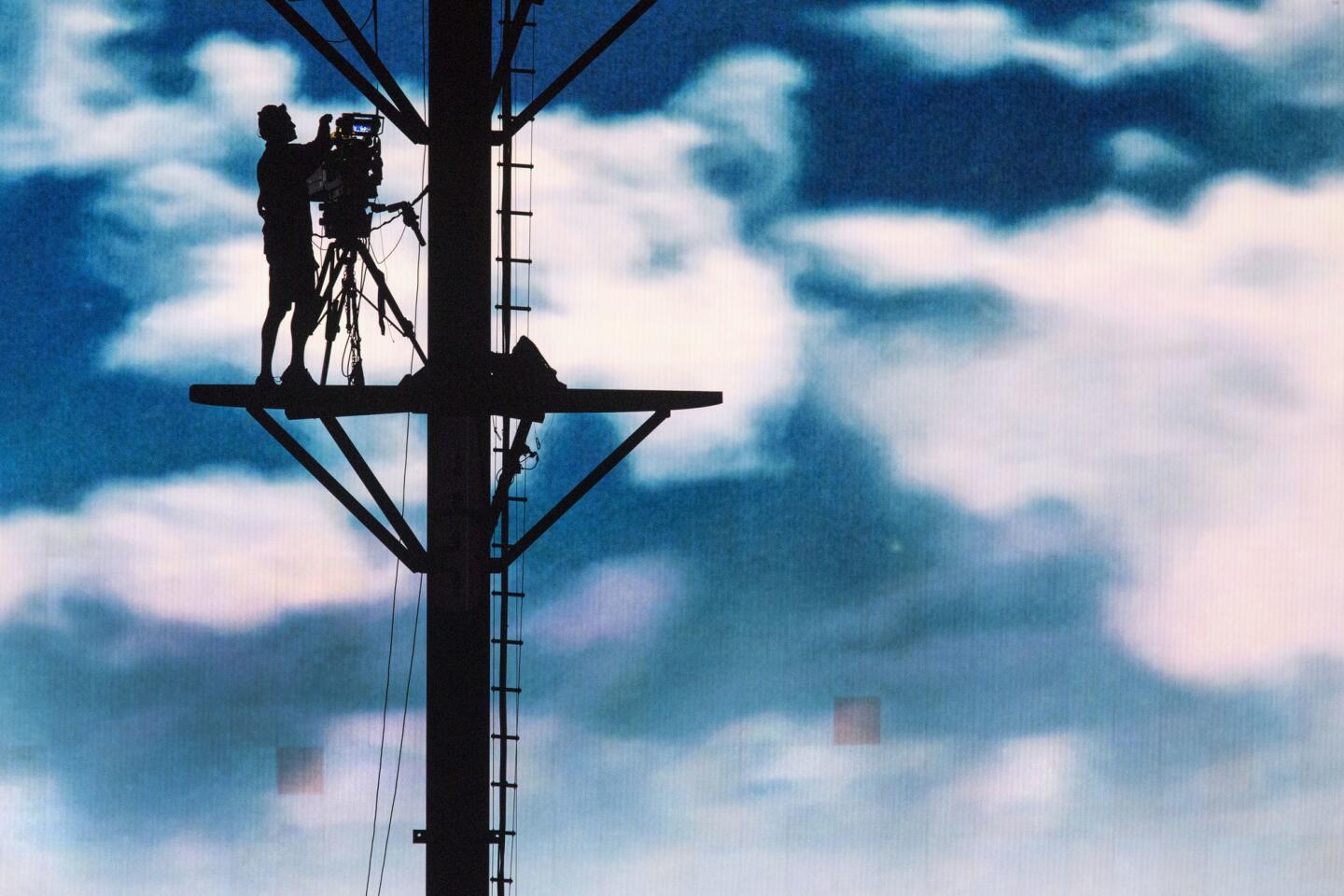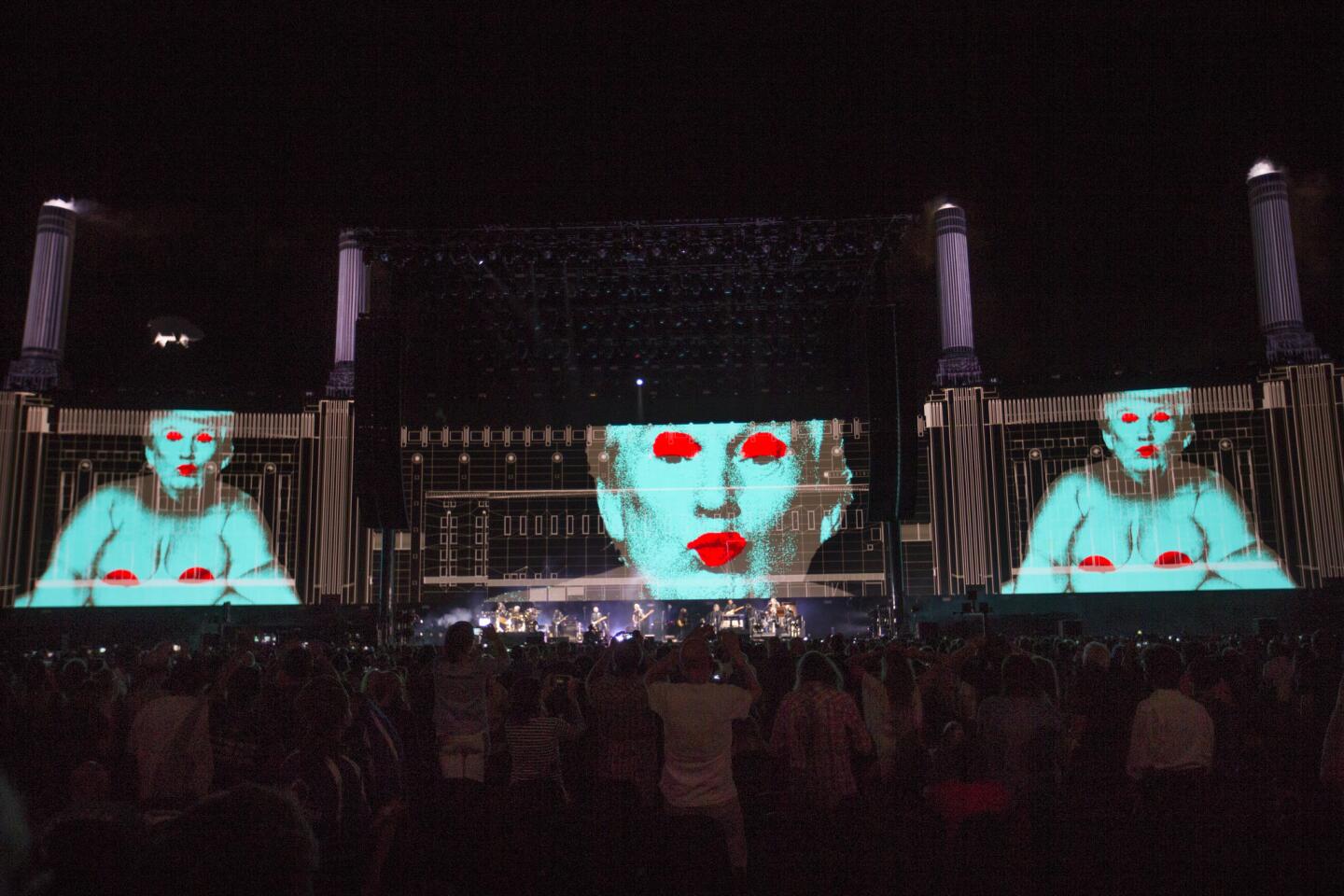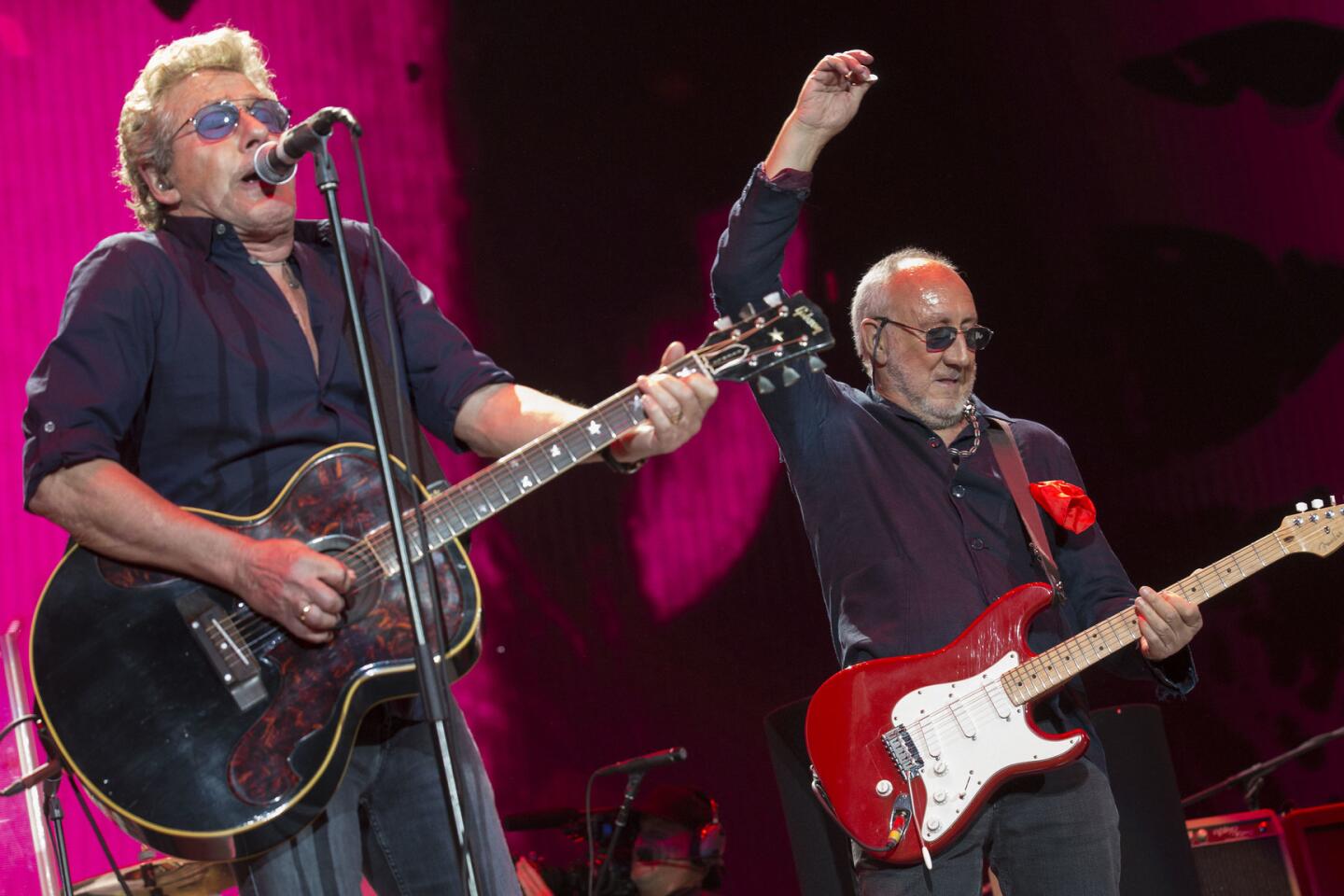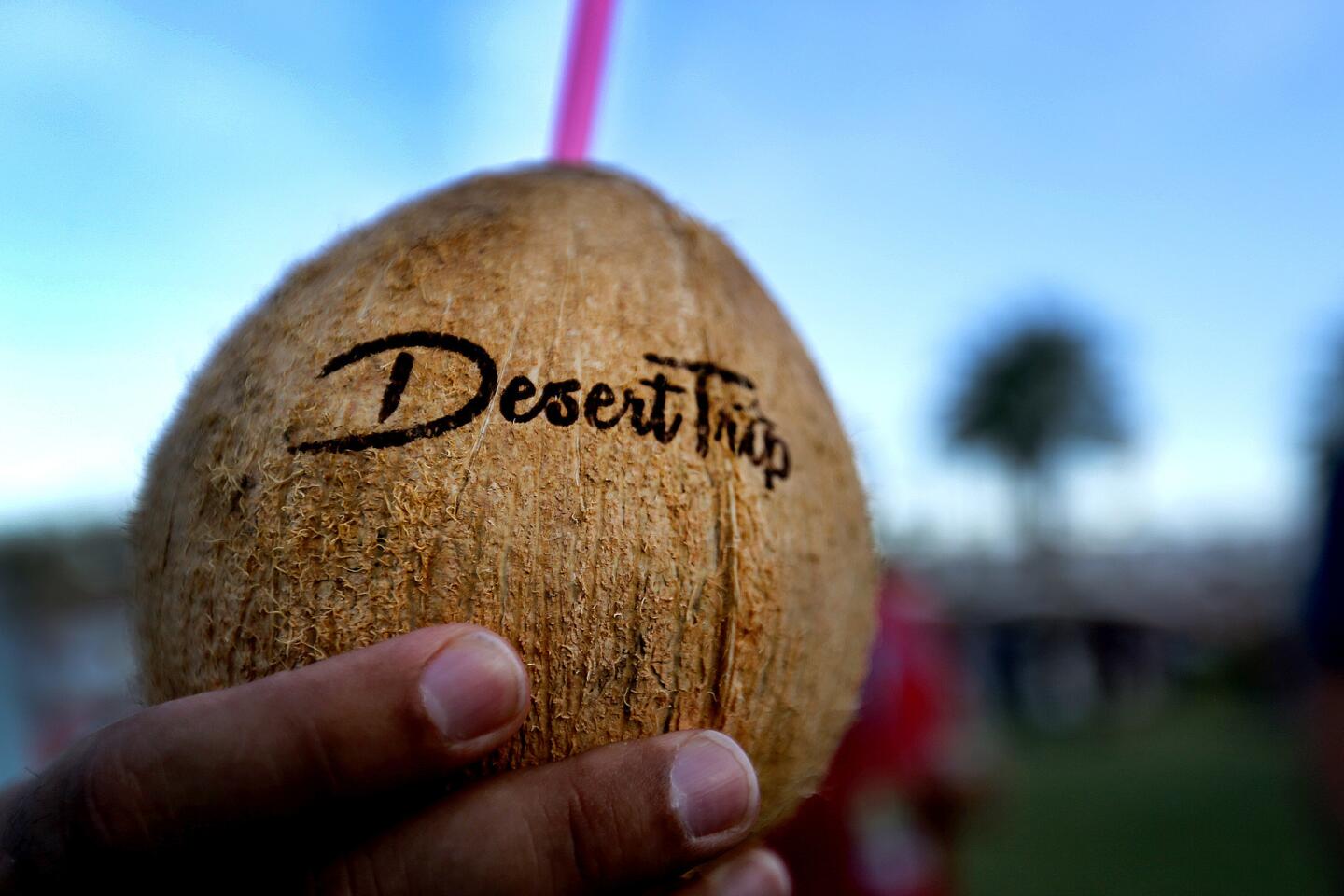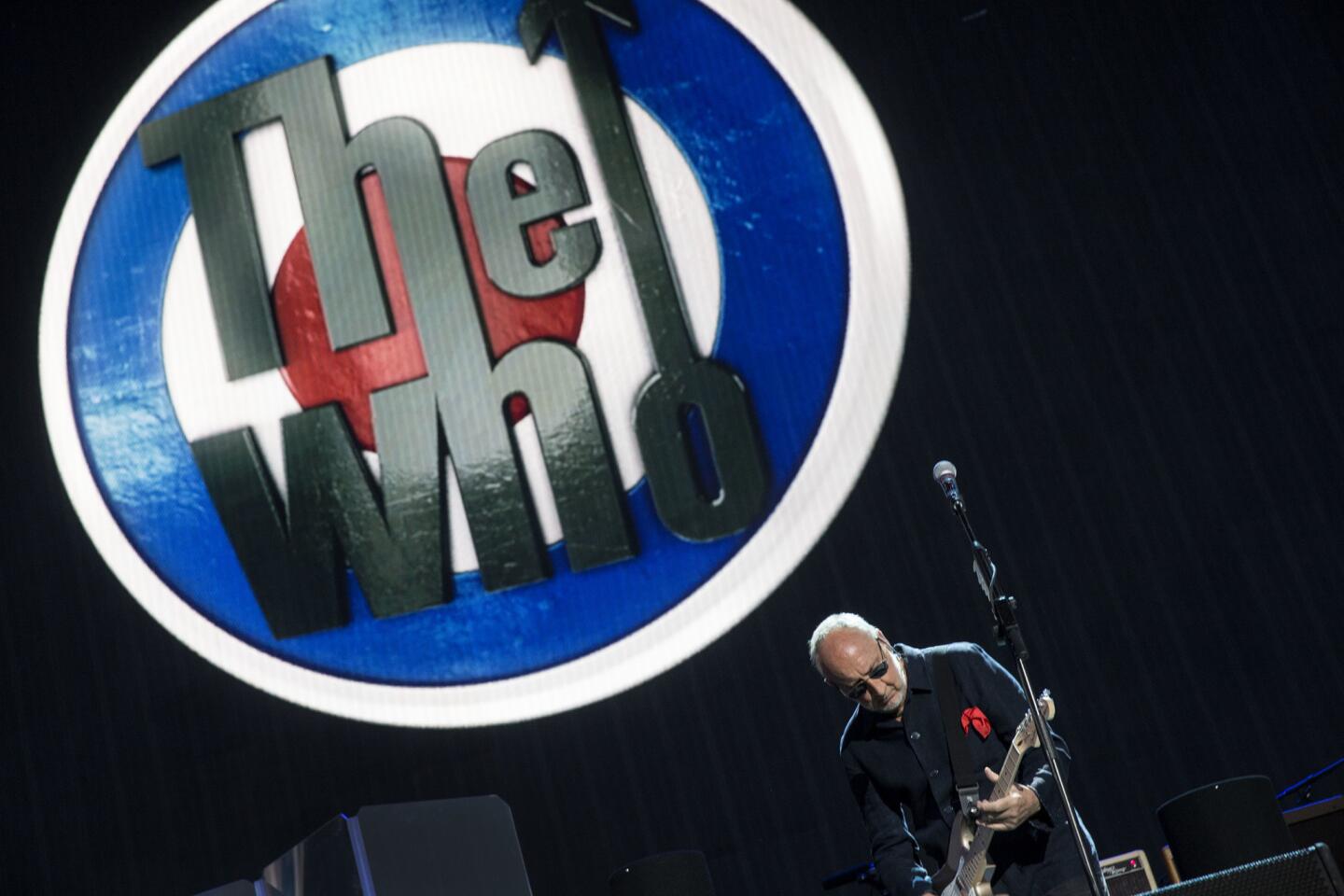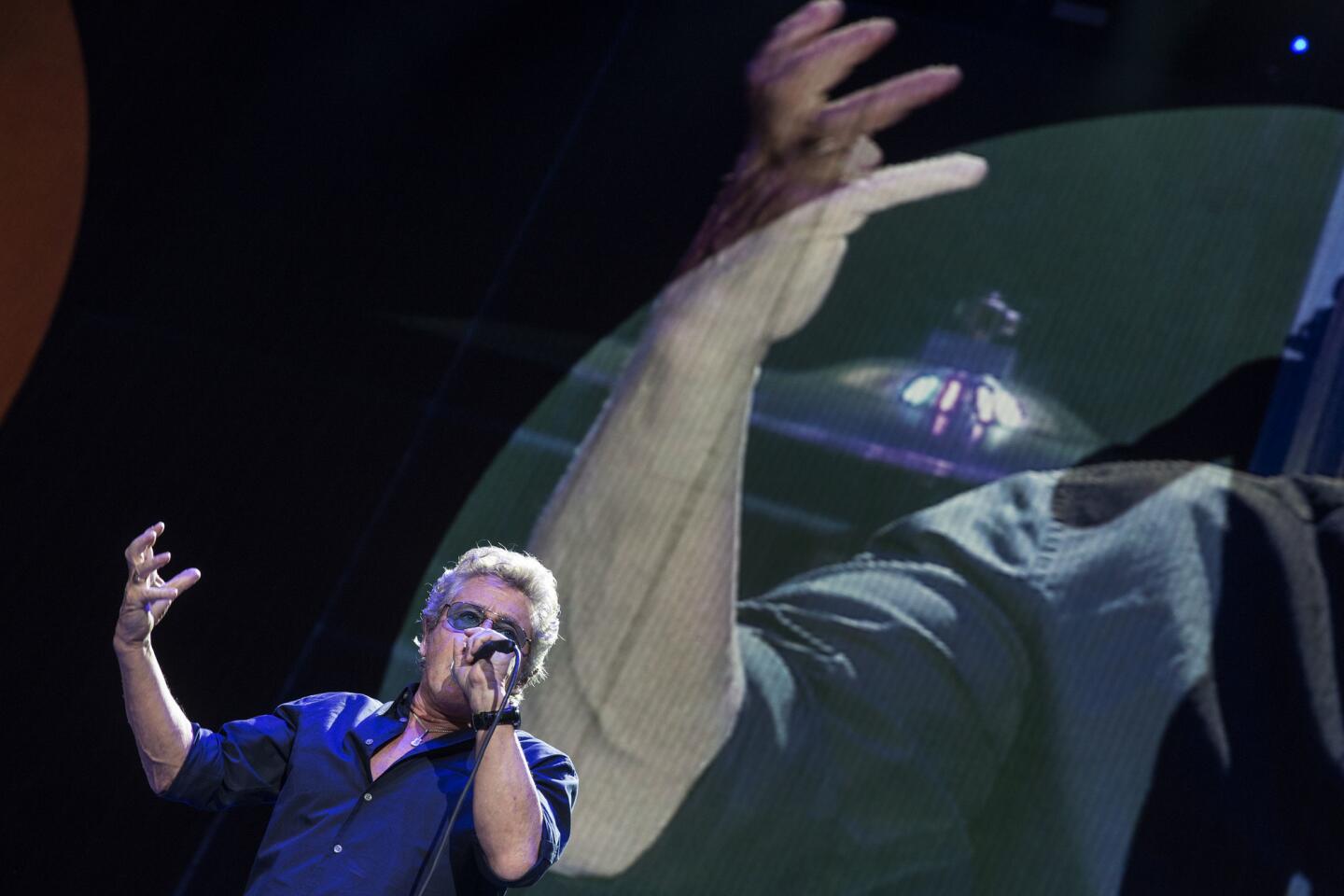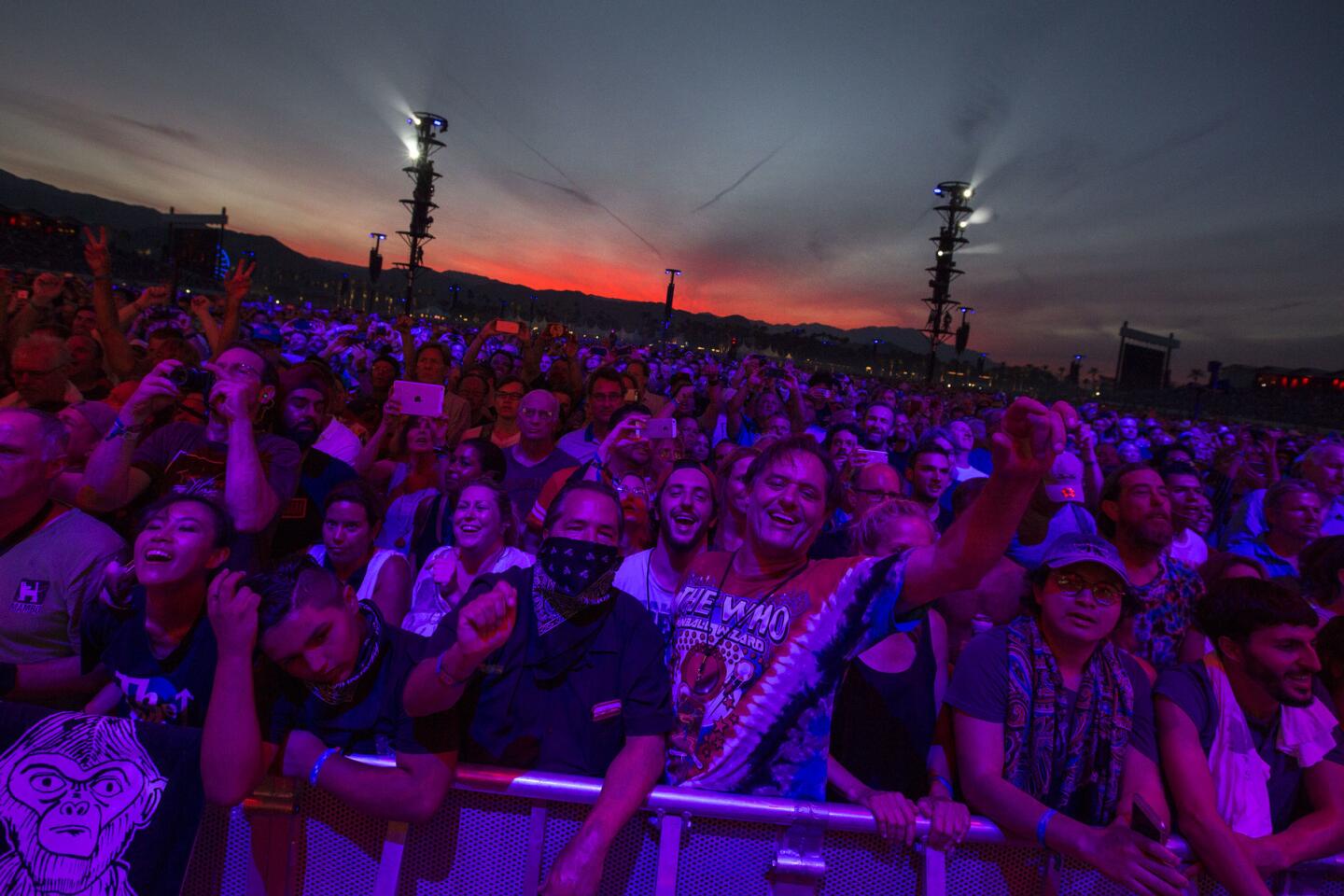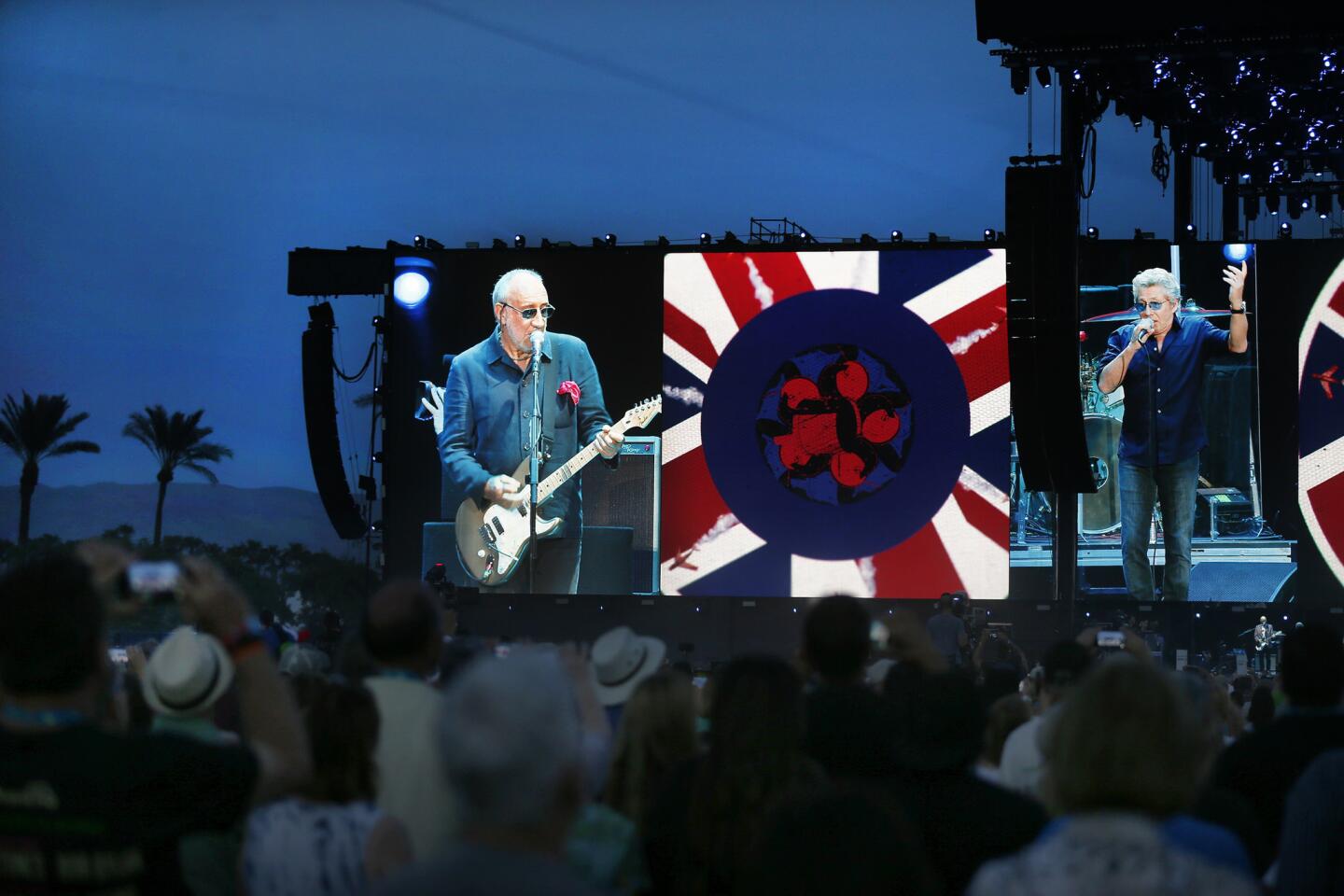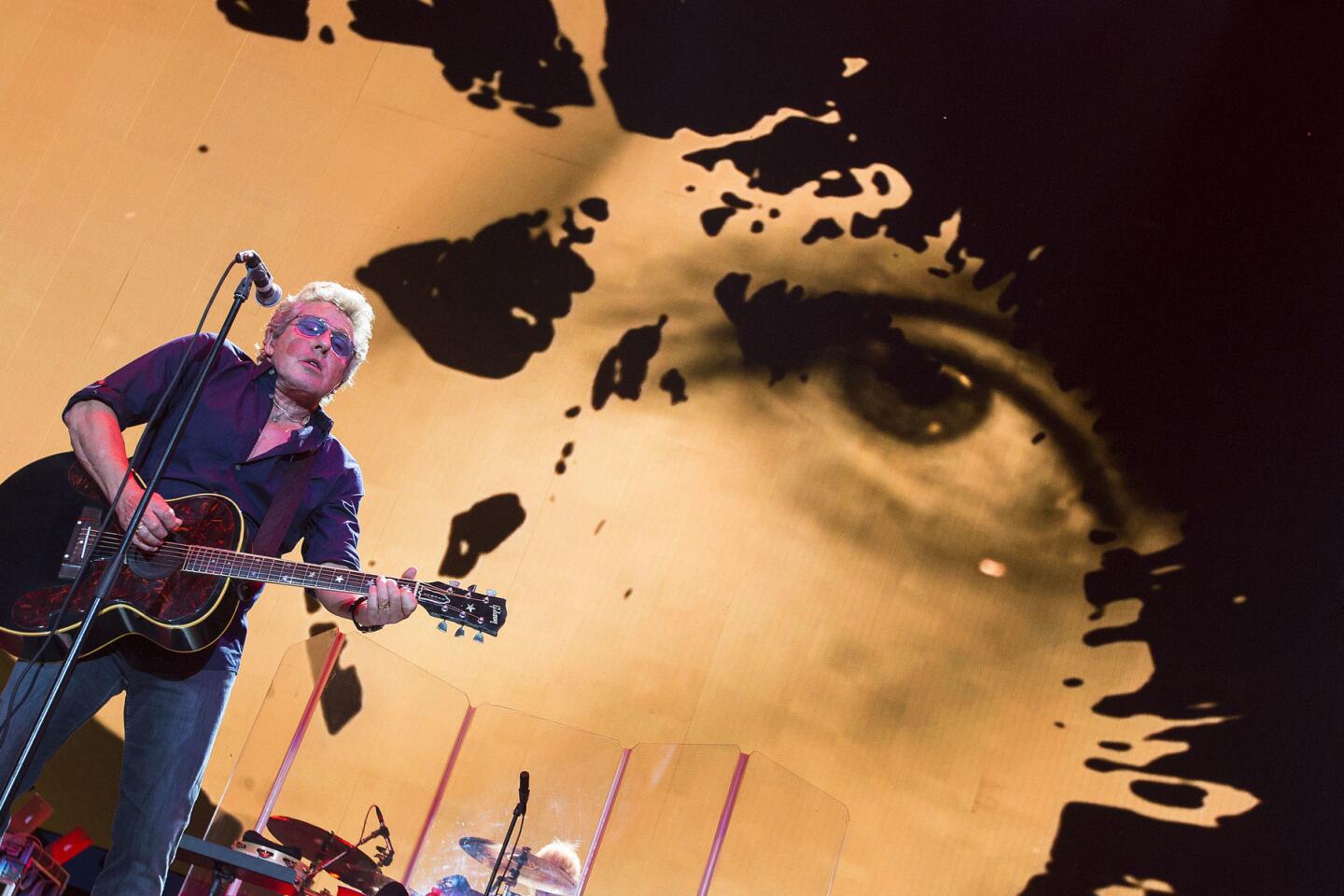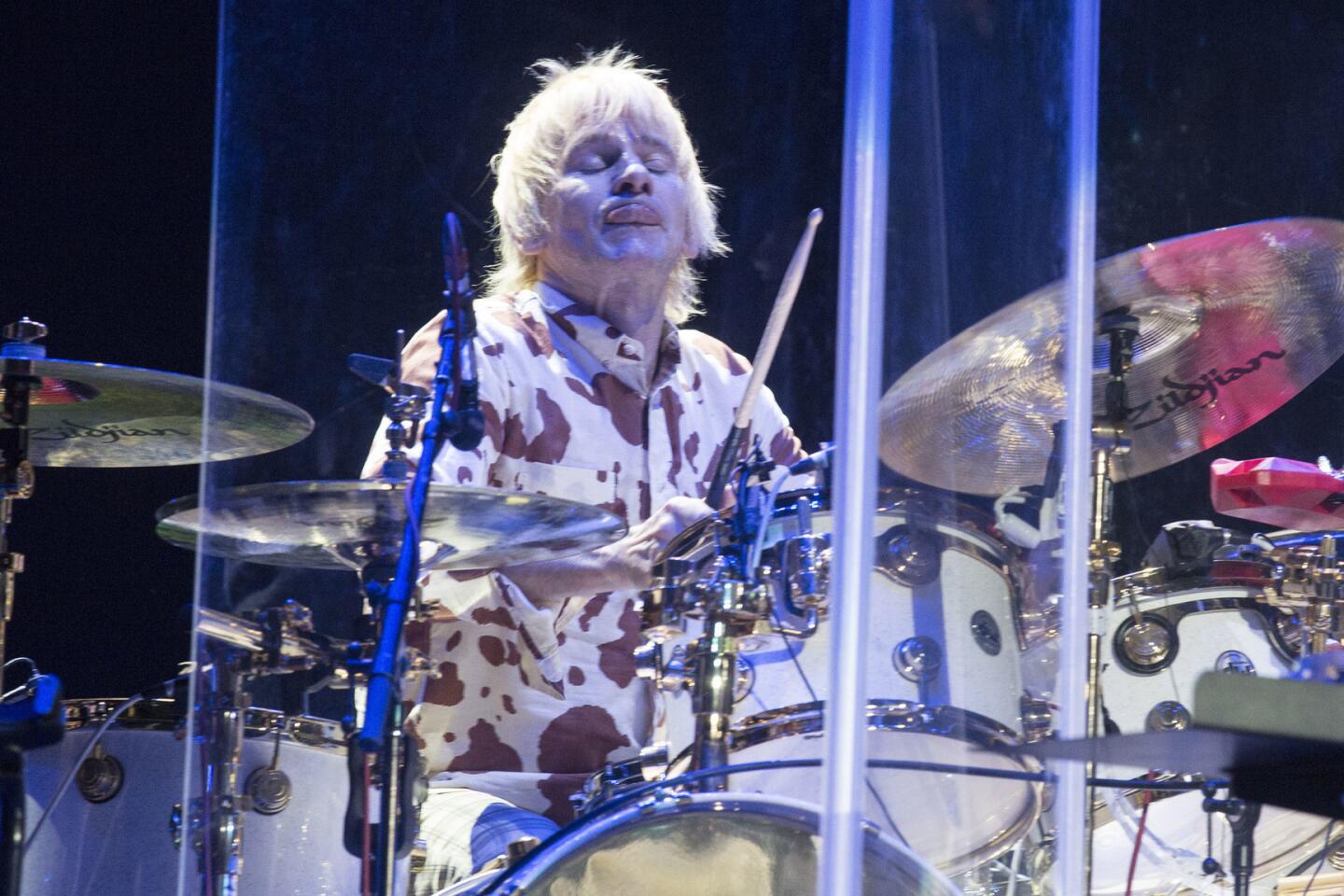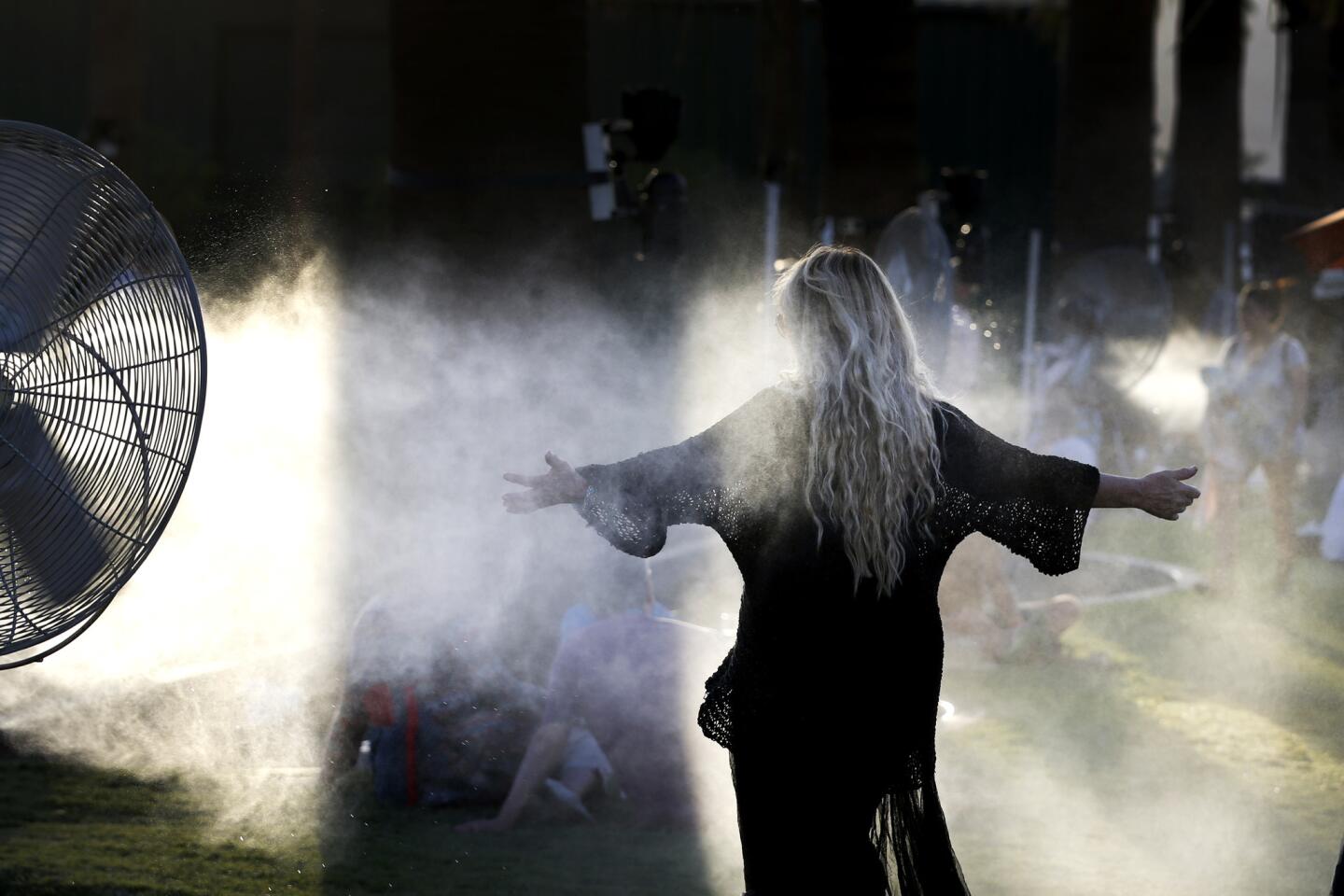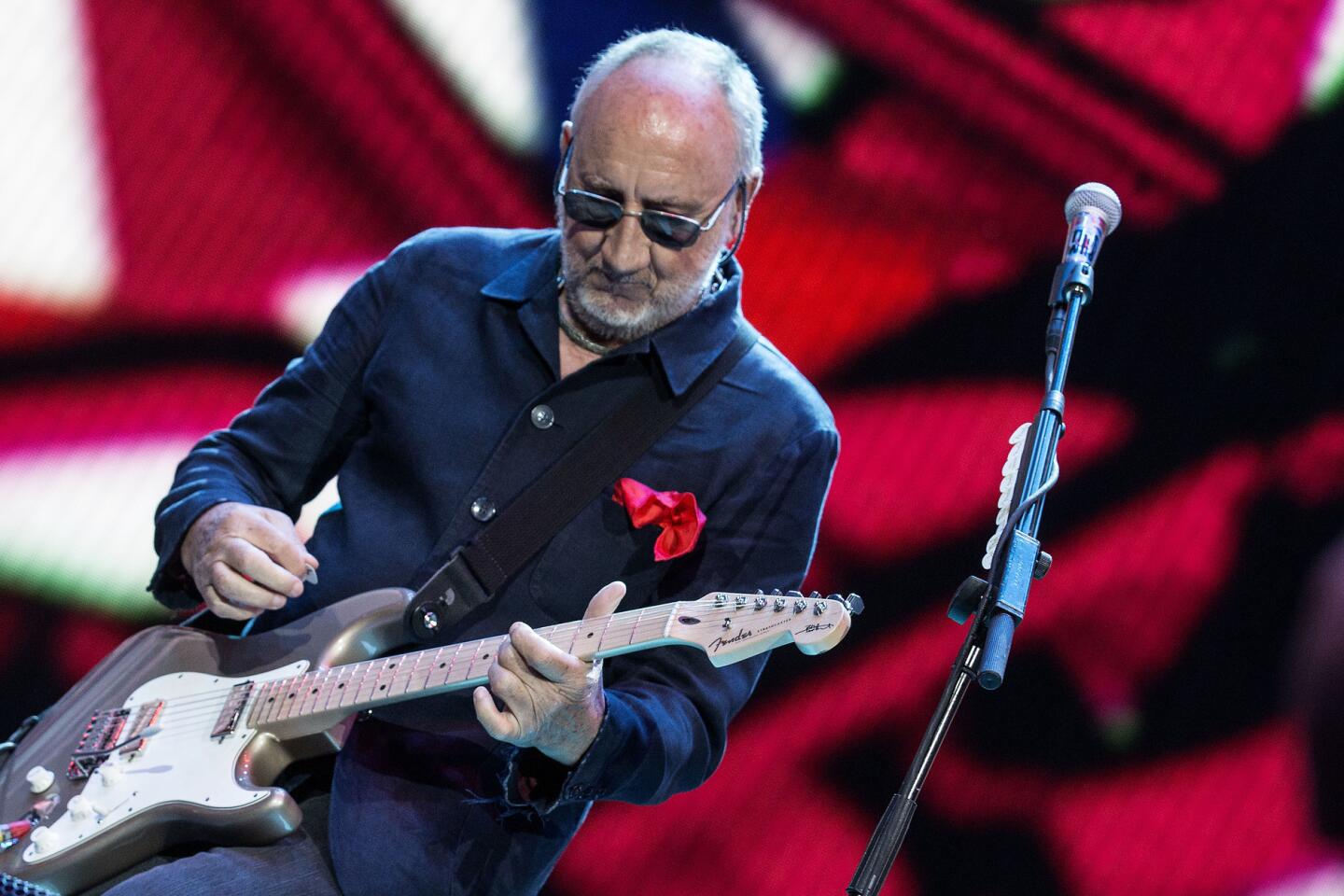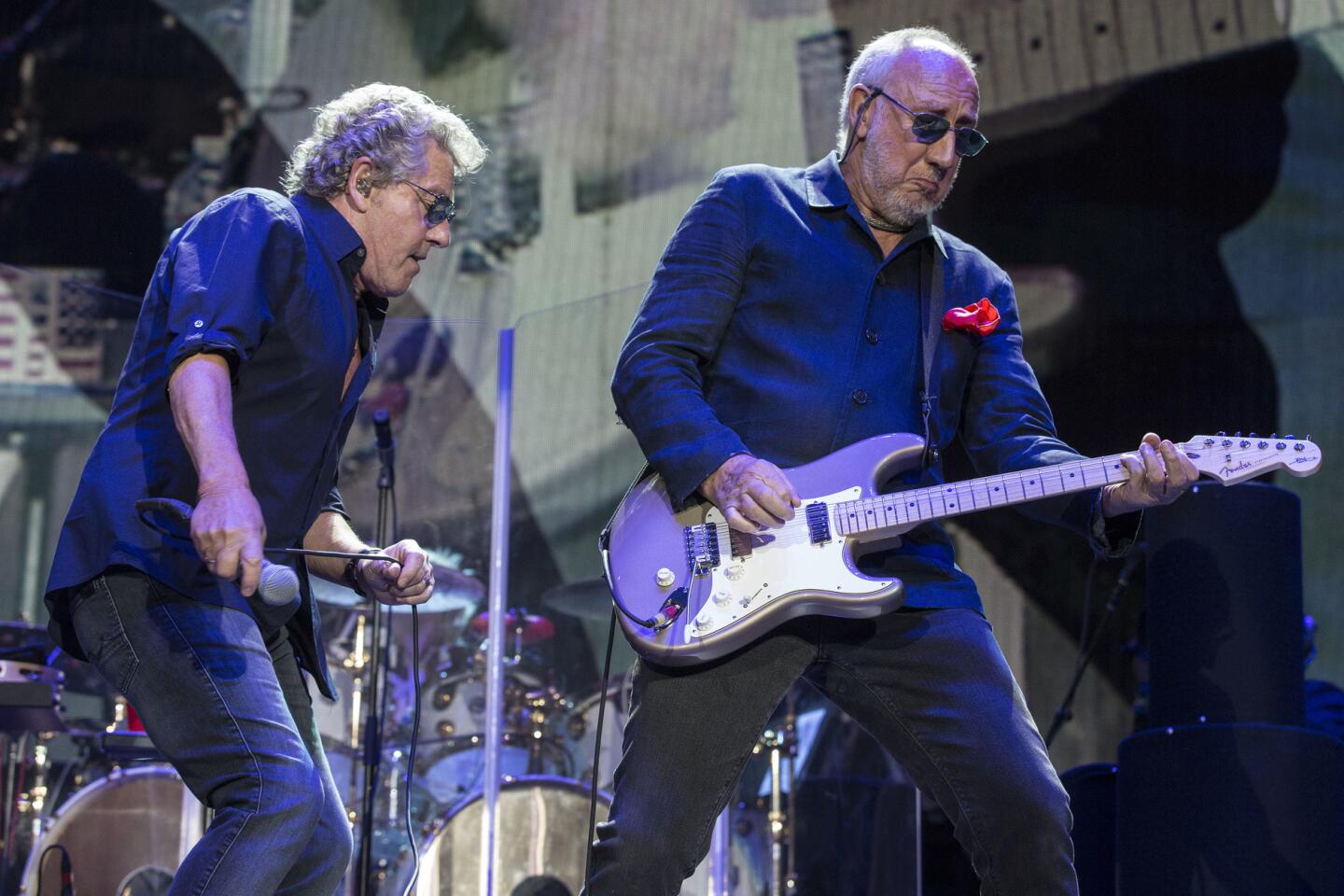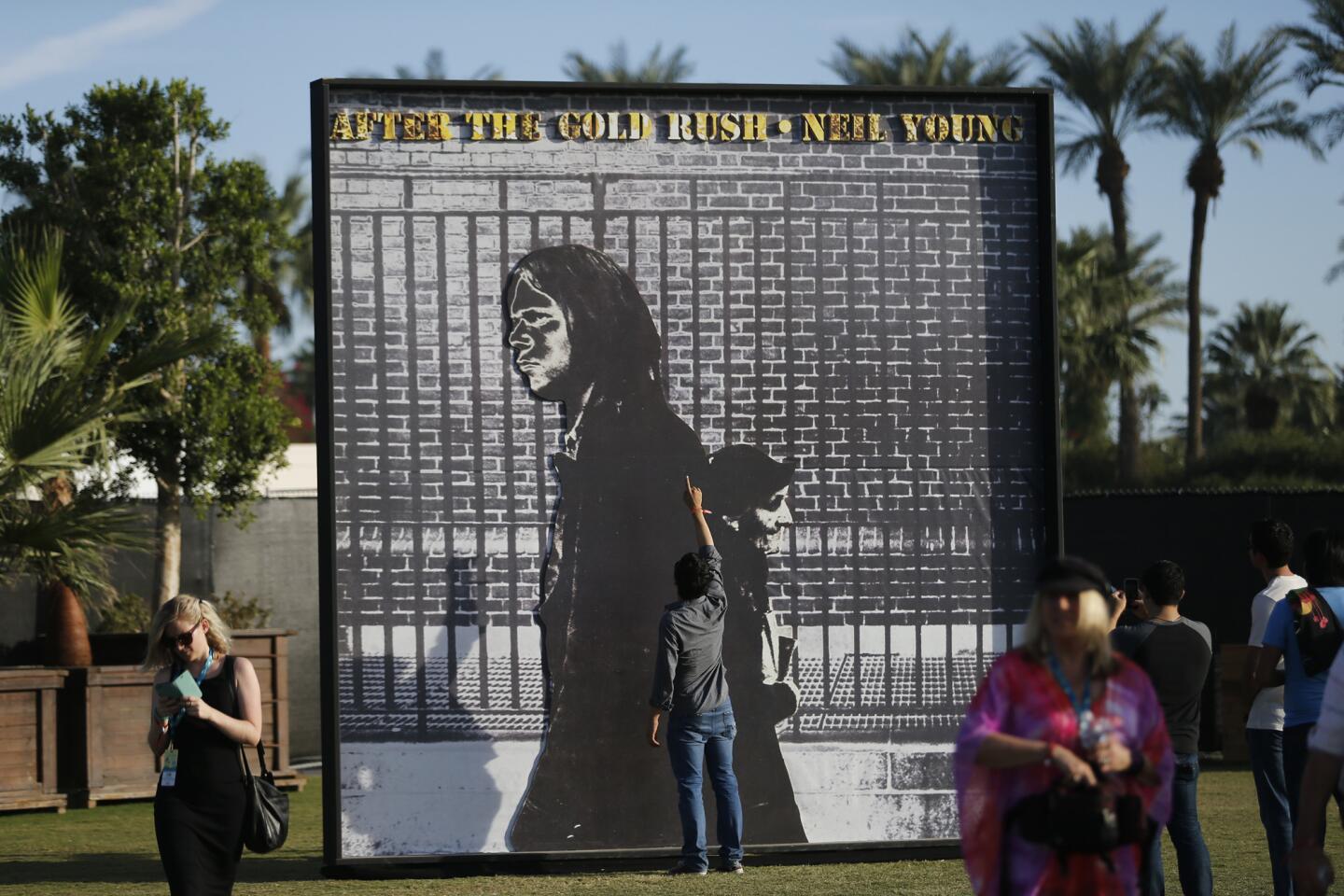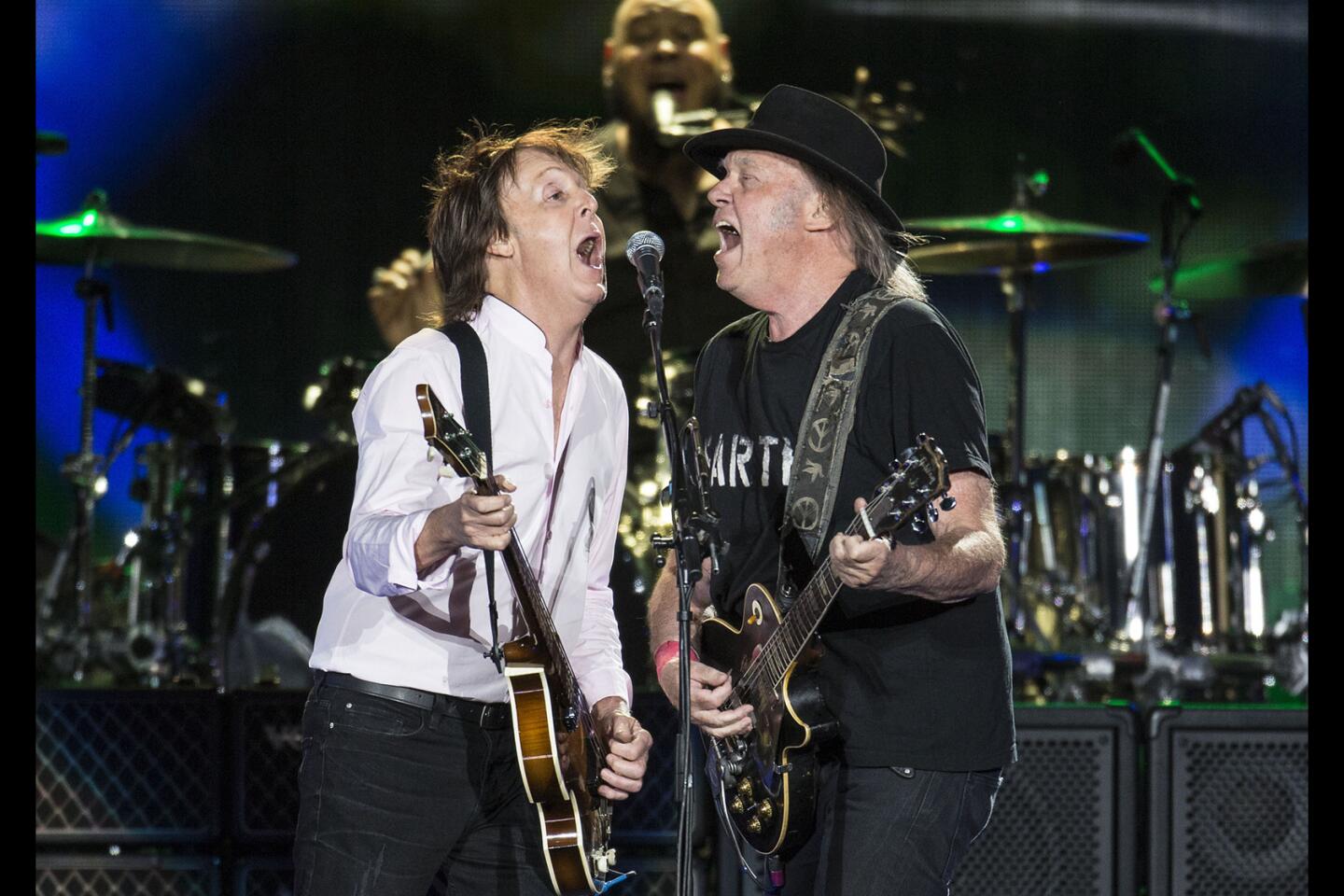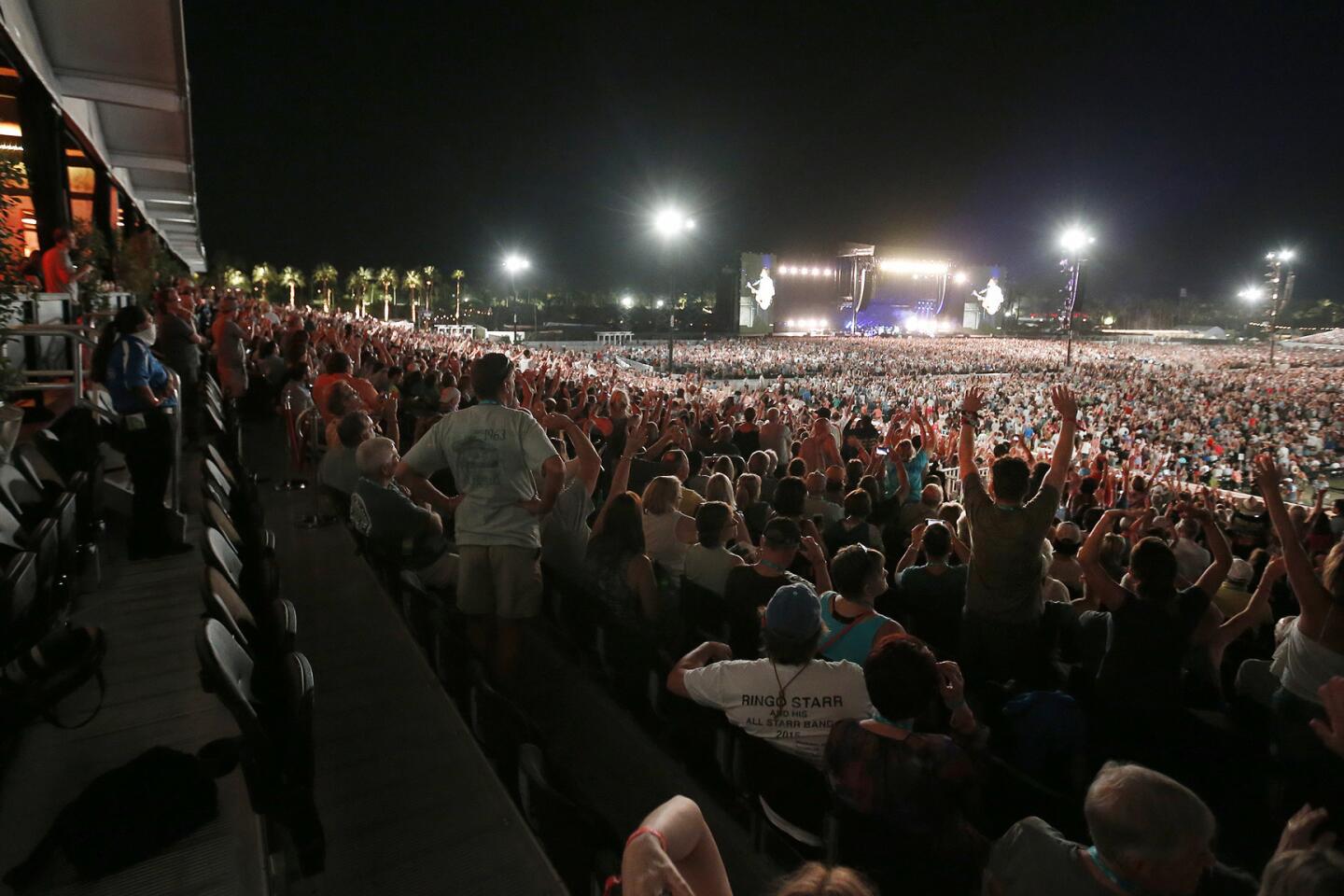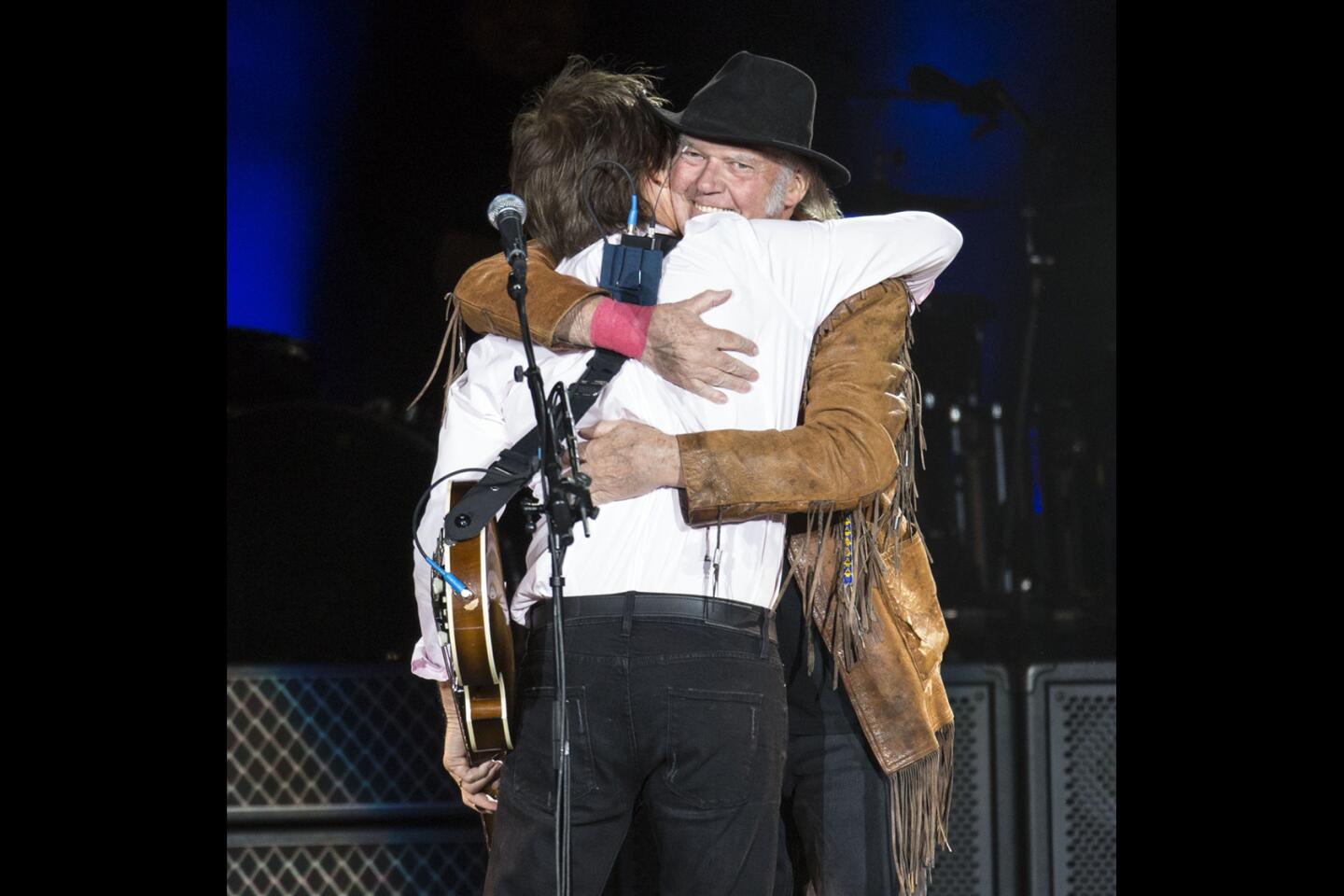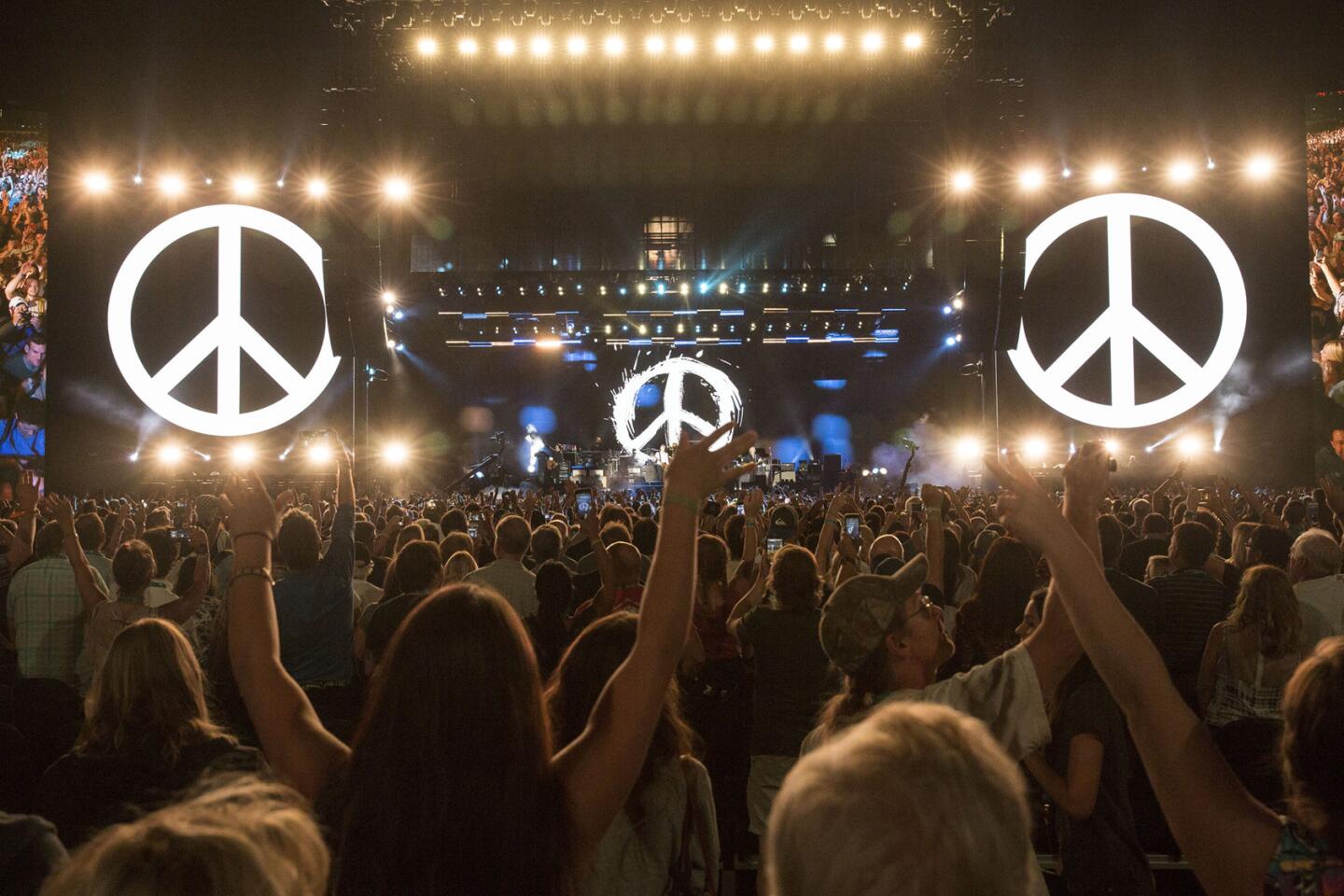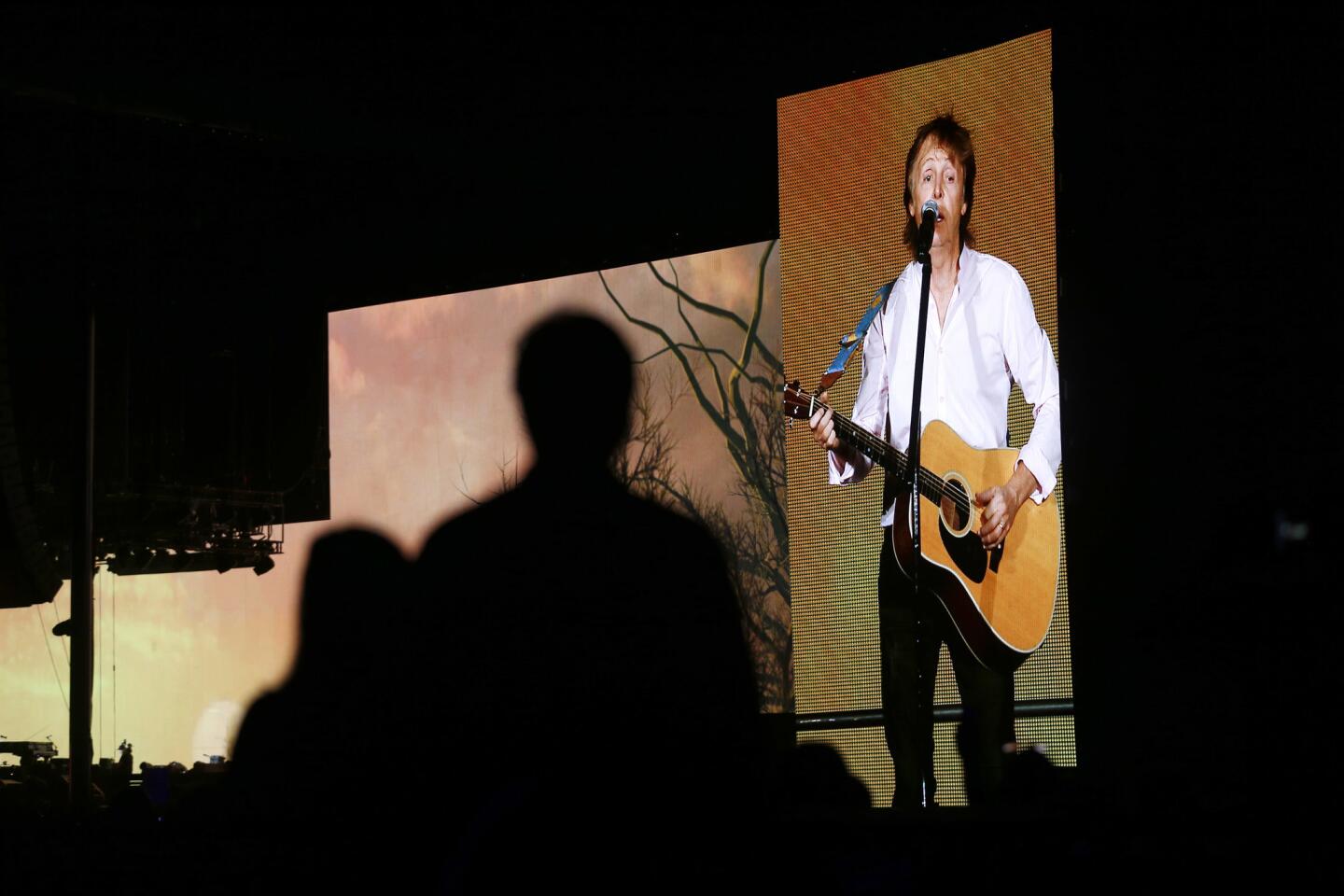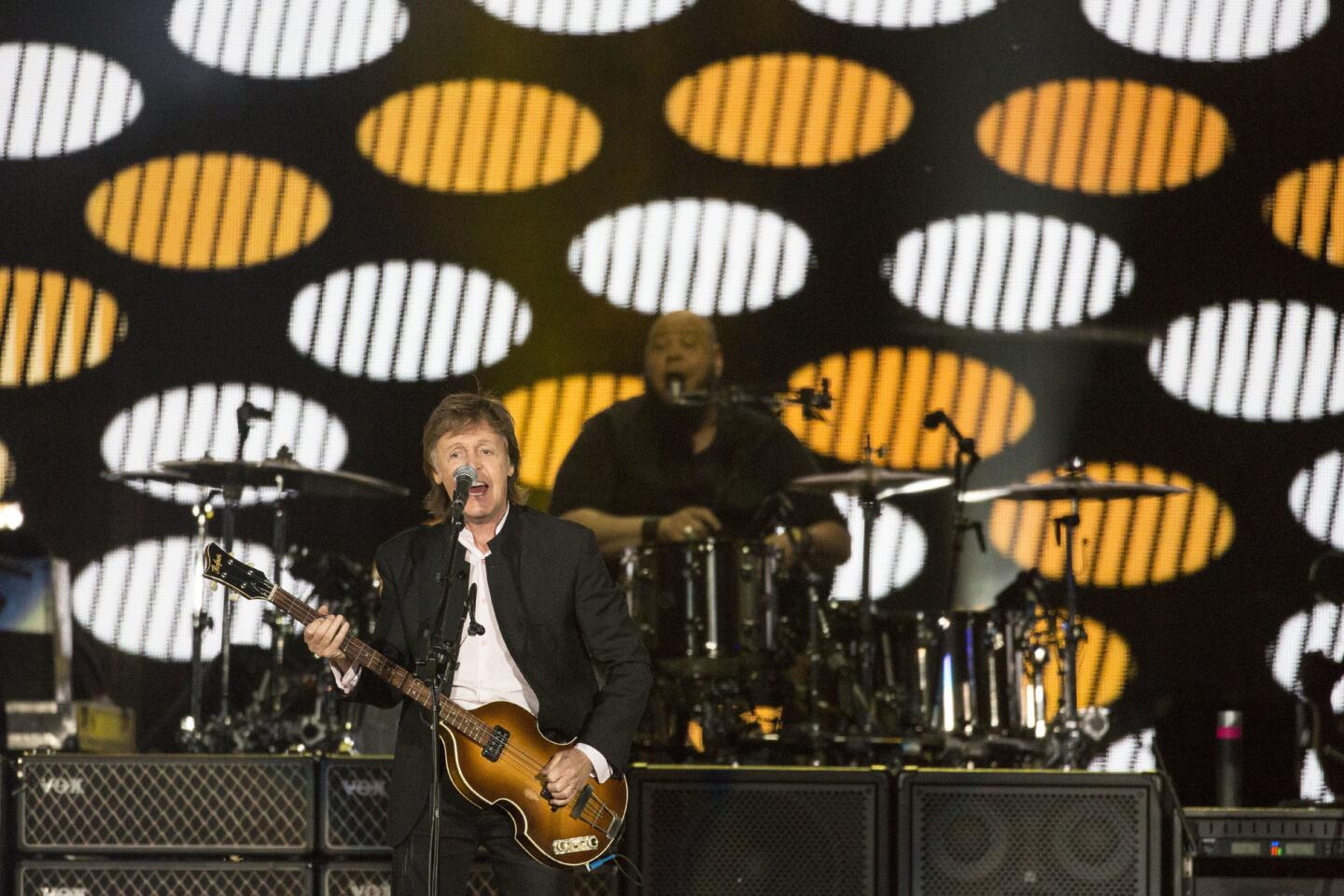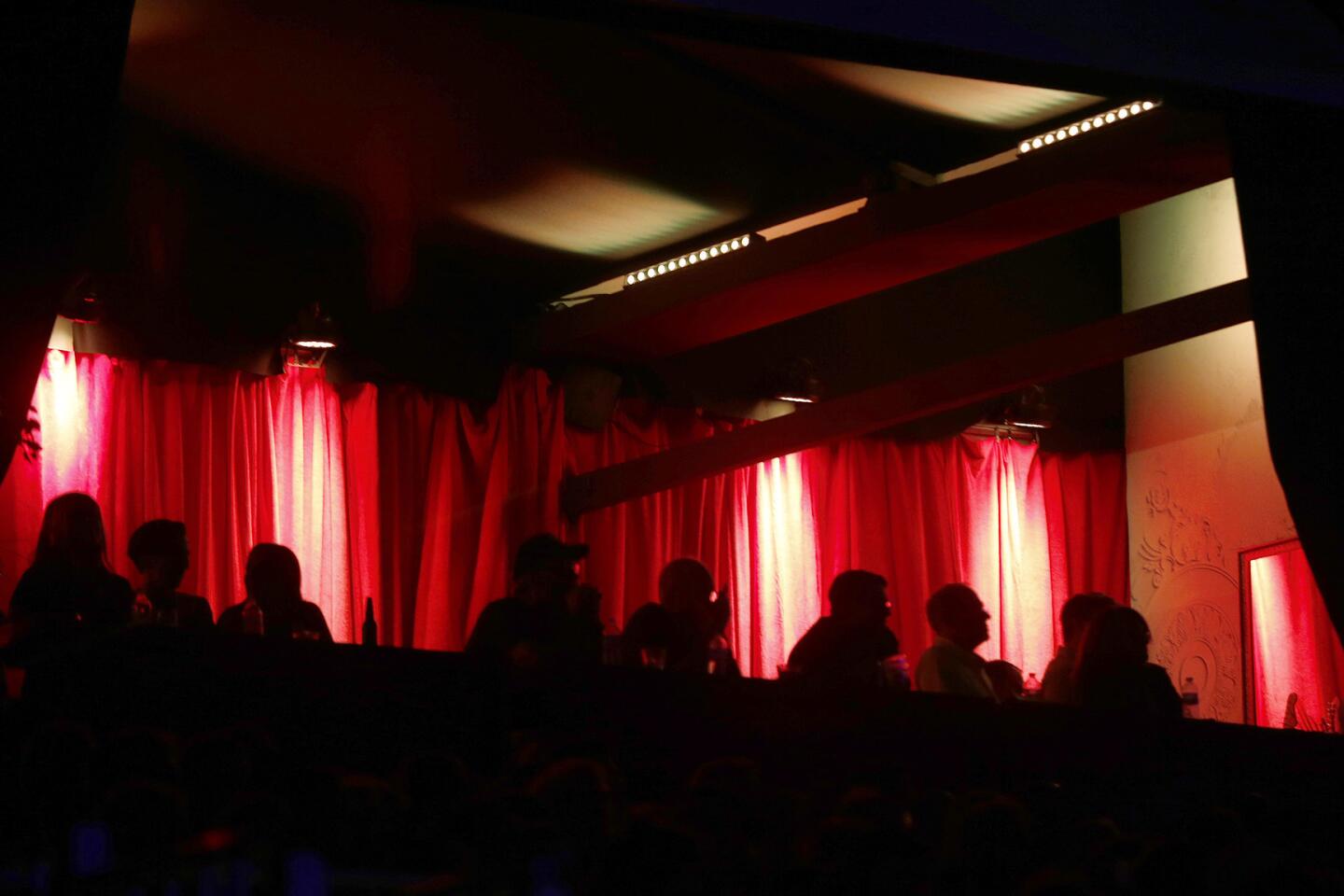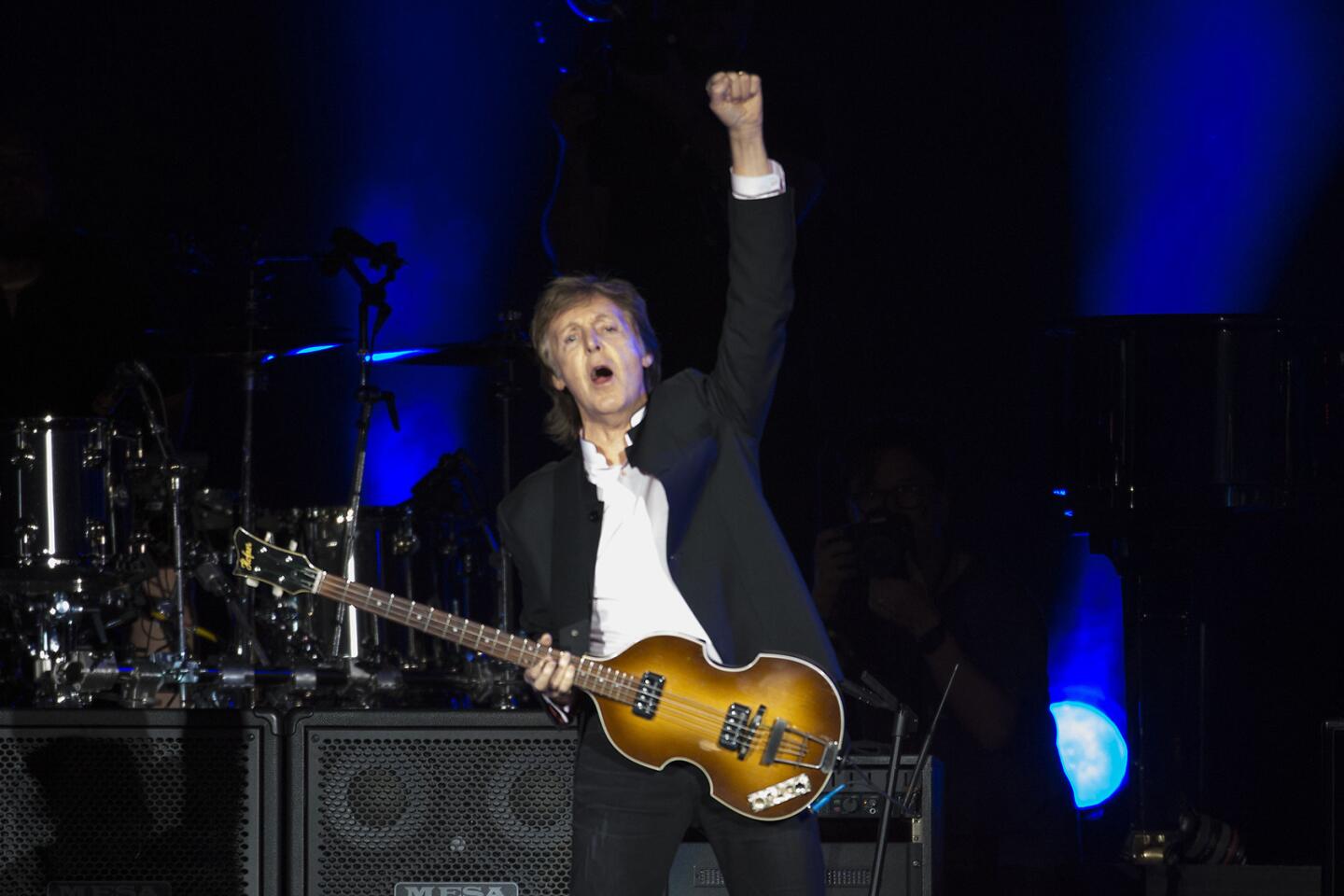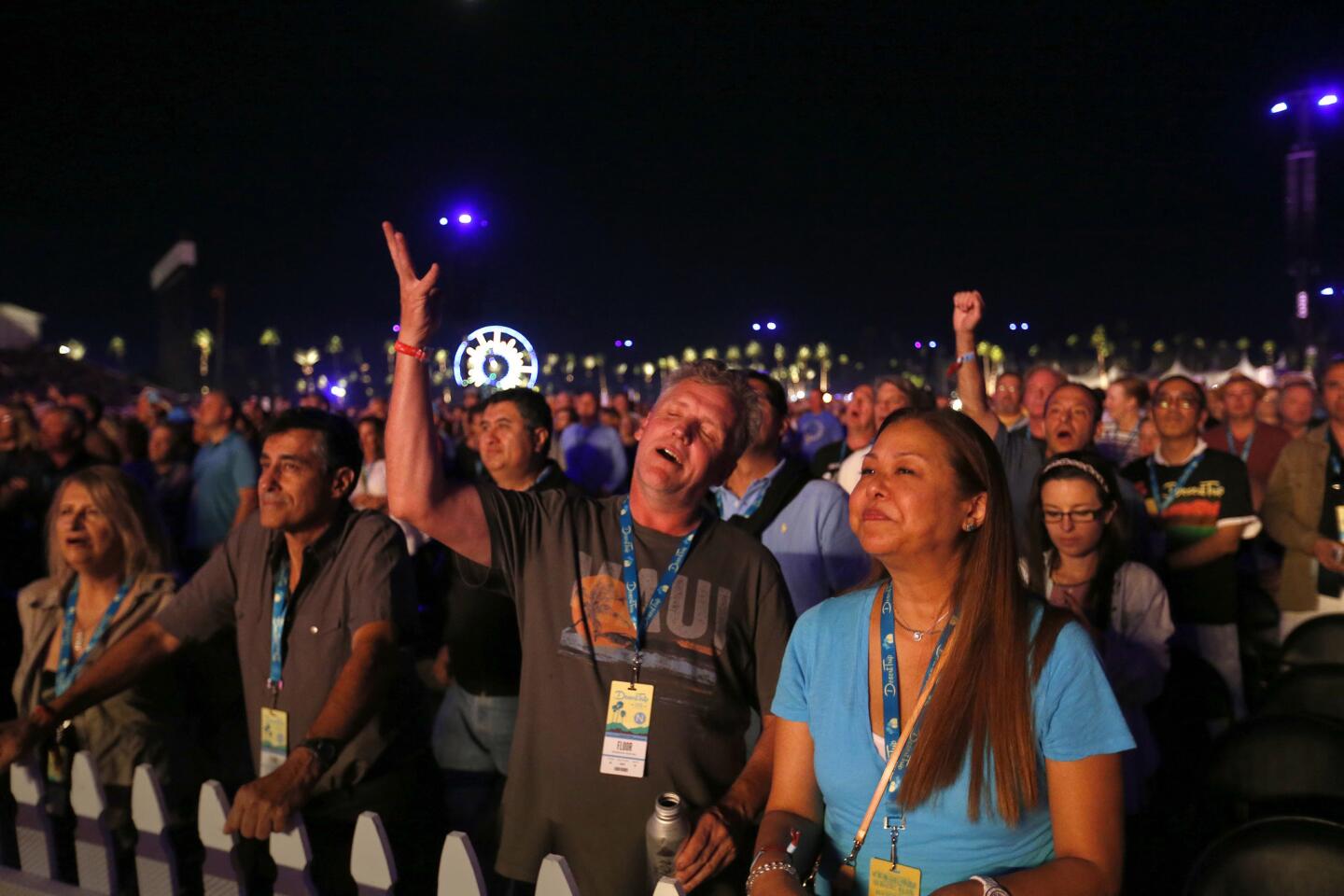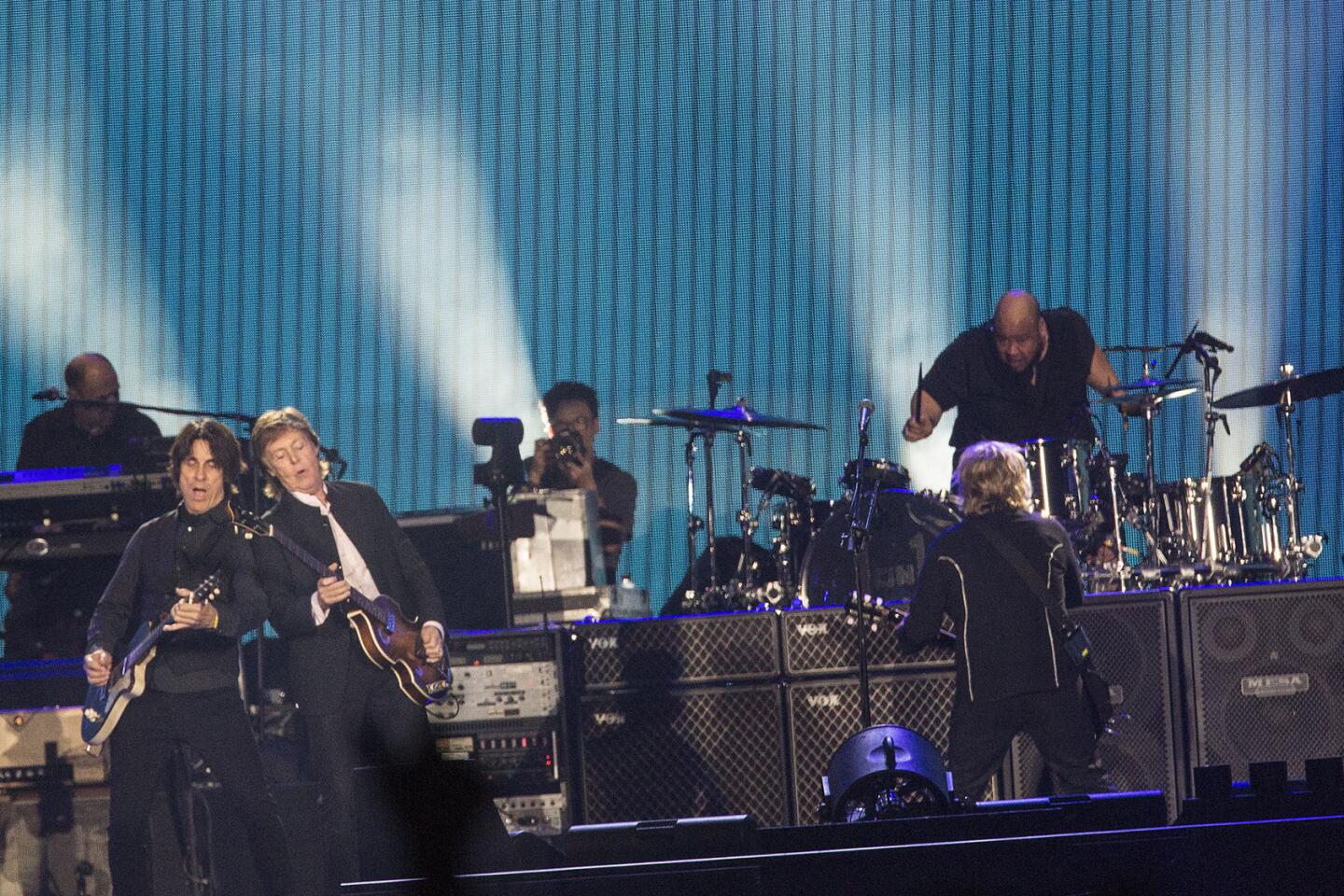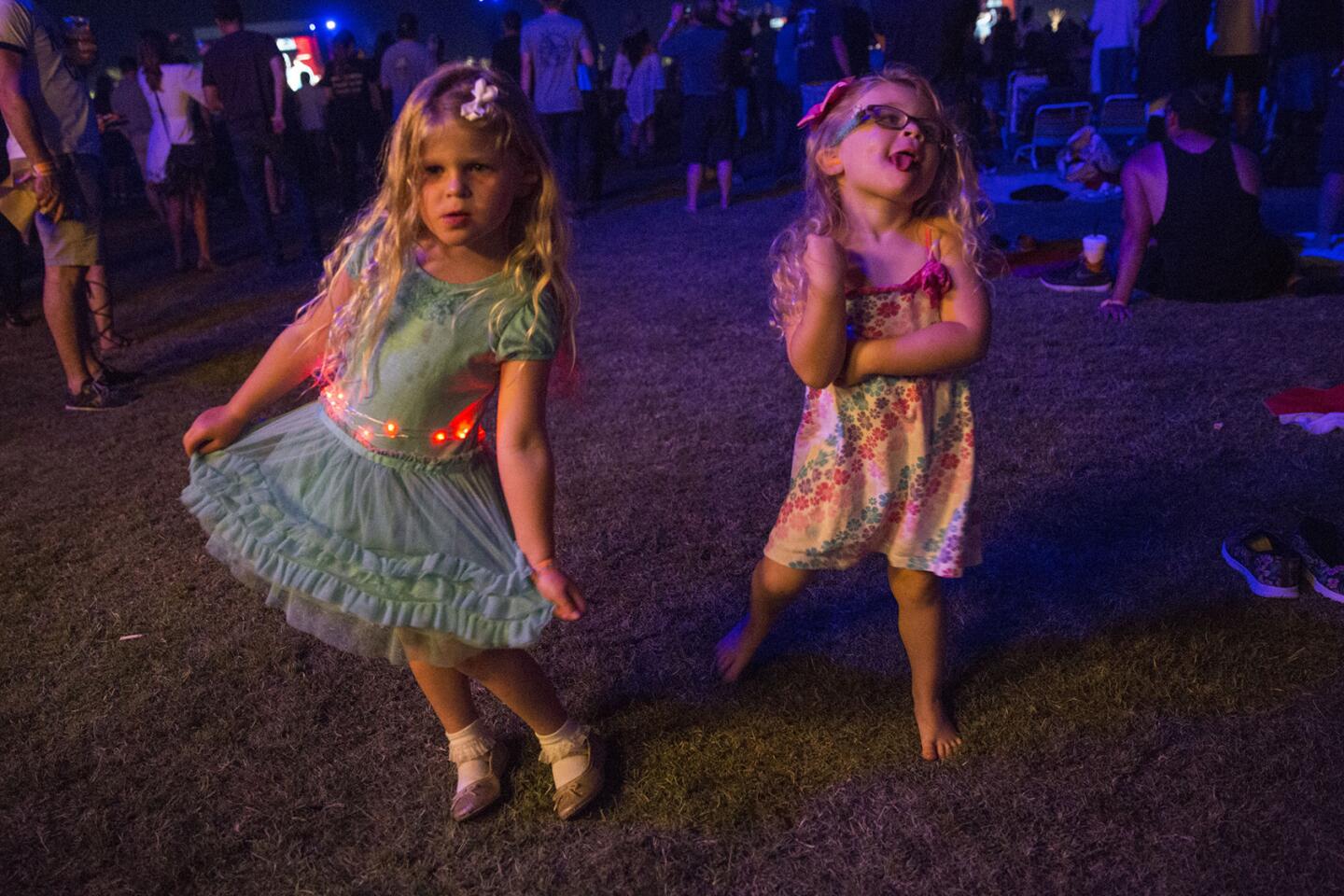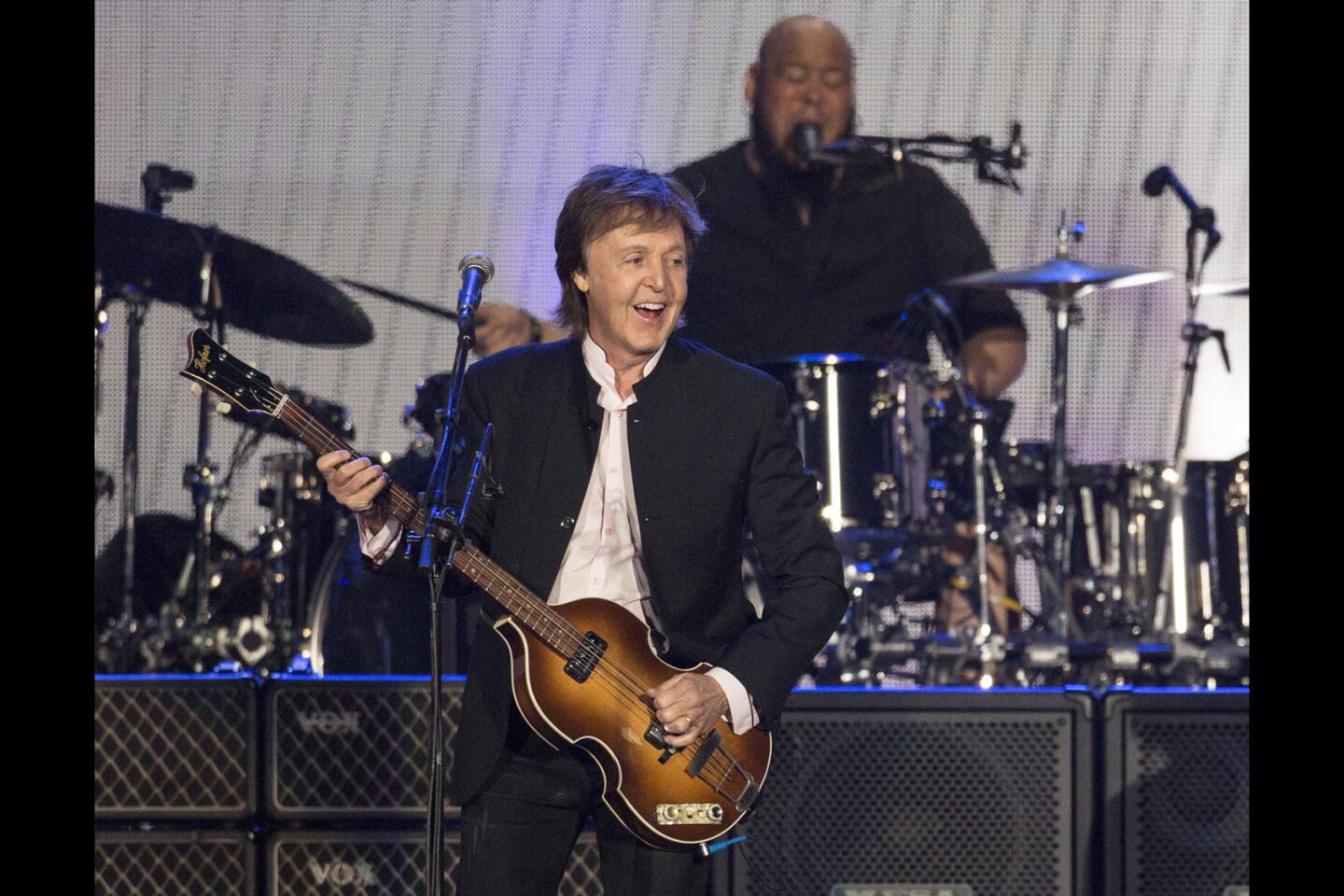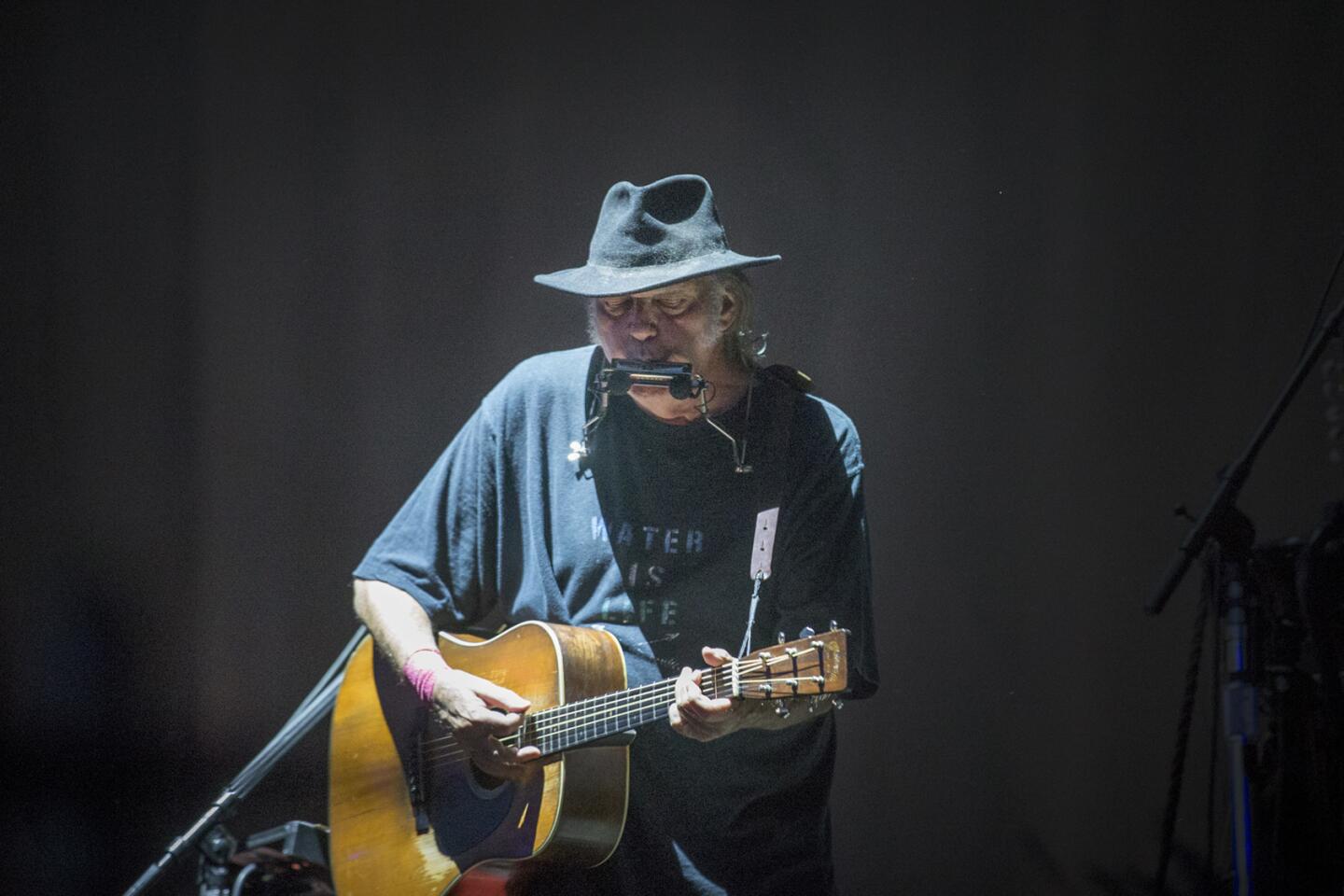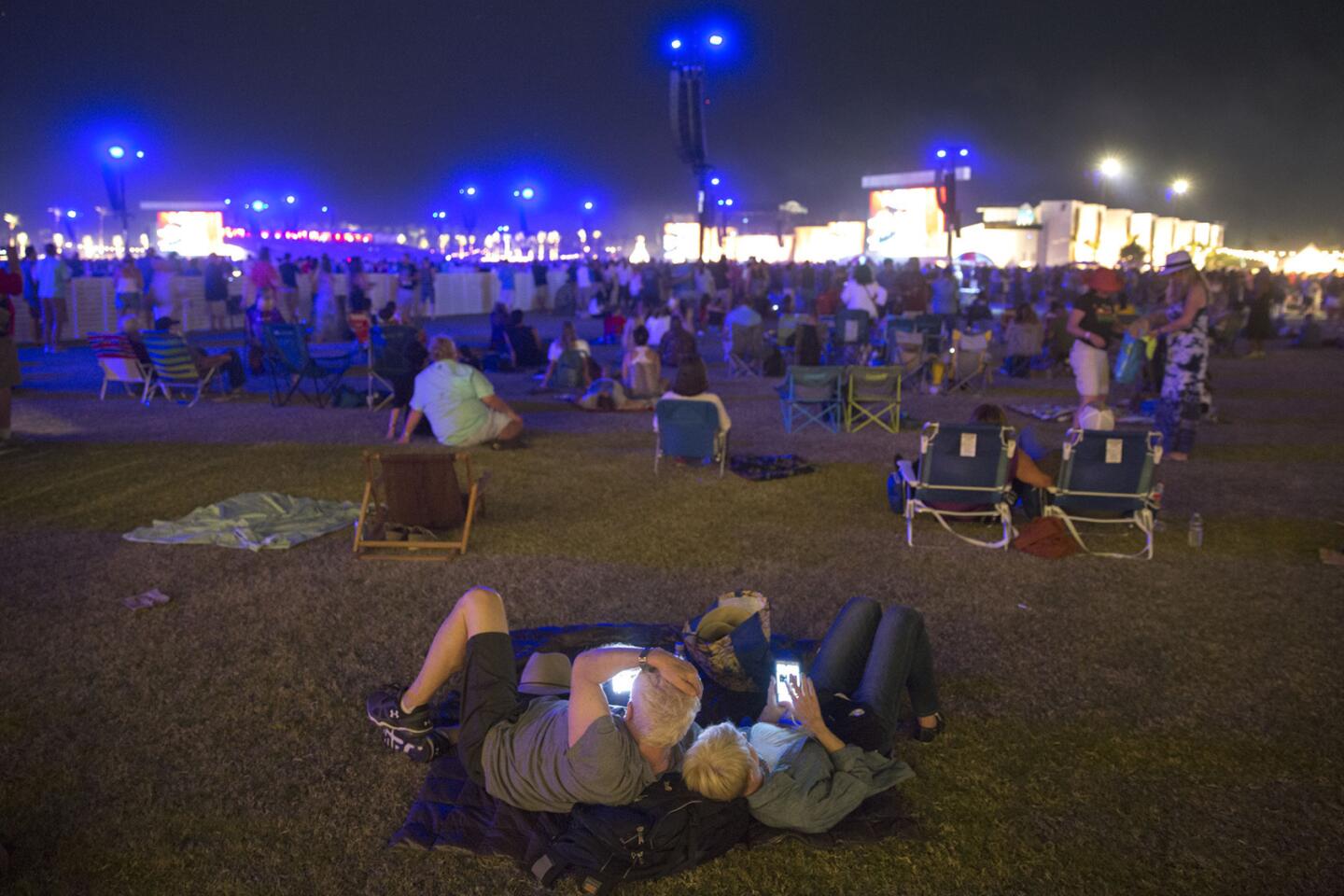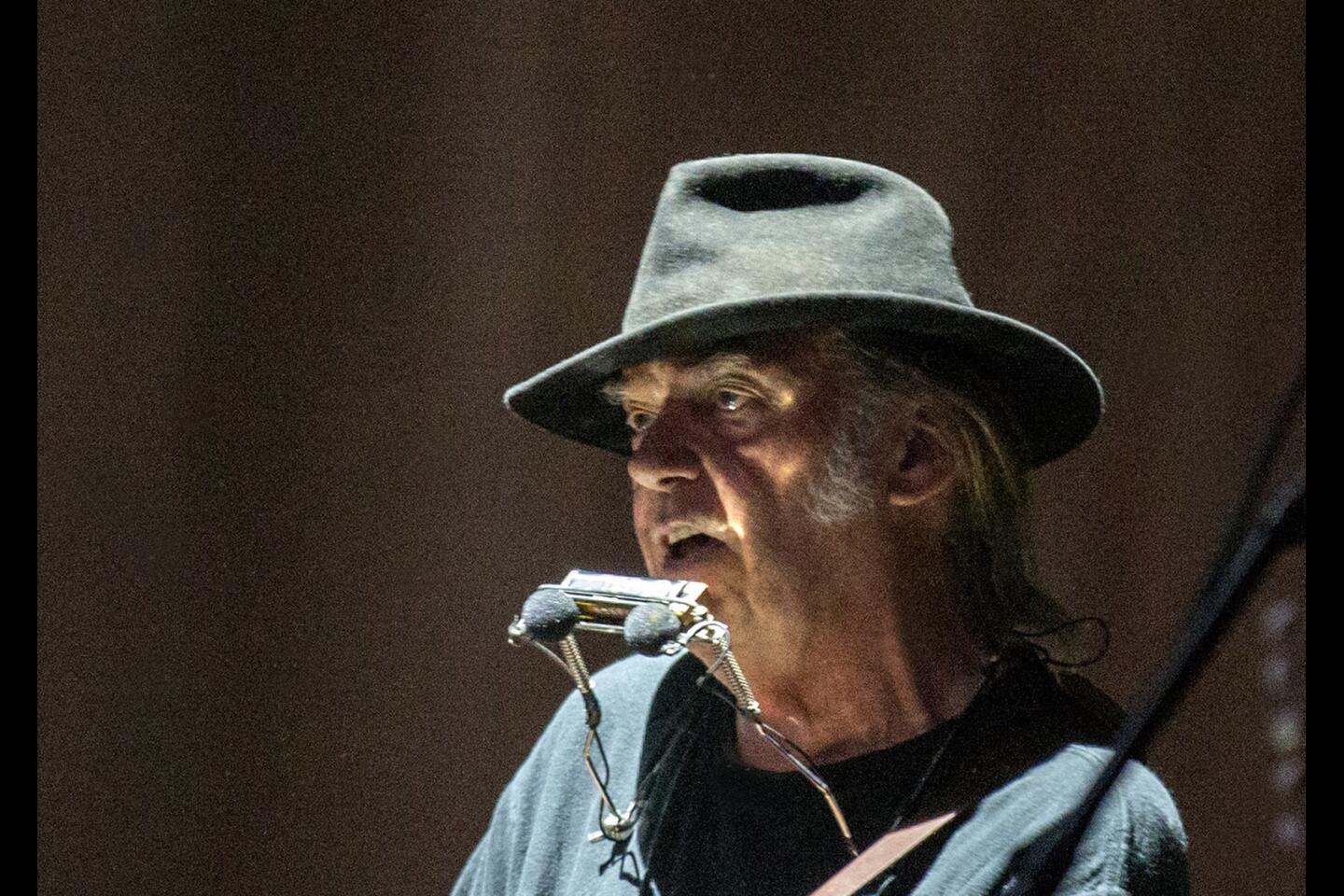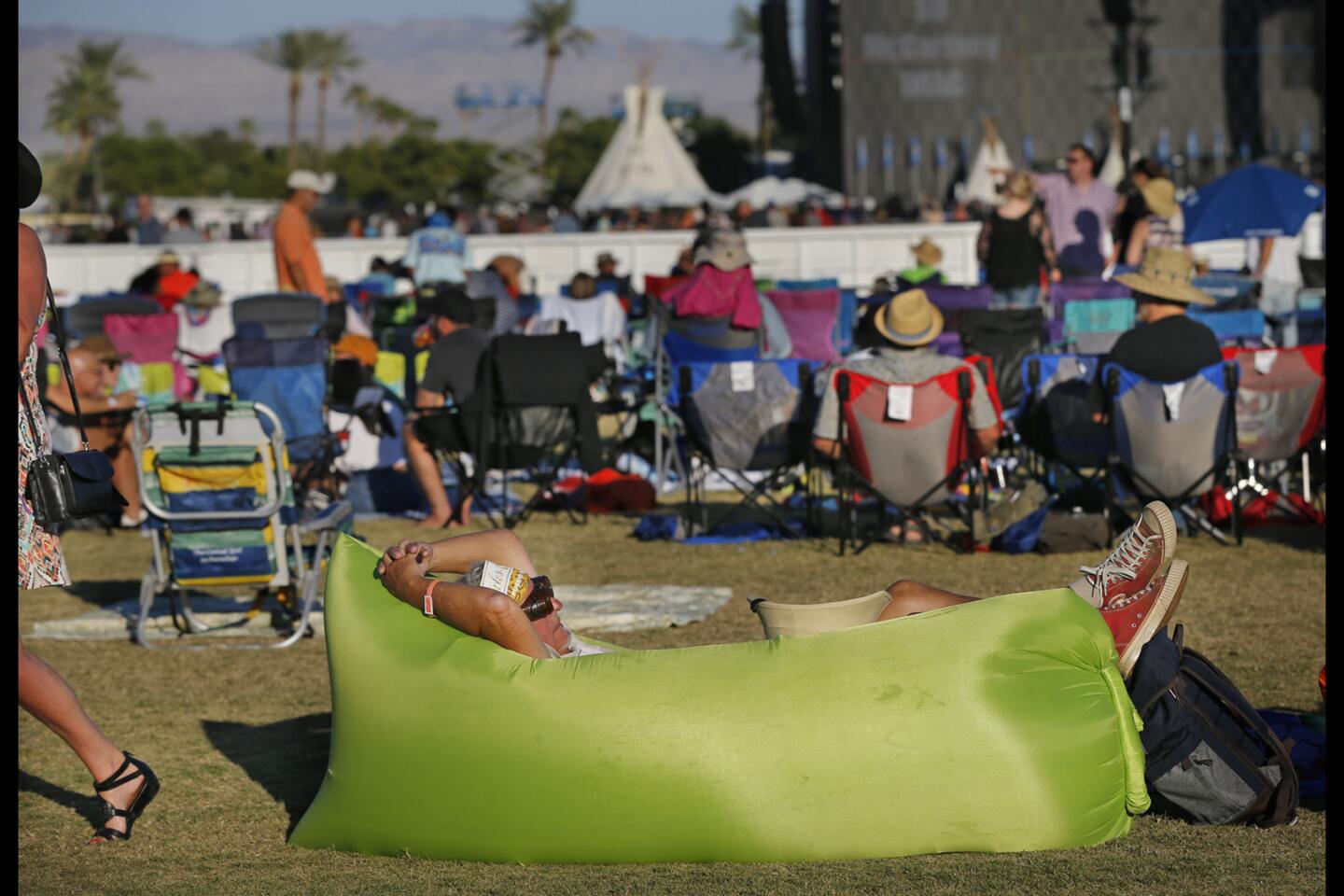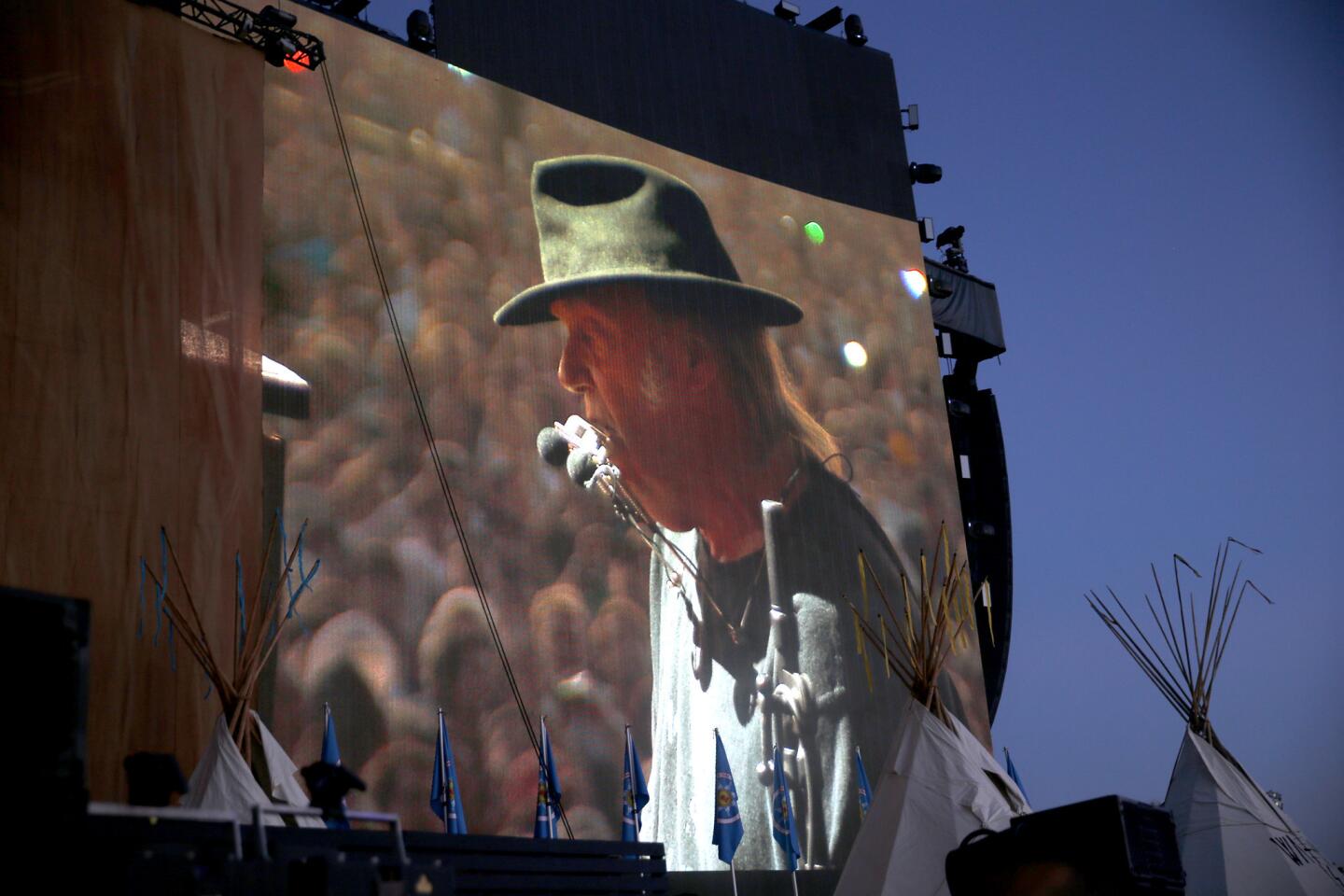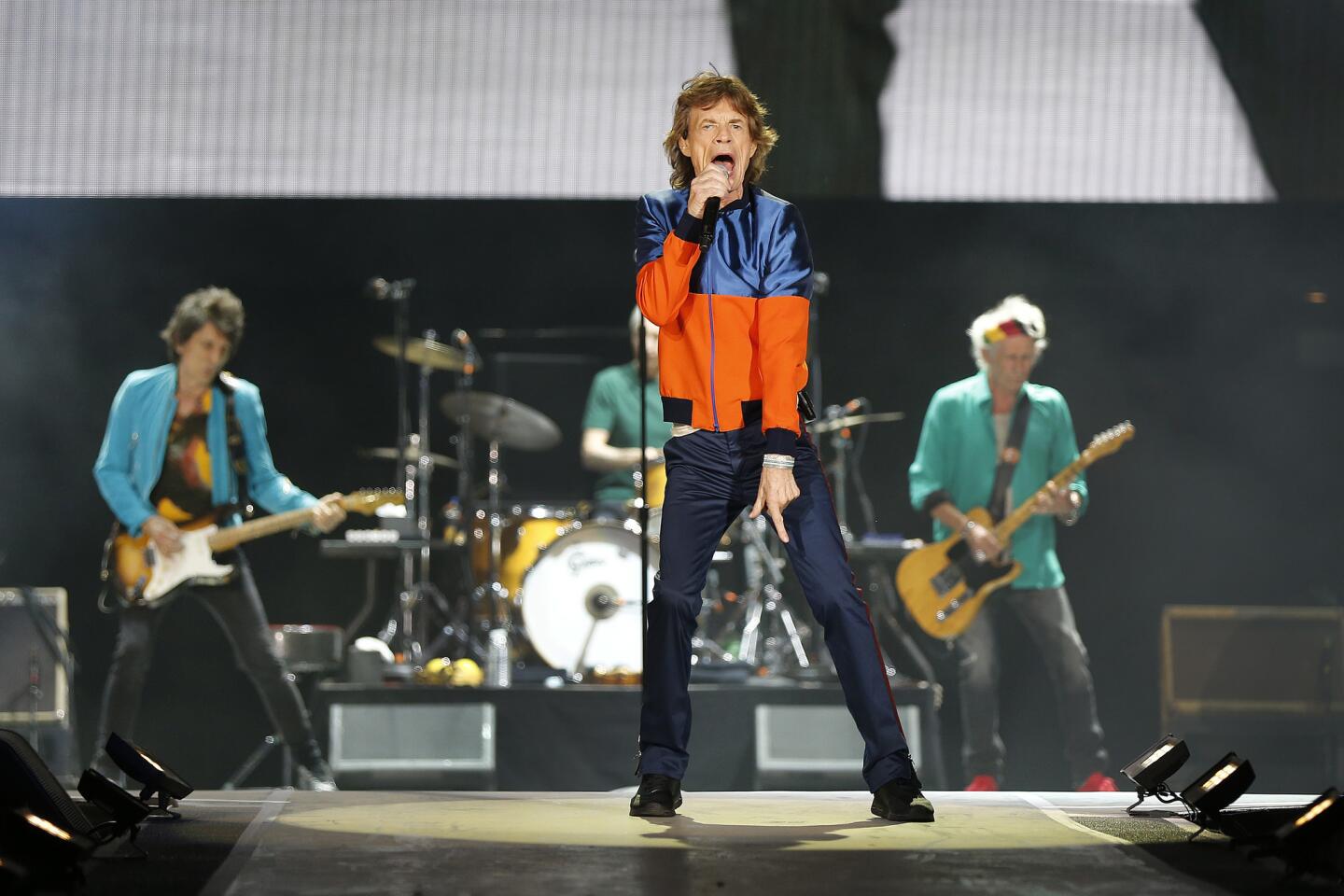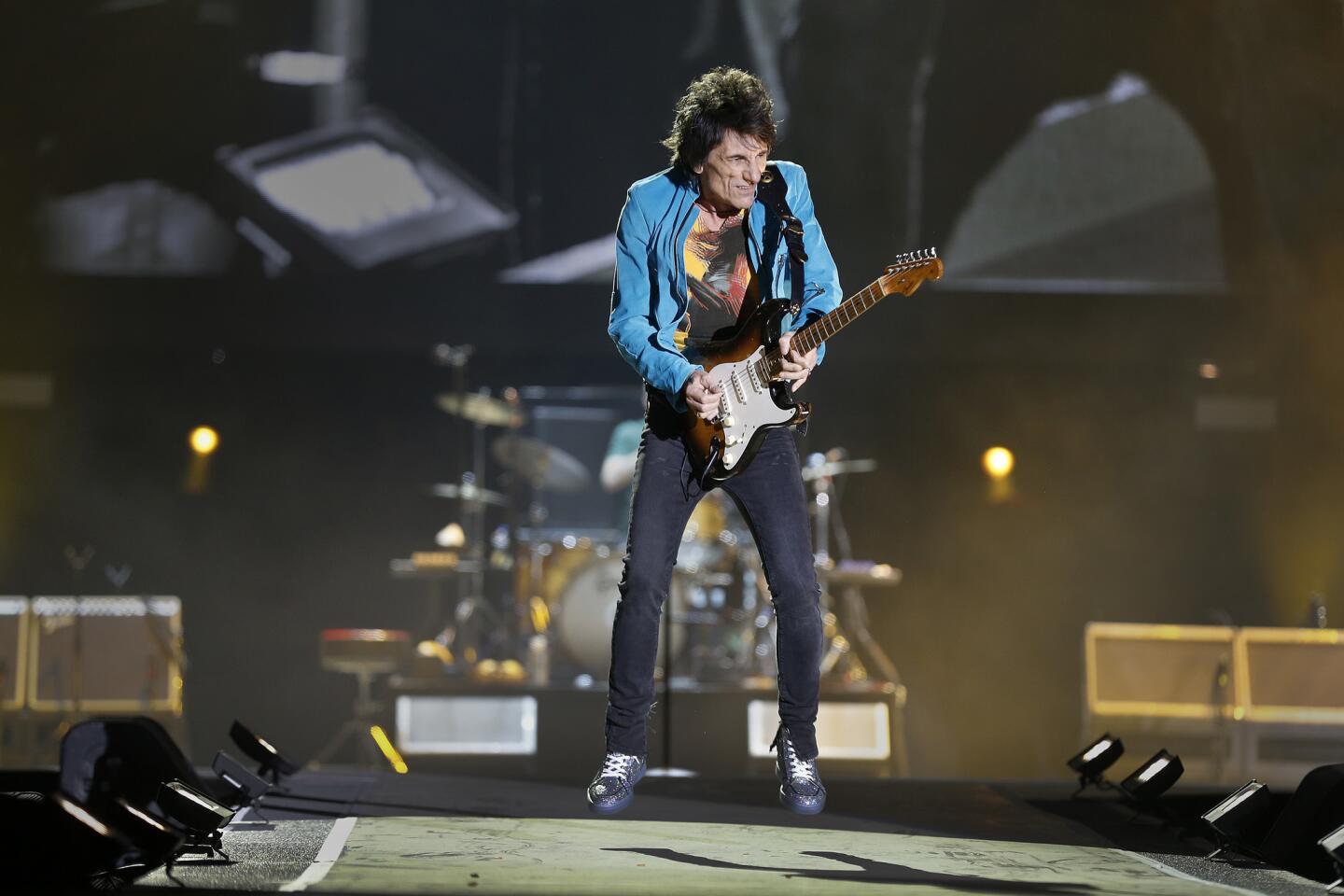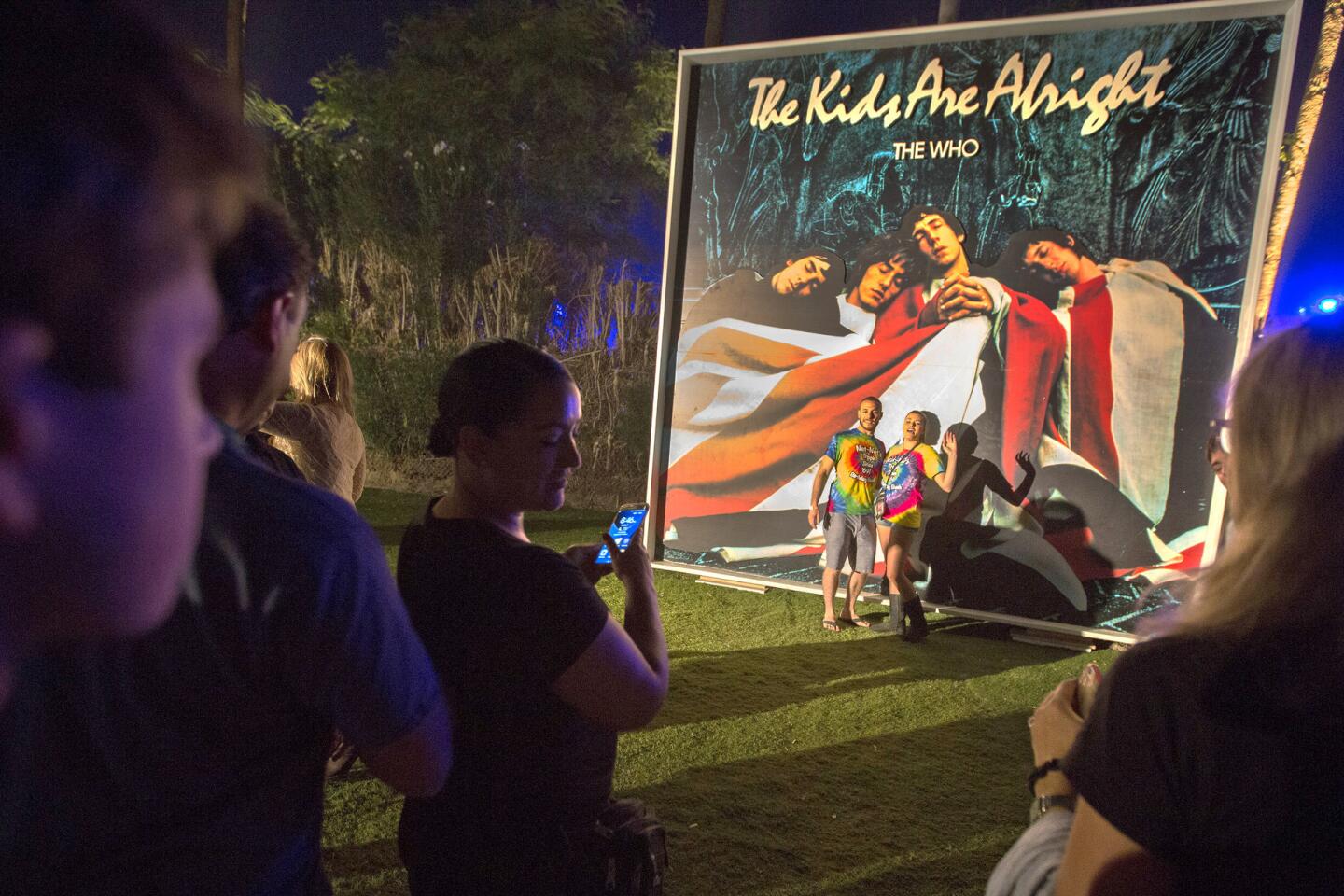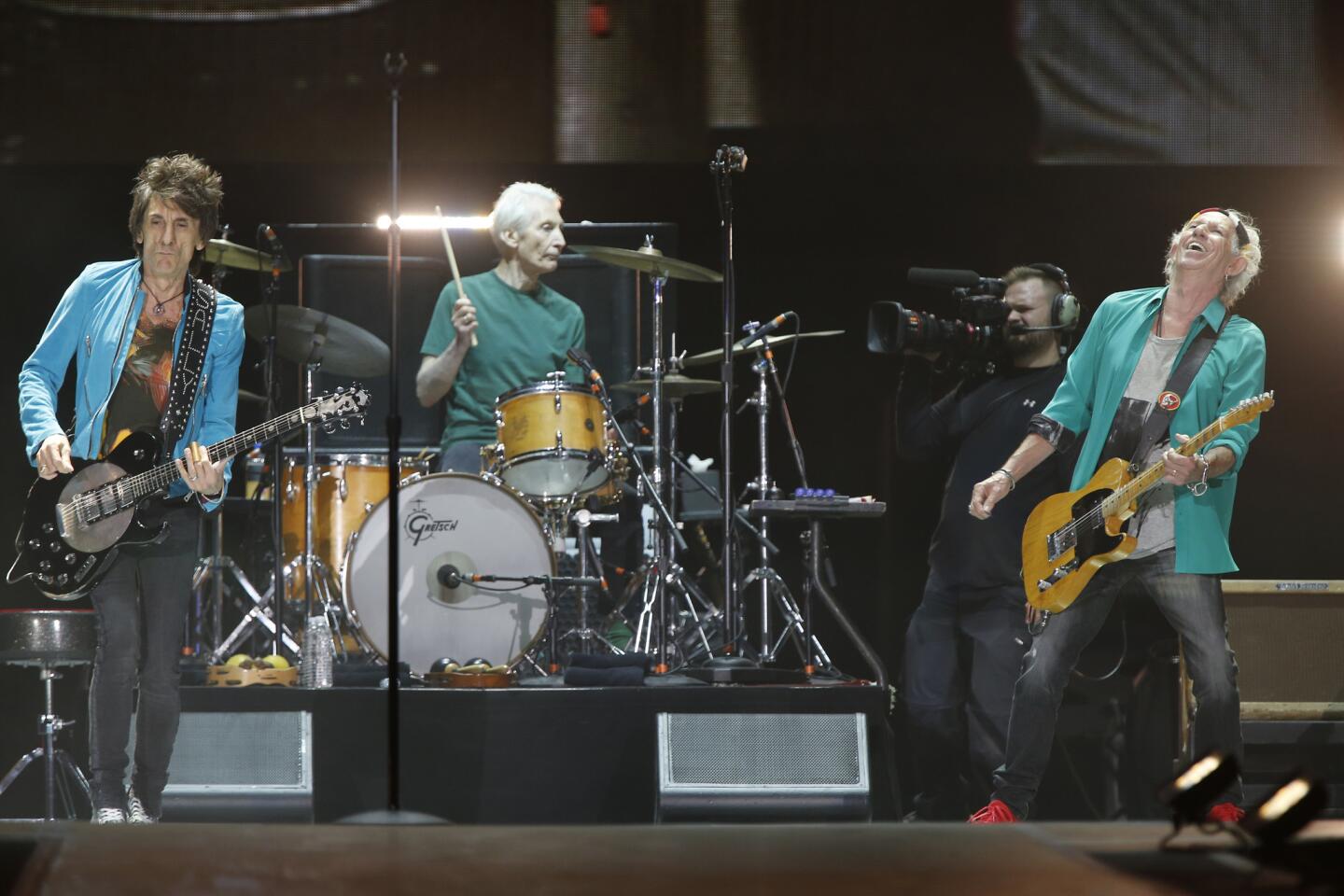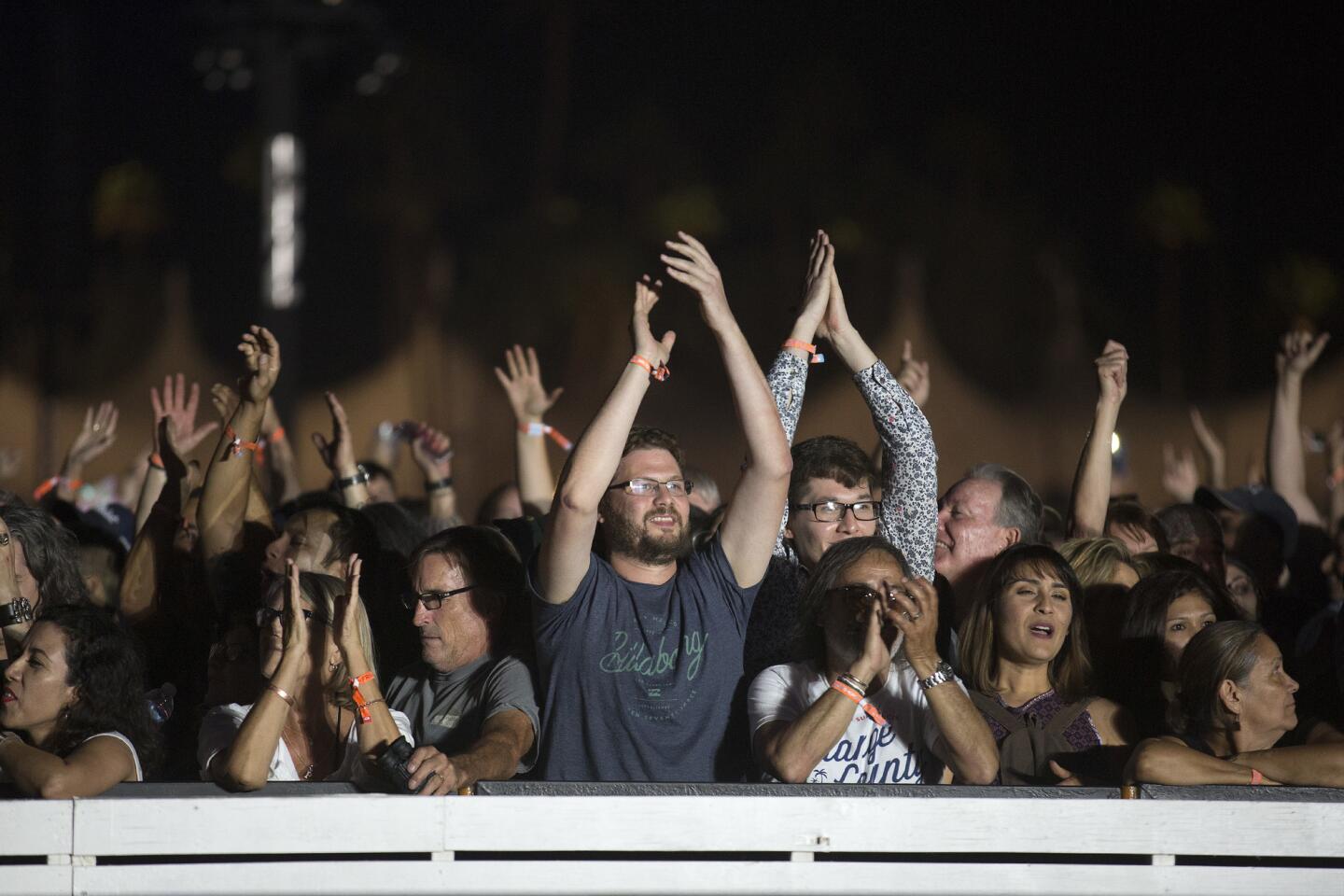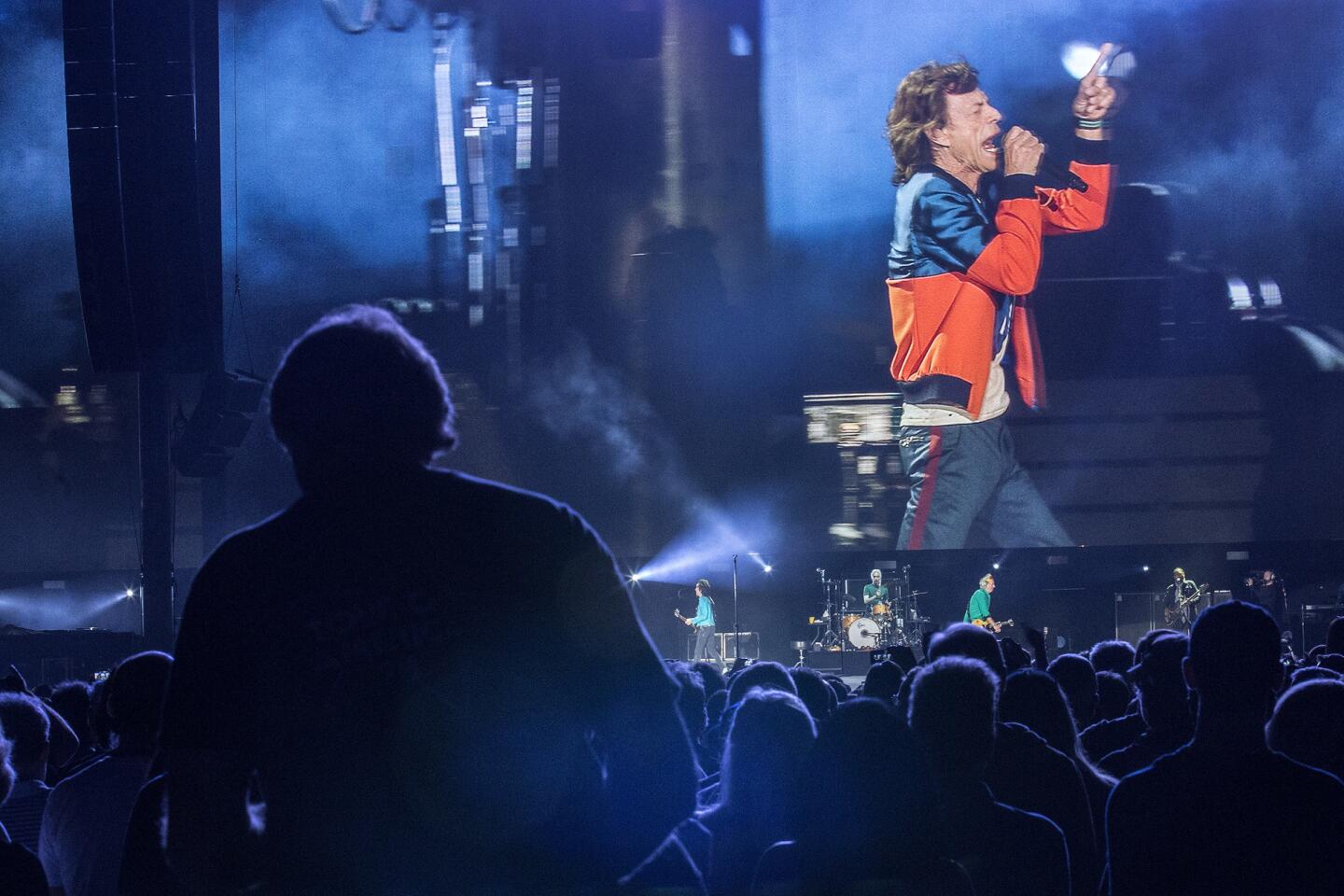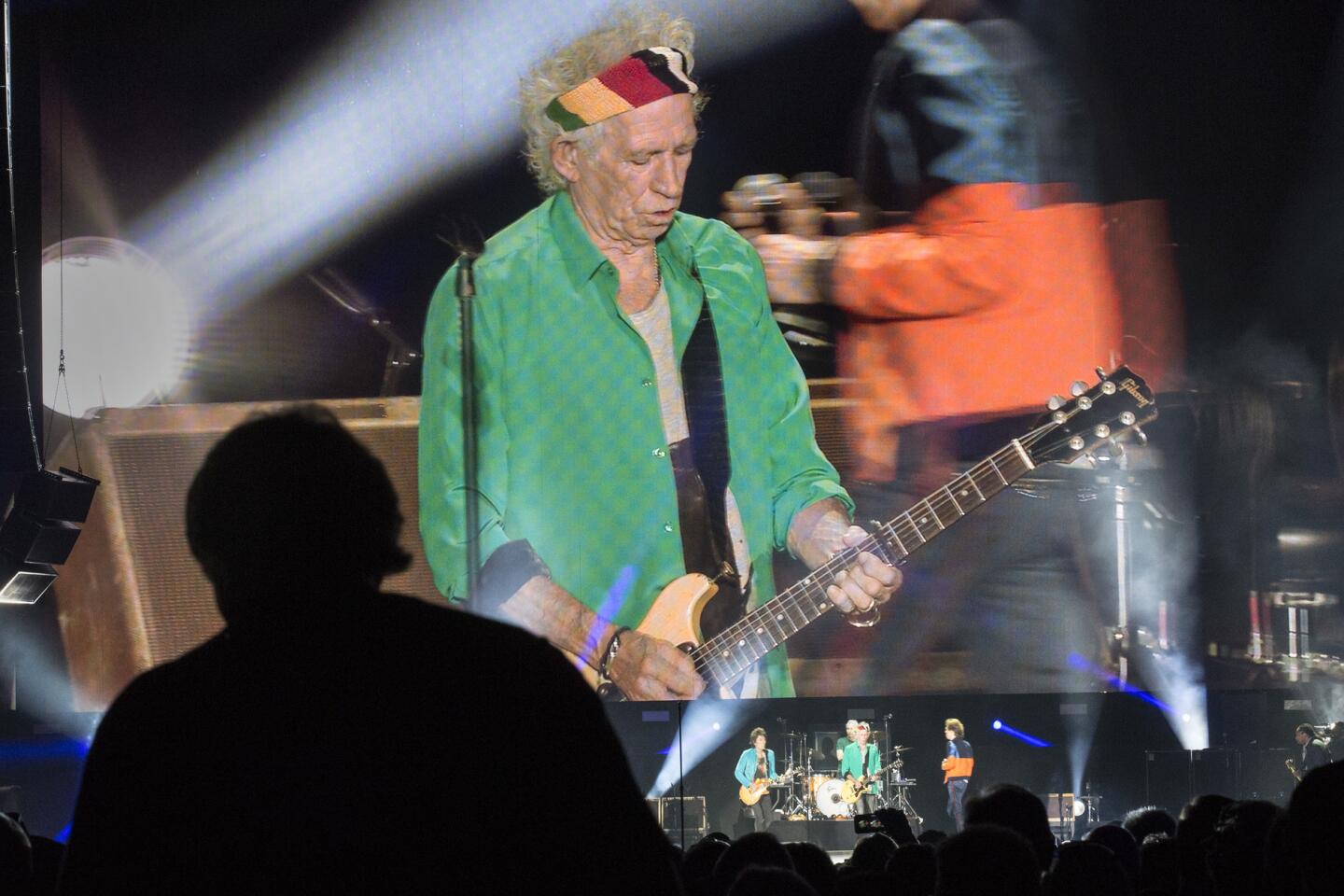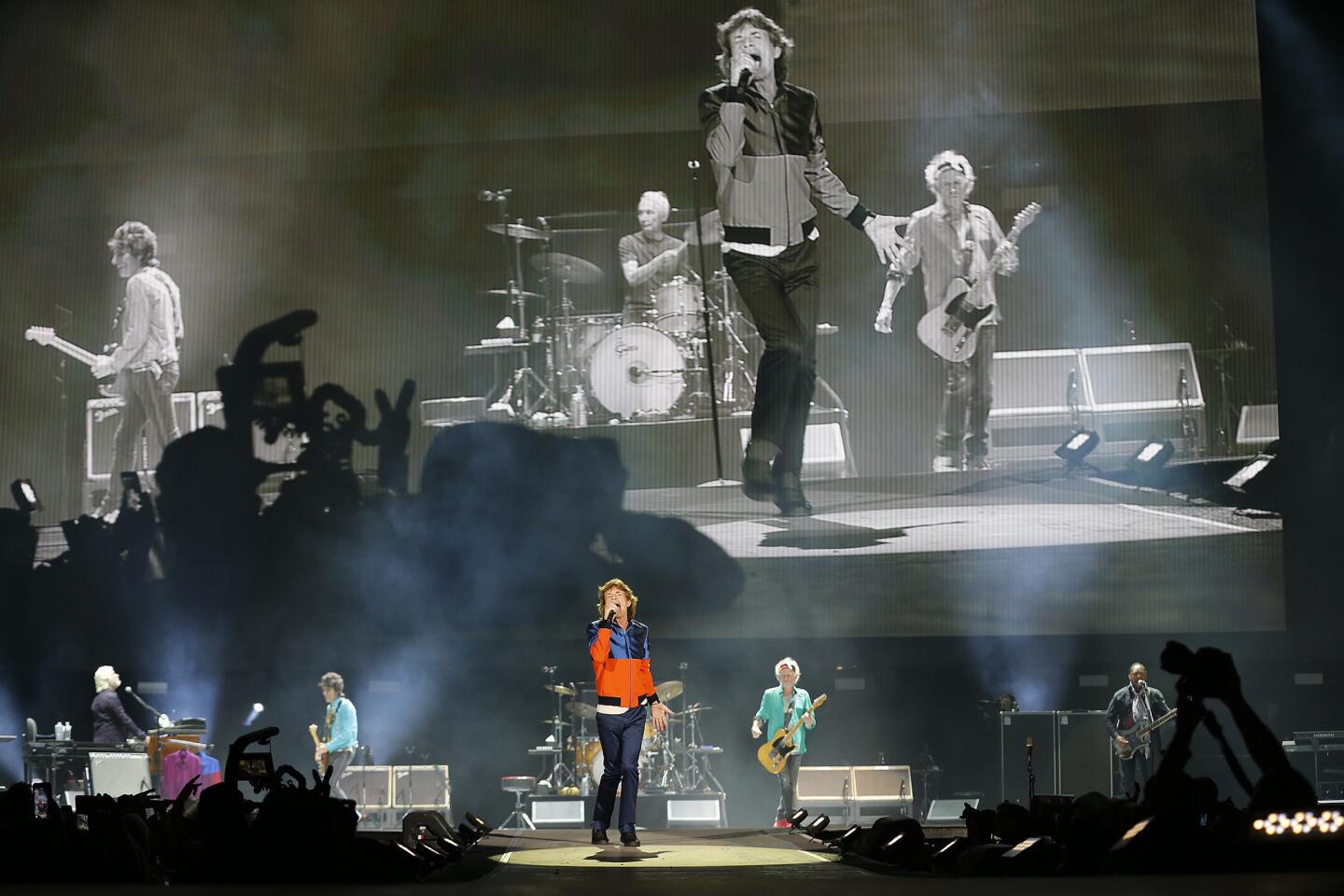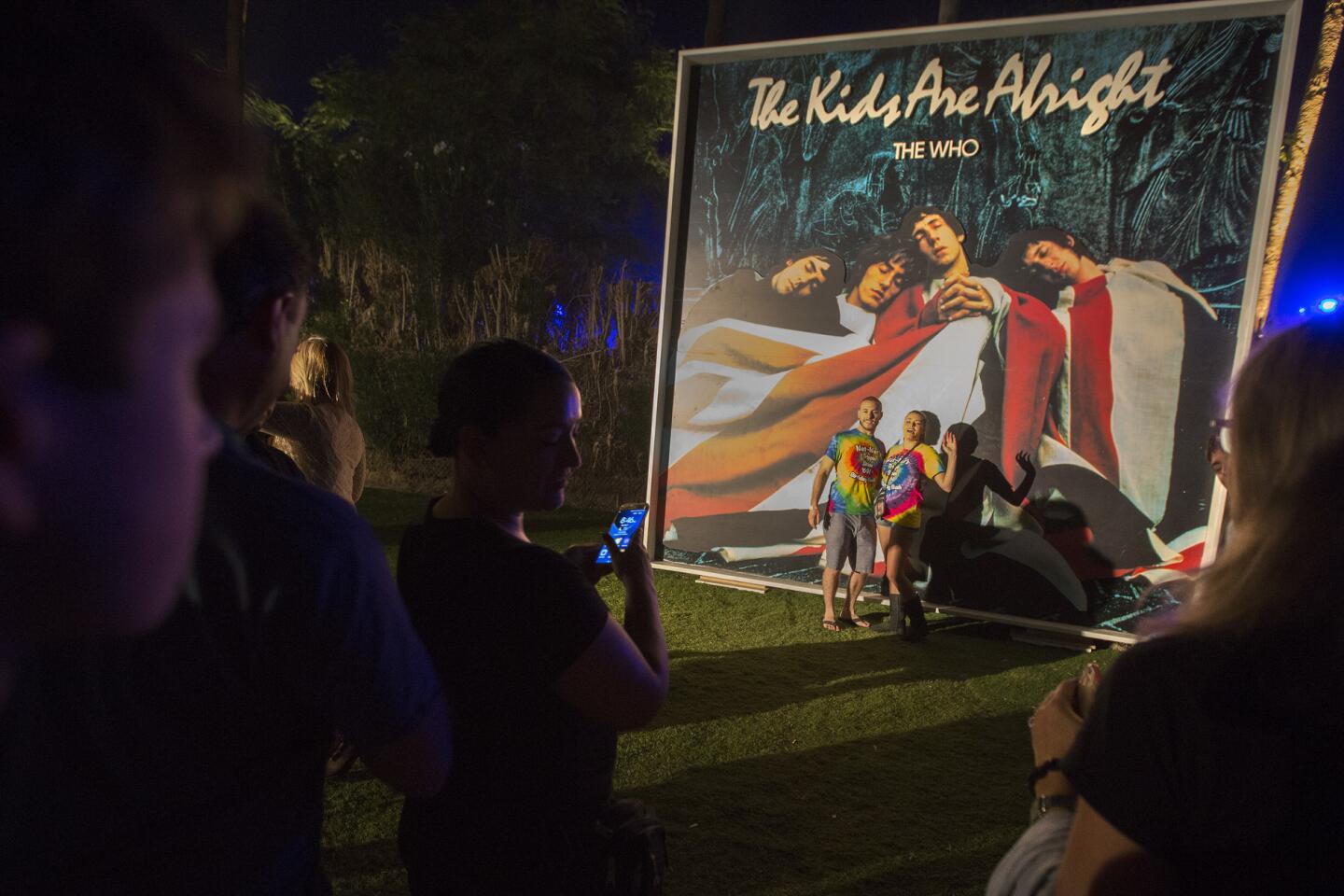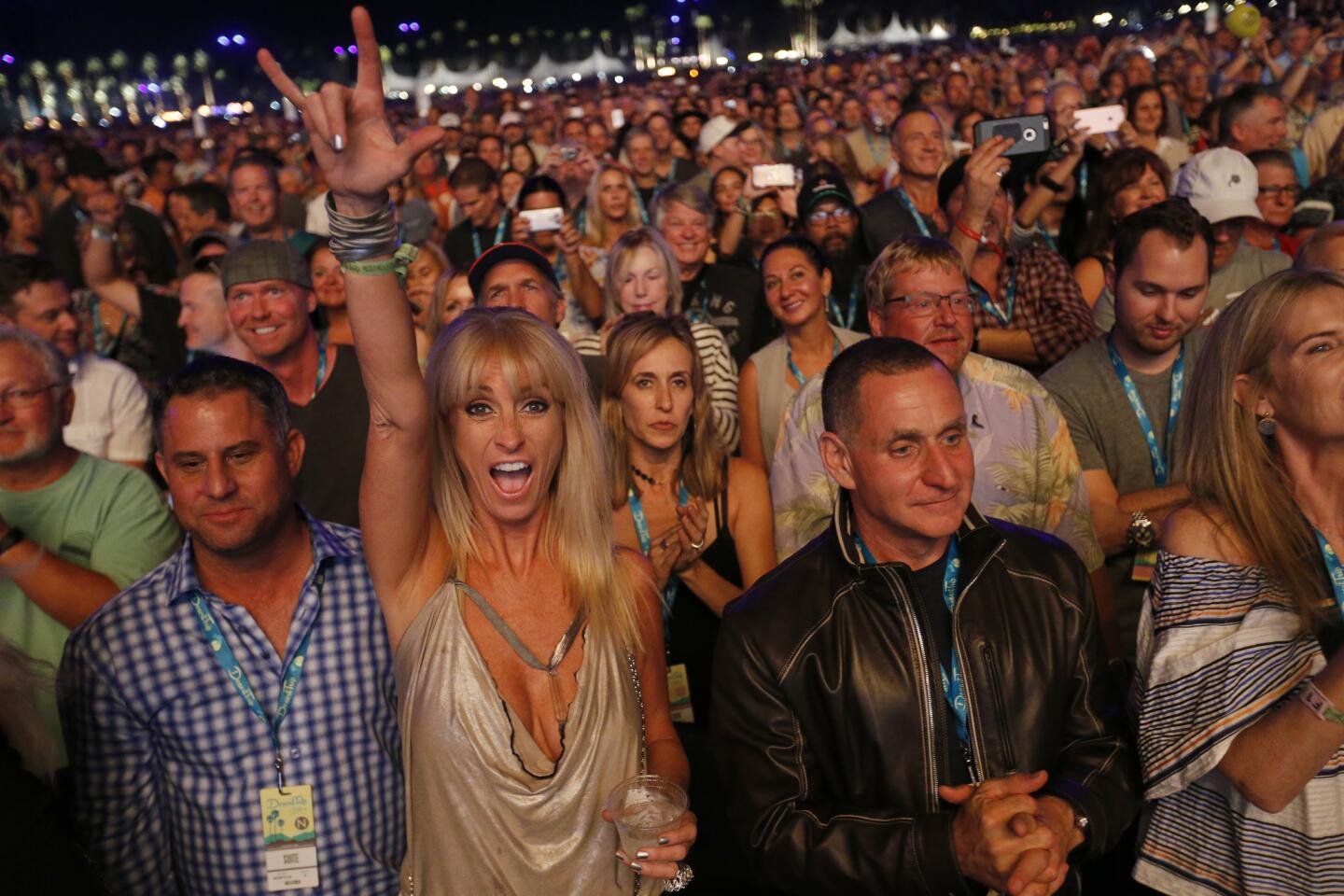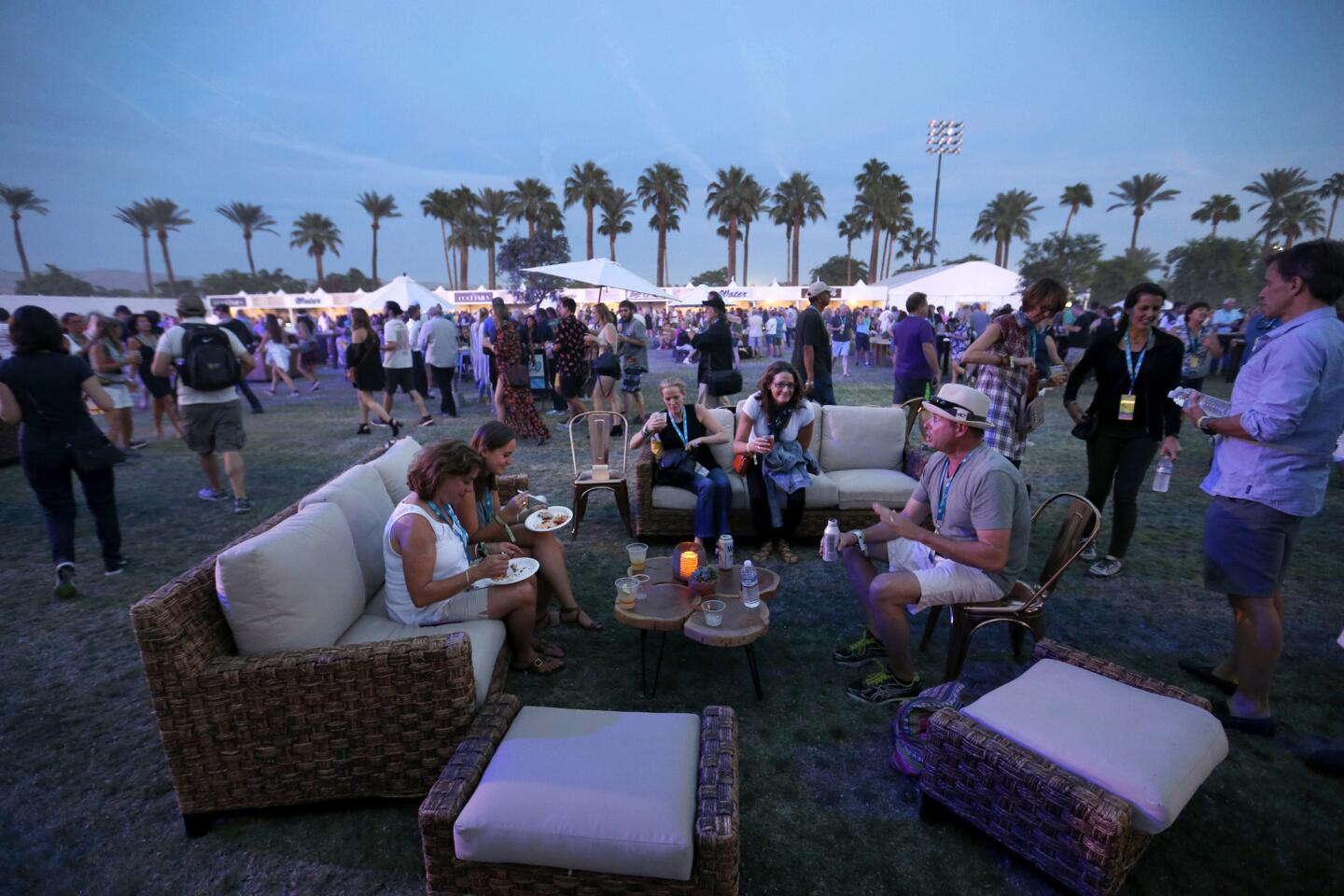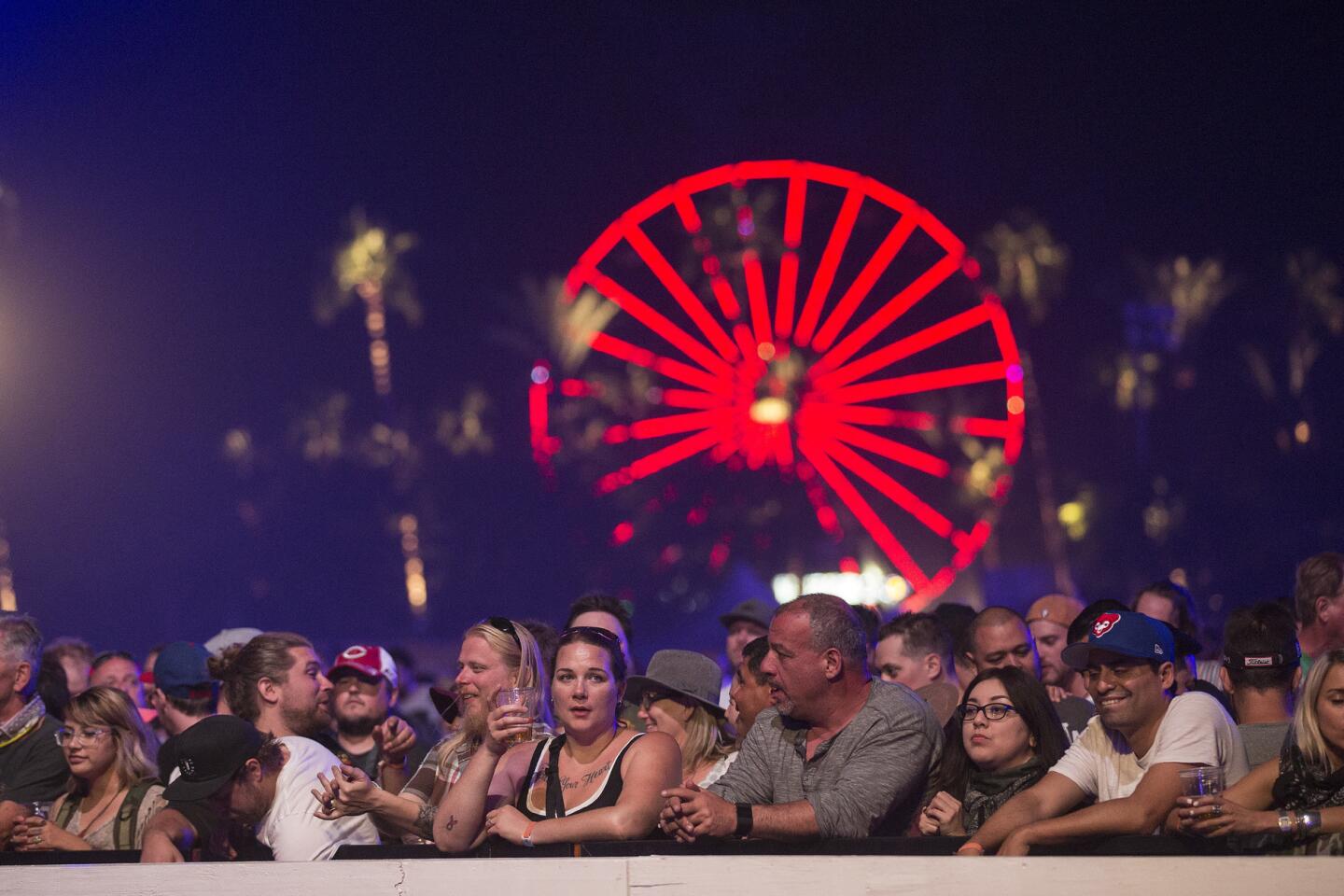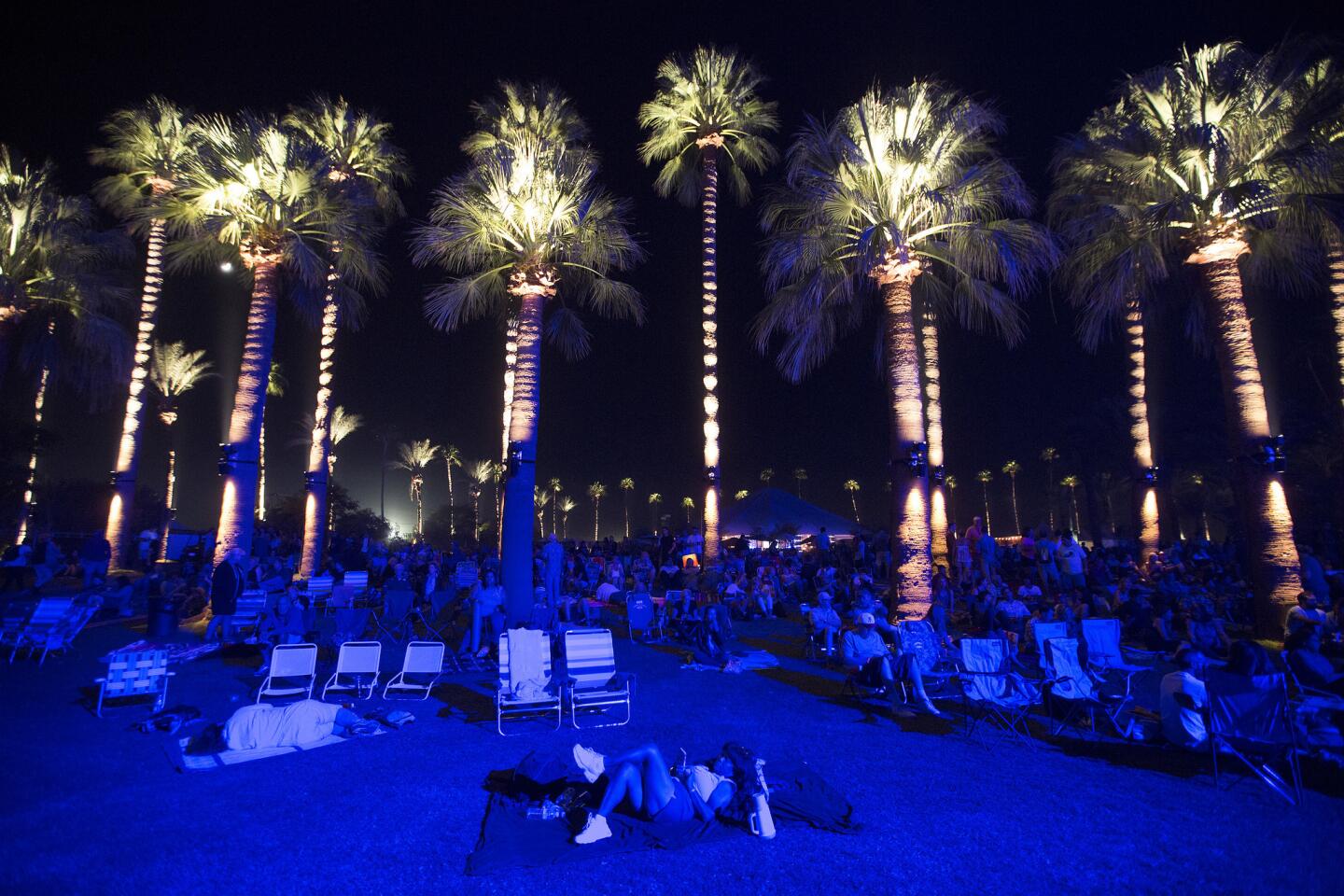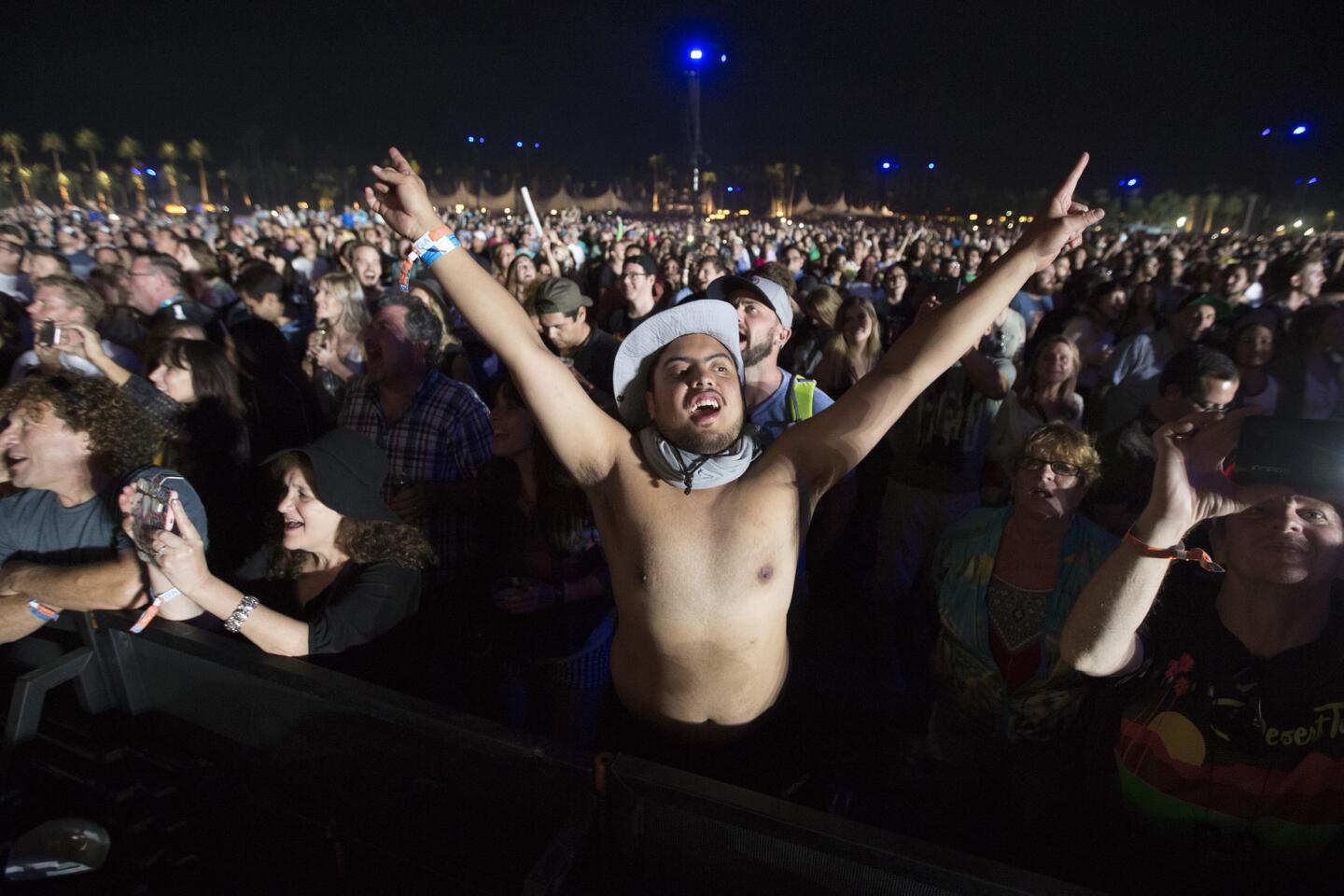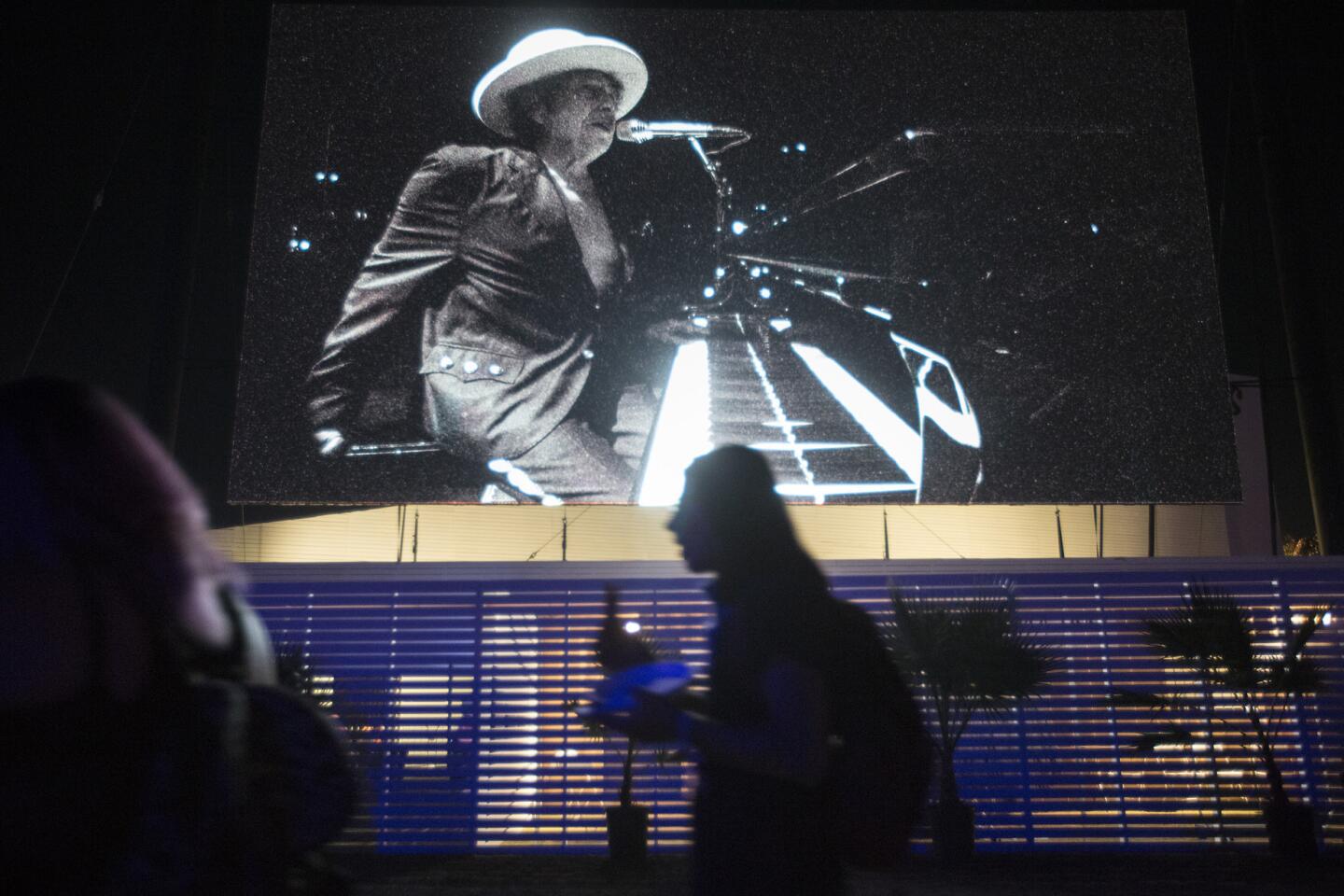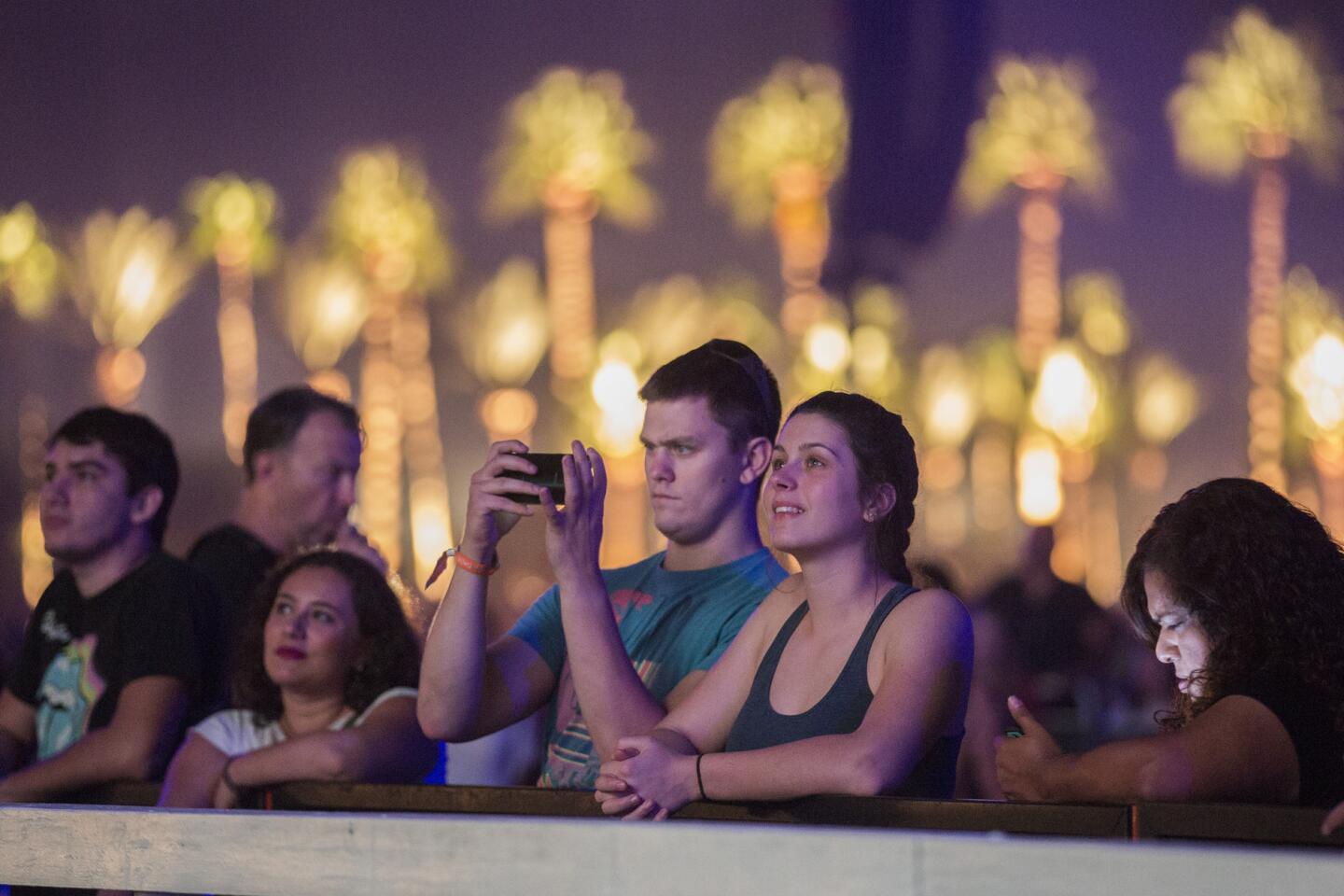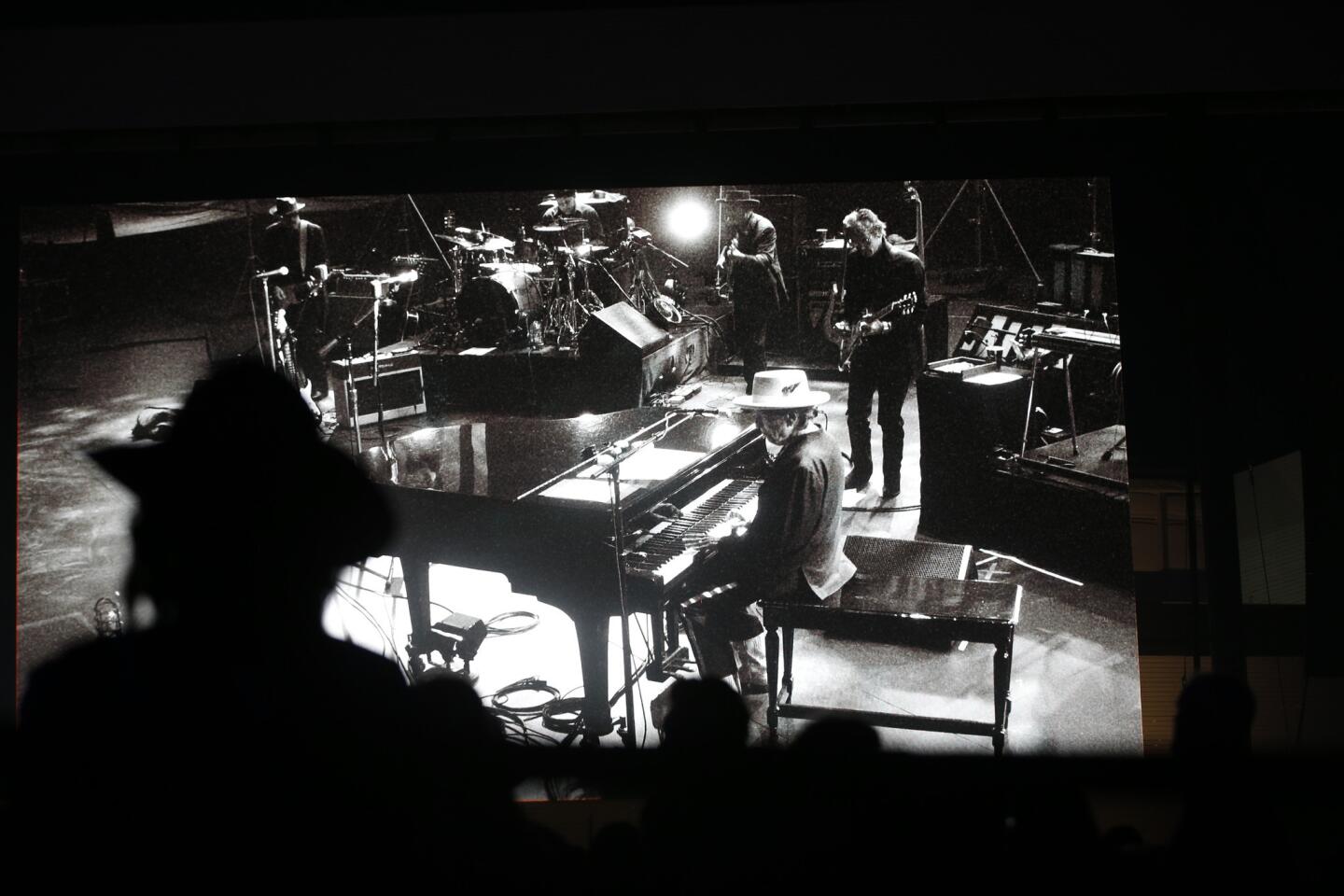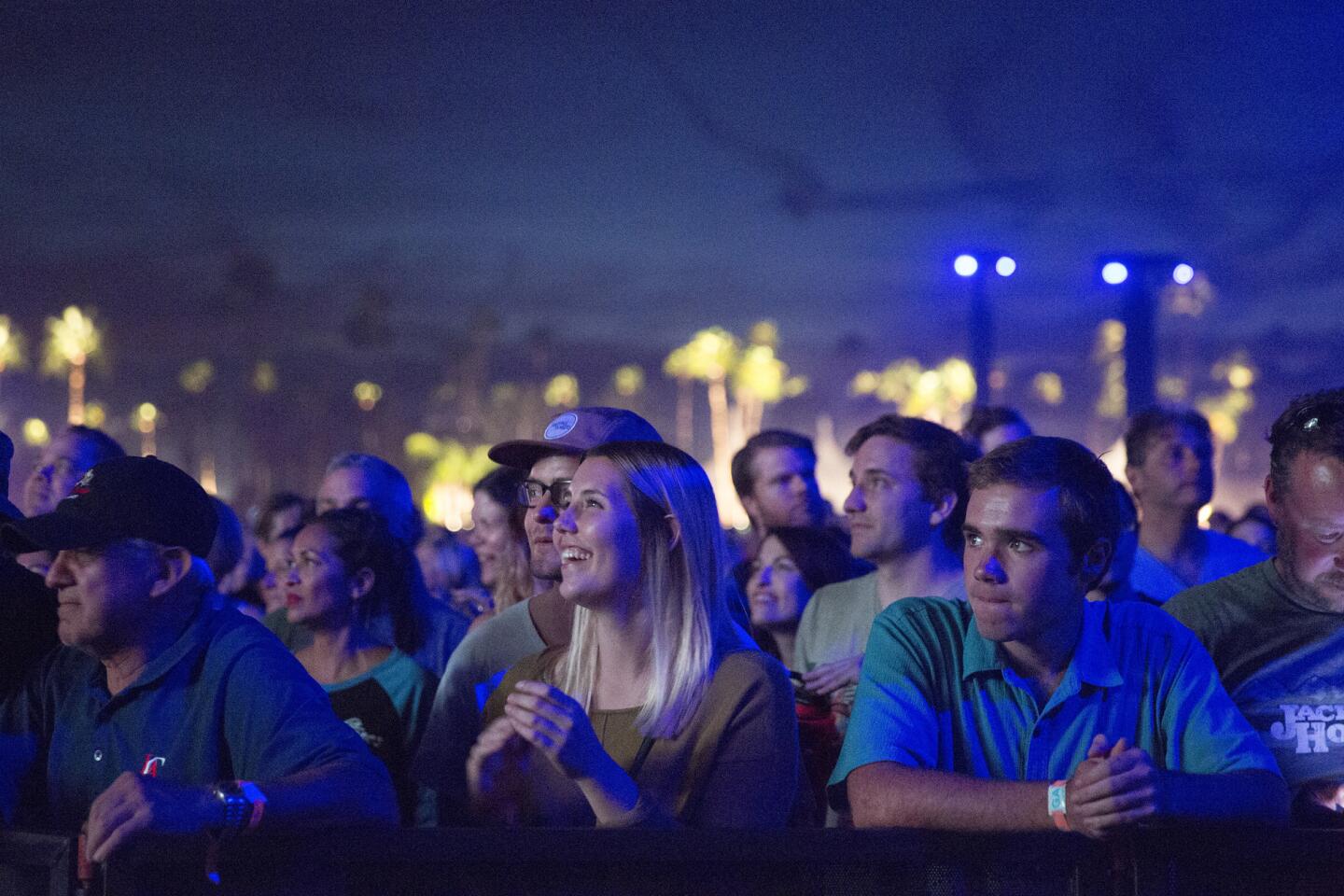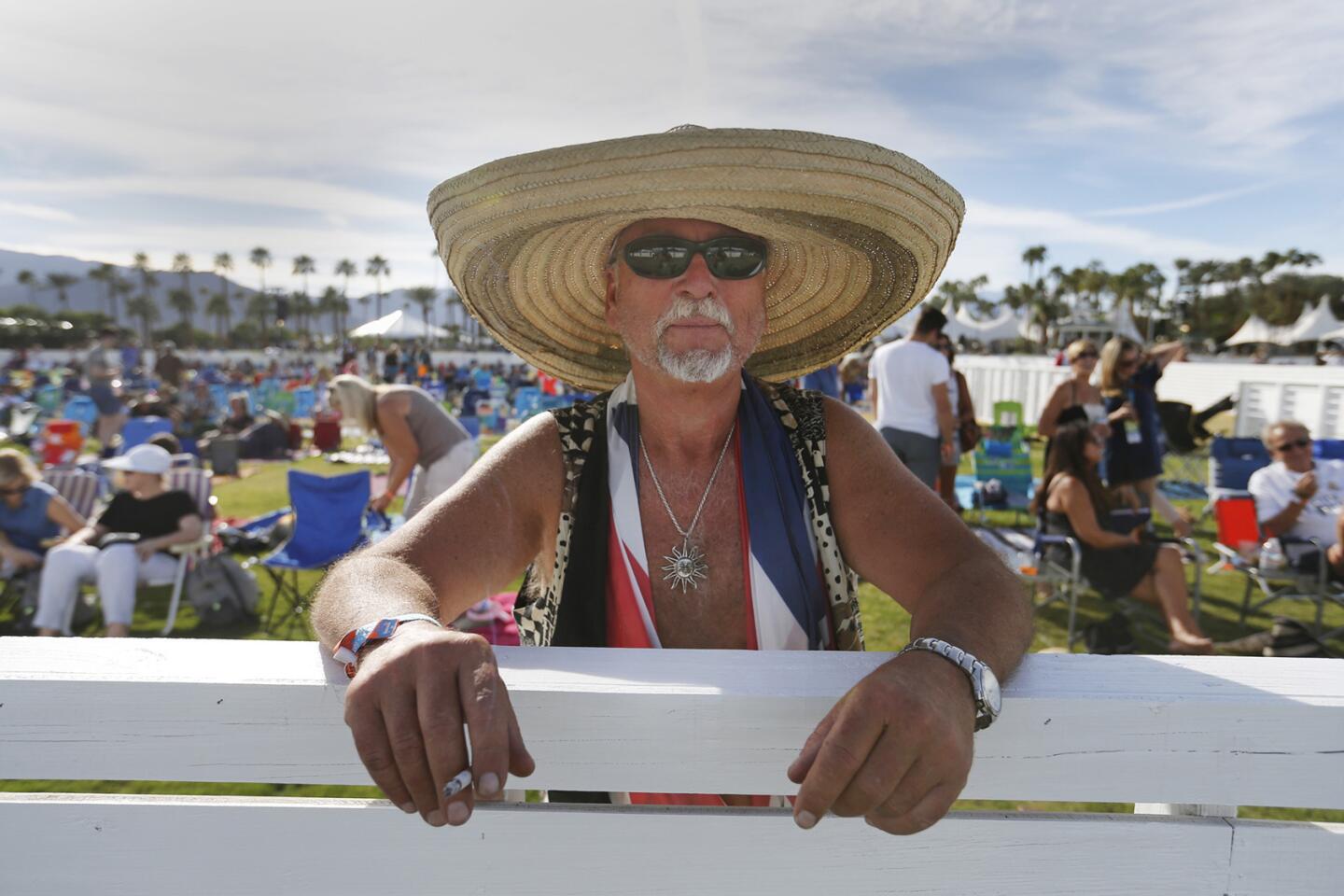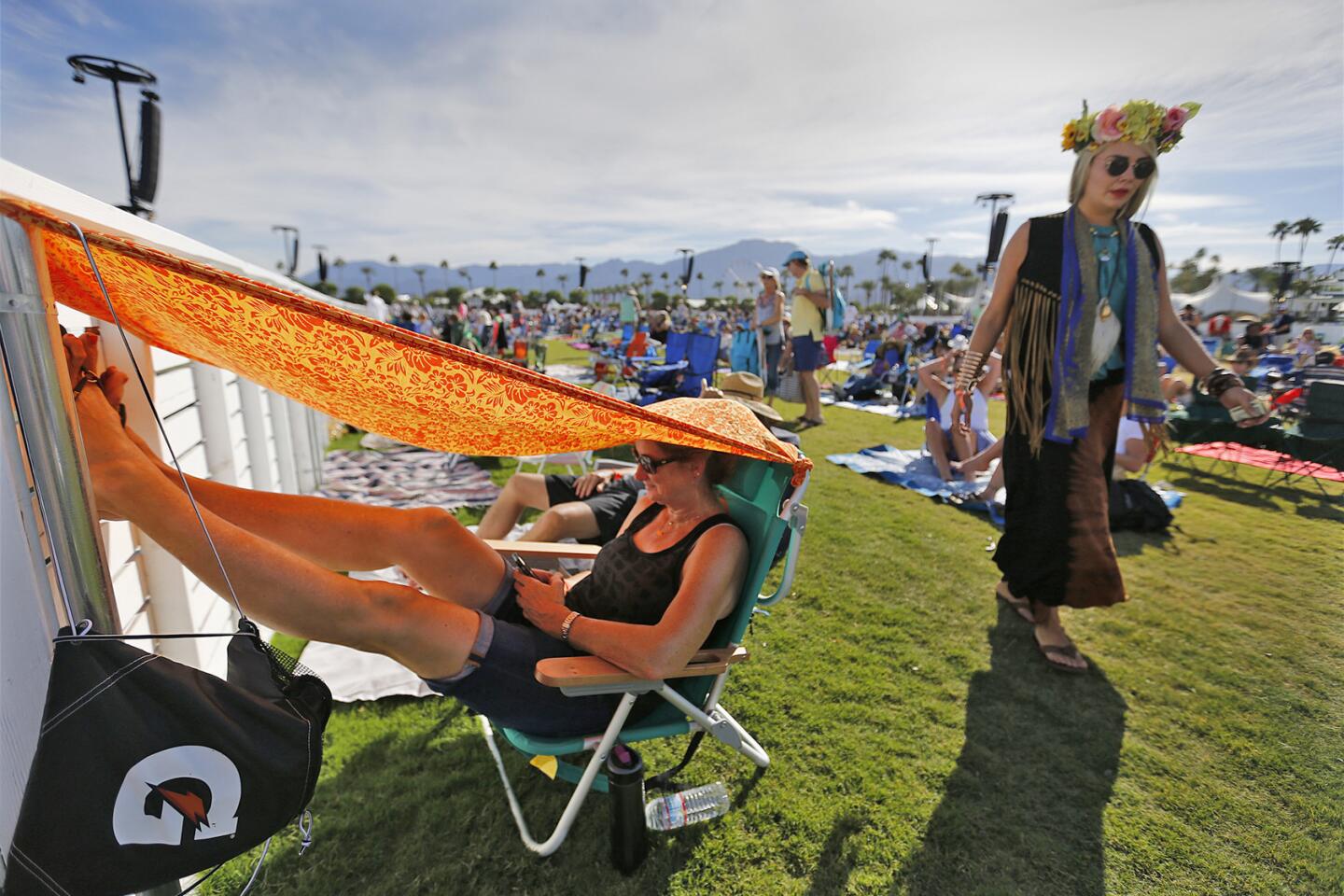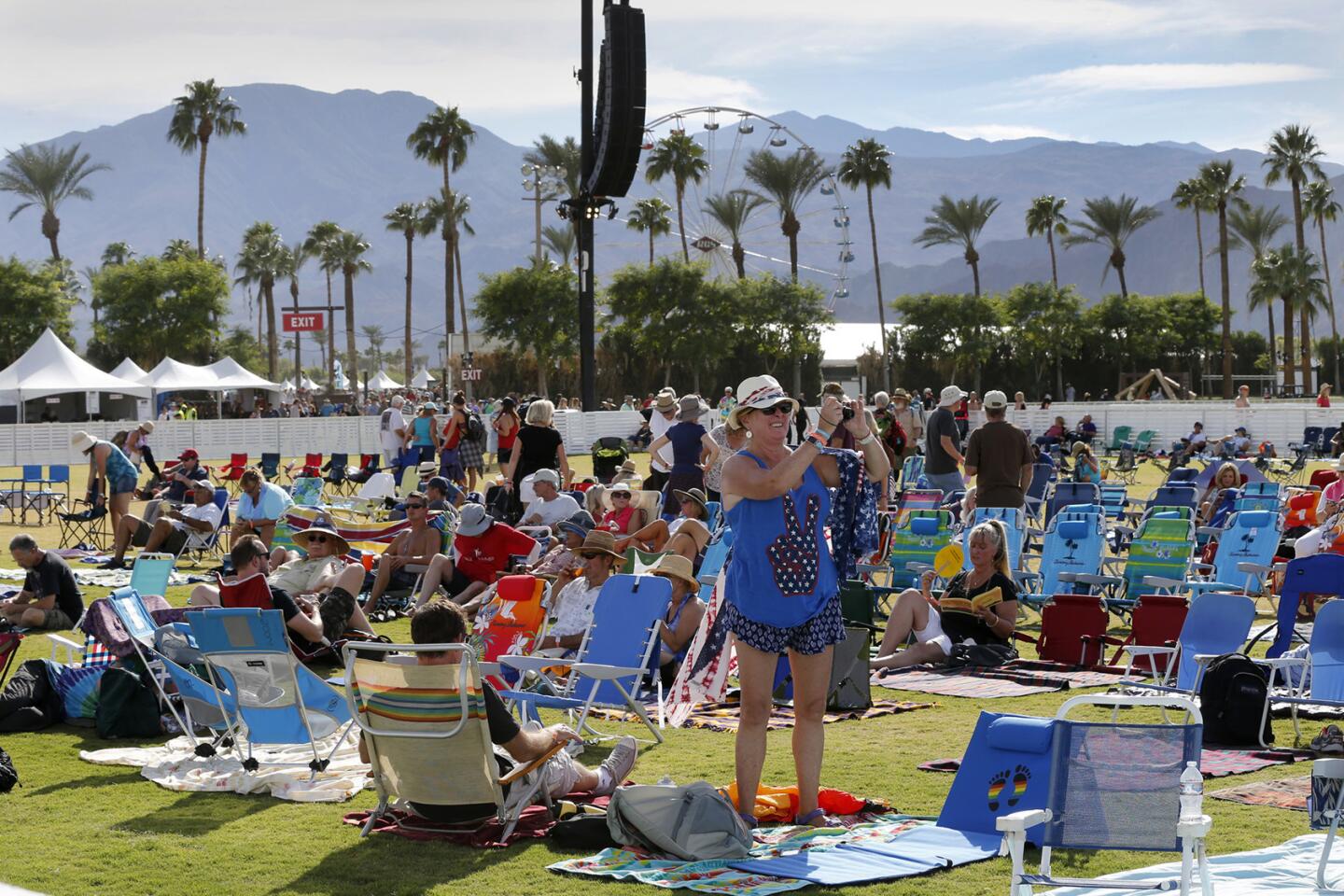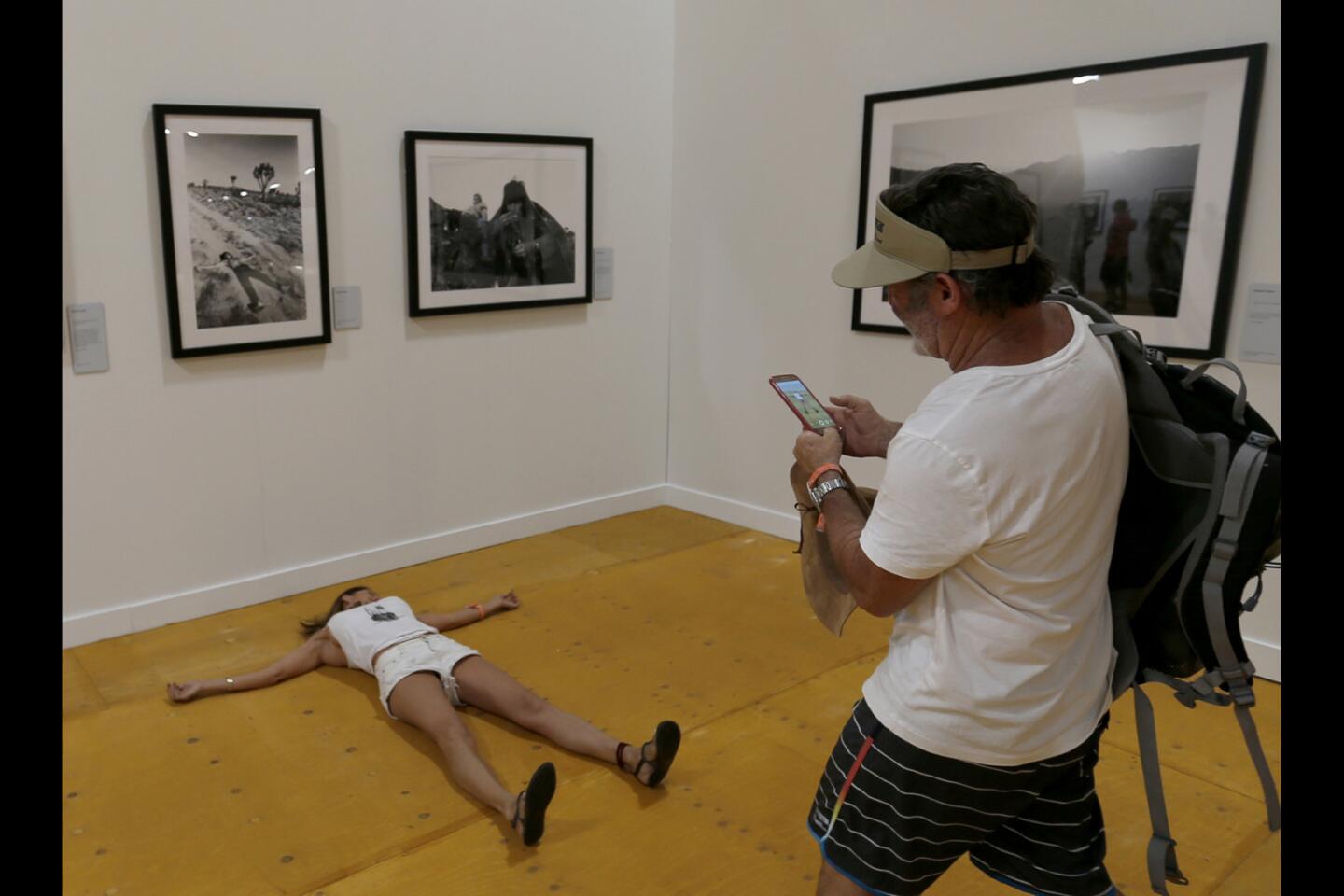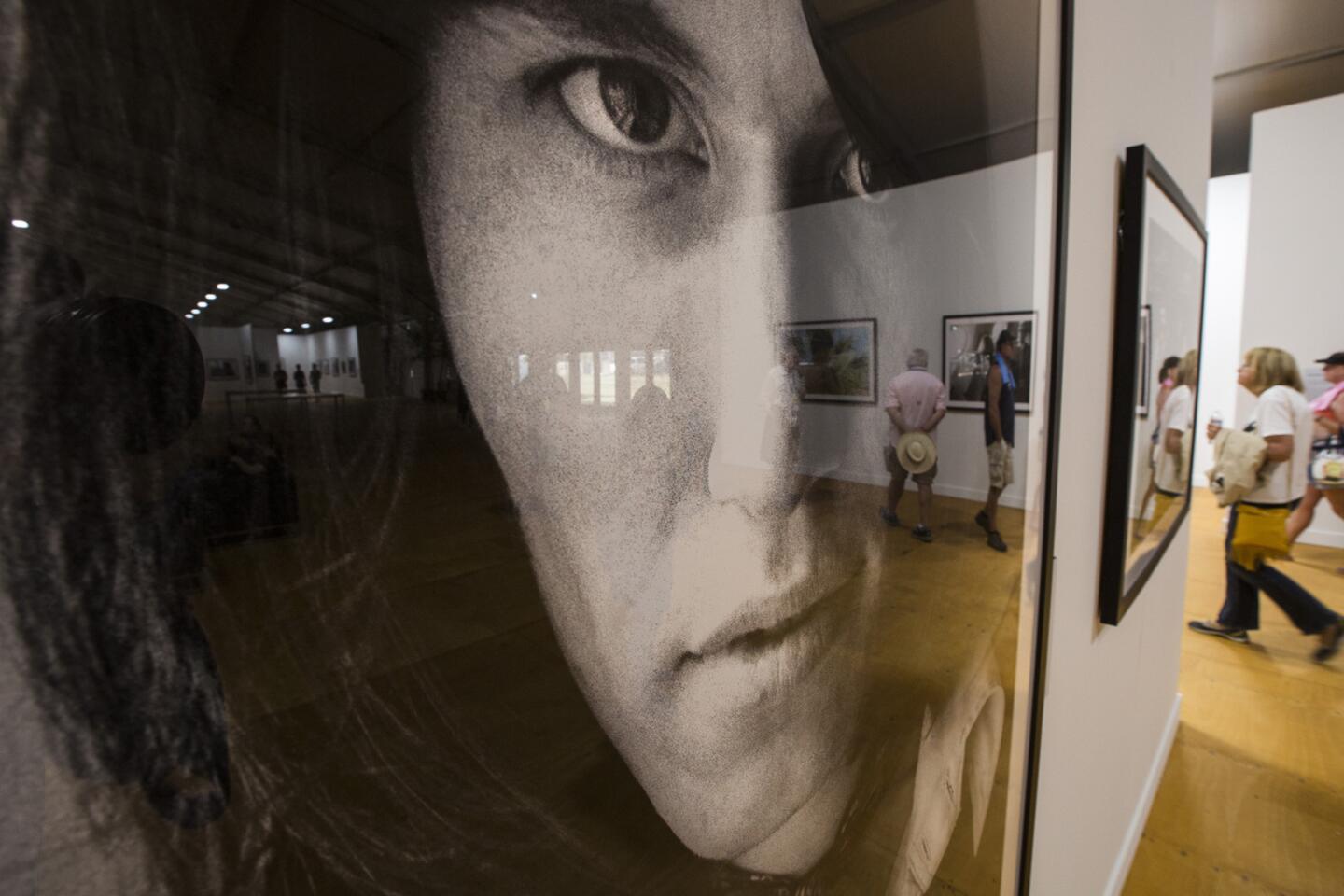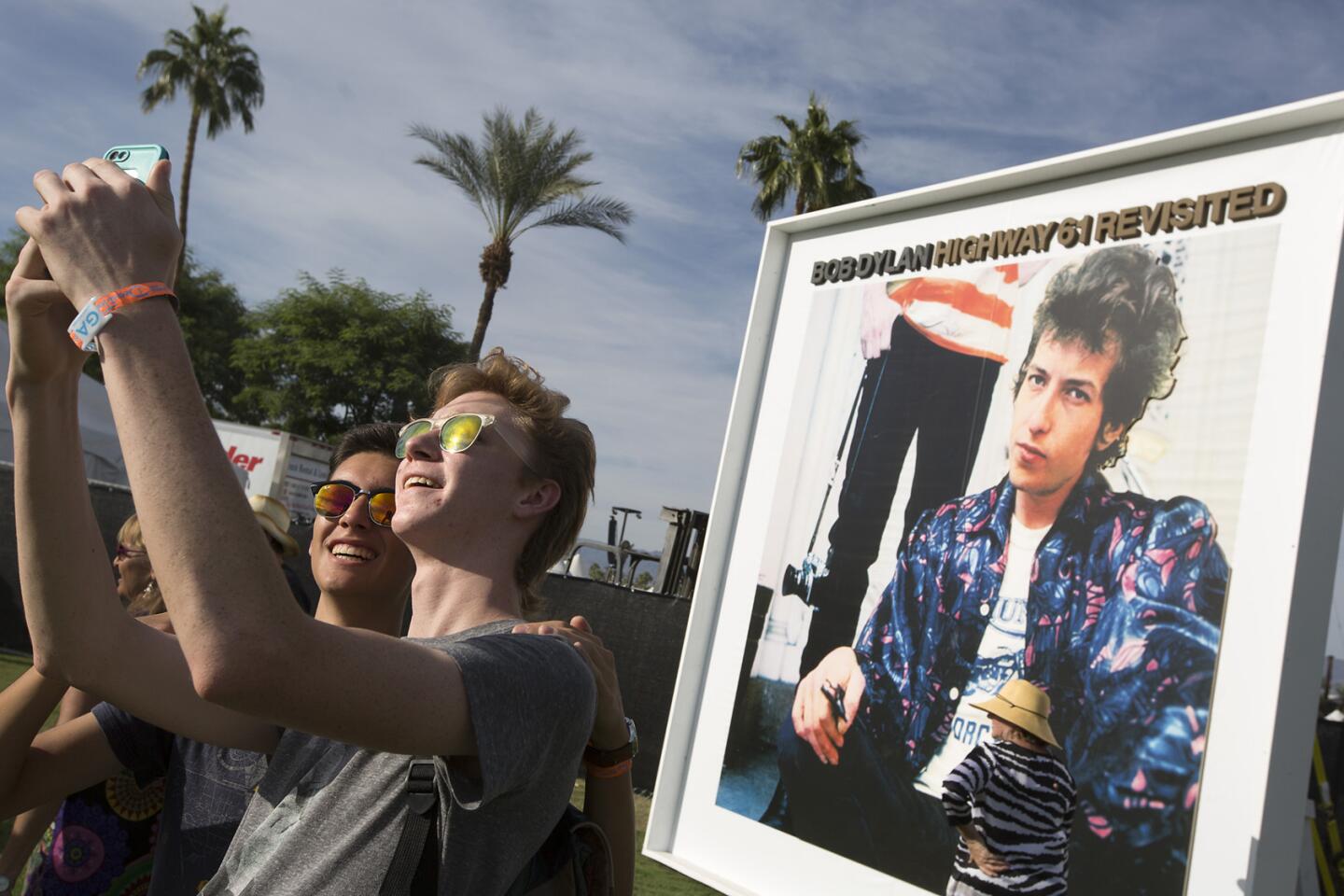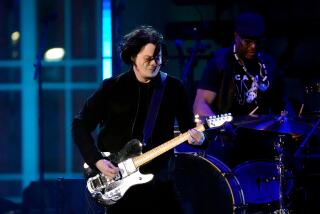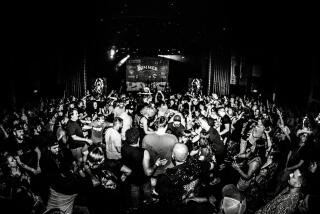Yes, the baby boomers were out in force for the Desert Trip music festival over the weekend in Indio, Calif. And no doubt those attending this latter-day gathering of the Woodstock tribe heard plenty of the one-liners levied at the event.
The festâs unofficial nickname â âOldchellaâ â was a well-worn punchline by the time the music began.
âNo age jokes tonight, all right?â said 73-year-old Rolling Stones lead singer Mick Jagger shortly after taking the stage Friday with longtime bandmates Keith Richards, 72, Charlie Watts, 75, and Ron Wood, 69.
Letting a beat pass, he announced, âWelcome to the Palm Springs Retirement Home for British Musicians.â
The Rolling Stones perform at Desert Trip. (Video courtesy of the Rolling Stones)
Indeed, the average age of the Desert Trip rock stars is 72.The bill, which will repeat next weekend, also includes Bob Dylan, Paul McCartney, the Who, Neil Young and Pink Floydâs Roger Waters â presumably the first and only time such rock titans will share the same stage.
But donât look at the event, organized by Goldenvoice, the promoters behind Coachella and its country cousin Stagecoach on the same site, simply as a celebration for rock fans navigating their golden years. Such a view, attendees argued, discounts the cross-generational and multicultural appeal each act has developed over careers collectively tallying more than 300 years.
âIâve been hearing this music since I was a kid,â said Christian Dinh, a 24-year-old Vietnamese American whoâd flown in for the weekend from Pensacola, Fla. âI just love rock ânâ roll. I love new music too, but l also love the old music. This is music that people are still going to be listening to 100 years from now.â
In fact, the average age of Desert Trip ticket buyer was 51, according to officials for the L.A.-based concert promoter Goldenvoice, with a healthy percentage of millennials and other young adults taking in the event.
1/62
Roger Waters performs on closing night at Desert Trip.
(Allen J. Schaben / Los Angeles Times) 2/62
A giant inflated pig is paraded over the venue during Roger Watersâ set at Desert Trip.
(Brian van der Brug / Los Angeles Times) 3/62
Roger Waters performs on closing night of Desert Trip.
(Allen J. Schaben / Los Angeles Times) 4/62
Flying over the venue during Roger Watersâ set at Desert Trip is an inflated pig with âDivided We Fallâ written on the side of it.
(Brian van der Brug / Los Angeles Times) 5/62
The sunset illuminates the sky behind the grandstands as The Who performs on the final day of the three-day Desert Trip.
(Allen J. Schaben / Los Angeles Times) 6/62
Roger Waters sends a message about presidential candidate Donald Trump as he performs on closing night of Desert Trip.
(Allen J. Schaben / Los Angeles Times) 7/62
An image of Donald Trump is projected on a large screen during Roger Watersâ set at Desert Trip.
(Brian van der Brug / Los Angeles Times) 8/62
A camera operator works on a platform above the venue during Roger Watersâ set.
(Brian van der Brug / Los Angeles Times) 9/62
Roger Waters sends a message about presidential candidate Donald Trump with a projection of Trumpâs distorted image during a performance on closing night of Desert Trip.
(Allen J. Schaben / Los Angeles Times) 10/62
The Whoâs Roger Daltrey, left, and Pete Townshend, right, on stage at Desert Trip.
(Brian van der Brug / Los Angeles Times) 11/62
A closeup of a coconut drink served in the culinary experience area on the final day of Desert Trip.
(Allen J. Schaben / Los Angeles Times) 12/62
The Whoâs Pete Townshend, right, on stage at Desert Trip.
(Brian van der Brug / Los Angeles Times) 13/62
The Whoâs Roger Daltrey on stage at Desert Trip.
(Brian van der Brug / Los Angeles Times) 14/62
Fans take in the The Who on stage at Desert Trip.
(Brian van der Brug / Los Angeles Times) 15/62
A giant image of The Who guitarist Pete Townshend and singer Roger Daltrey is projected during their performance on the final day of Desert Trip.
(Allen J. Schaben / Los Angeles Times) 16/62
The Whoâs Roger Daltrey on stage at Desert Trip.
(Brian van der Brug / Los Angeles Times) 17/62
The Who drummer Zak Starkey on stage at Desert Trip.
(Brian van der Brug / Los Angeles Times) 18/62
Lynne Kaplan of Irvine dances through a mister in the culinary experience area on the final day of Desert Trip.
(Allen J. Schaben / Los Angeles Times) 19/62
The Who guitarist Pete Townshend on stage at Desert Trip.
(Brian van der Brug / Los Angeles Times) 20/62
The Whoâs Roger Daltrey, left, and Pete Townshend, right, on stage at Desert Trip.
(Brian van der Brug / Los Angeles Times) 21/62
Neil Young fans take turns posing with Youngâs 1970 album cover on the final day of Desert Trip.
(Allen J. Schaben / Los Angeles Times) 22/62
Neil Young and Paul McCartney on stage at Desert Trip on the Empire Polo Club grounds in Indio.
(Brian van der Brug / Los Angeles Times) 23/62
An estimated Desert Trip crowd of 75,000 take in Paul McCartneyâs music Saturday night.
(Allen J. Schaben / Los Angeles Times) 24/62
Neil Young and Paul McCartney on stage at Desert Trip.
(Brian van der Brug / Los Angeles Times) 25/62
Neil Young and Paul McCartney sing âGive Peace a Chanceâ on stage at Desert Trip.
(Brian van der Brug / Los Angeles Times) 26/62
Fans watch Paul McCartney performs on the big screen on the second day of the three-day Desert Trip.
(Allen J. Schaben / Los Angeles Times) 27/62
Paul McCartney on stage Saturday night at Desert Trip on the Empire Polo Club grounds in Indio.
(Brian van der Brug / Los Angeles Times) 28/62
Fans watch Paul McCartney perform from grandstand suites on the second day of the three-day Desert Trip at the Empire Polo Club grounds in Indio, Calif. (Allen J. Schaben / Los Angeles Times)
29/62
Paul McCartney on stage at Desert Trip.
(Brian van der Brug / Los Angeles Times) 30/62
Fans cheer and sing along as Paul McCartney performs on the second day of the three-day Desert Trip.
(Allen J. Schaben / Los Angeles Times) 31/62
Paul McCartney on stage at Desert Trip.
(Brian van der Brug / Los Angeles Times) 32/62
Rhya, 5, left, and Saydee, 3, Provensen of Huntington Beach dance to Neil Young at Desert Trip.
(Brian van der Brug / Los Angeles Times) 33/62
Paul McCartney on stage at Desert Trip.
(Brian van der Brug / Los Angeles Times) 34/62
A soulful Neil Young performs on the second day of the three-day Desert Trip at the Empire Polo Club grounds in Indio, Calif., on Oct. 8, 2016.
(Allen J. Schaben / Los Angeles Times) 35/62
A couple relax with their smart phones during Neil Youngâs set at Desert Trip on the Empire Polo Club grounds in Indio, Calif., on Oct. 8, 2016.
(Brian van der Brug / Los Angeles Times) 36/62
Neil Young performs on the second day of the three-day Desert Trip at the Empire Polo Club grounds in Indio.
(Allen J. Schaben / Los Angeles Times) 37/62
Tommy Teissere, 68, of Huntington Beach, relaxes in his inflatable couch on 2nd day of Desert Trip during the three-day concert in Indio.
(Allen J. Schaben / Los Angeles Times) 38/62
Neil Young is projected on a big screen performing near a teepee on the second day of the three-day Desert Trip.
(Allen J. Schaben / Los Angeles Times) 39/62
From left, Rolling Stones members Ronnie Wood, Charlie Watts, Mick Jagger and Keith Richards perform on the first day of the three-day Desert Trip at the Empire Polo Club grounds in Indio.
(Allen J. Schaben / Los Angeles Times) 40/62
Guitarist Ron Wood of the Rolling Stones performs on the first night of Desert Trip at the Empire Polo Club grounds in Indio.
(Allen J. Schaben / Los Angeles Times) 41/62
Fans pose for photos with a Who album cover backdrop at Desert Trip in Indio.
(Brian van der Brug / Los Angeles Times) 42/62
From left, Rolling Stones members Ronnie Wood, Charlie Watts and Keith Richards perform.
(Allen J. Schaben / Los Angeles Times) 43/62
Fans cheer for the Rolling Stones at Desert Trip on the Empire Polo Club grounds in Indio.
(Brian van der Brug / Los Angeles Times) 44/62
Mick Jagger appears on a jumbo video screen onstage with the Rolling Stones at Desert Trip.
(Brian van der Brug / Los Angeles Times) 45/62
Guitarist Keith Richards appears on a jumbo screen at Desert Trip.
(Brian van der Brug / Los Angeles Times) 46/62
Mick Jagger and The Rolling Stones perform on the first day of the three-day Desert Trip.
(Allen J. Schaben / Los Angeles Times) 47/62
Fans pose for photos with a poster of The Whoâs âThe Kids Are Alrightâ album.
(Brian van der Brug / Los Angeles Times) 48/62
Fans watch the Rolling Stones perform at Desert Trip in Indio.
(Allen J. Schaben / Los Angeles Times) 49/62
Concertgoers eat, drink and relax at dusk on the first day of the three-day Desert Trip at the Empire Polo Club grounds in Indio.
(Allen J. Schaben / Los Angeles Times) 50/62
Fans await the start of the Rolling Stonesâ set.
(Brian van der Brug / Los Angeles Times) 51/62
The Empire Polo Club grounds in Indio are lit up as fans await the Rolling Stones.
(Brian van der Brug / Los Angeles Times) 52/62
Fans cheer as the Rolling Stones take the stage at Desert Trip.
(Brian van der Brug / Los Angeles Times) 53/62
Most fans in the general seating area could see Bob Dylanâs set only on a grainy black-and-white video screen.
(Brian van der Brug / Los Angeles Times) 54/62
Fans enjoy Bob Dylanâs set at Desert Trip.
(Brian van der Brug / Los Angeles Times) 55/62
Bob Dylan (at the piano) did not want press photos taken during his set, but promoter Goldenvoice allowed photos of the screen.
(Allen J. Schaben / Los Angeles Times) 56/62
Fans enjoy Bob Dylanâs set at Desert Trip.
(Brian van der Brug / Los Angeles Times) 57/62
After driving 1,100 miles in his 1951 Austin panel truck, Lyle Brown-John of Vancouver arrives in Indio amid temperatures in the high 90s.
(Allen J. Schaben / Los Angeles Times) 58/62
Kara Farley of La Jolla, left, makes her own shade after arriving for the first day of Desert Trip.
(Allen J. Schaben / Los Angeles Times) 59/62
Concert-goers set up their seats amid temperatures in the high 90s.
(Allen J. Schaben / Los Angeles Times) 60/62
Jeff Kelley takes a photo of Lisette Valla, both of San Diego, as she mimics Keith Richardsâ pose when he was photographed by Michael Cooper in 1969, in the Photography Experience exhibit at Desert Trip.
(Allen J. Schaben / Los Angeles Times) 61/62
Desert Trip attendees are reflected in a portrait of Roger Waters by photographer Barrie Wentzell at the Photography Experience.
(Brian van der Brug / Los Angeles Times) 62/62
Antonio Villa, left, and Cayden Himes, 18, of Prescott, Ariz., take a photo with a Bob Dylan album cover poster.
(Brian van der Brug / Los Angeles Times) Brothers Alvaro and Fernando Obregon, 28 and 25, respectively, journeyed from their home in Tijuana for the show, with Watersâ performance on Sunday at the top of their priority list.
âI think music moves the world,â Alvaro said, âand this music is from a time where so many important things were going on worldwide.â
Miki Stevens, a 17-year-old from Rialto, credited her mother, Wendy, 52, who was by her side over the weekend, for igniting her passion for the Desert Trip artists.
âI think this music is better than todayâs music,â Miki said while strolling an expansive exhibit of vintage photos of the showâs featured acts, a draw for the images themselves as well as for the air-conditioned tent that housed it, which offered a respite from the triple digit heat before the sun set each evening.
Desert Trip promoter Goldenvoice sold the bulk of the 75,000 passes for both weekends within five hours of putting them on sale in May. The promoter stands to gross about $160 million, making it the most lucrative music festival ever. Billboard estimates the cost of producing the show at upward of $100 million.
Although many fans were trekking to Indio in hopes of revisiting the glory days of rock music, the acts theyâd paid top dollar to see were still doing impressive business.
Paul McCartney performs at Desert Trip. (Video courtesy of Paul McCartney)
Since 2000, the Rolling Stones have grossed more than $1.1 billion with their periodic tours, according to Pollstar, the concert-industry-tracking publication. McCartney has racked up $761 million, Waters has pulled in $592 million, followed by Dylan ($293 million), the Who ($200 million) and Young ($153 million).
Thatâs a collective $3.1 billion in ticket sales.
Festival organizers dramatically revamped the grounds at the Empire Polo Field for Desert Trip, erecting three-story high grandstands on either side of the field immediately in front of a massive stage the size of a football field.
In front of the stage, an open pit accommodating about 1,500 people â for which tickets cost $1,599 for the three-days â came between the performers and an extensive rows of chairs. There was seating for about 35,000 Desert Trip-goers with a general admission lawn area behind the well-padded chairs.
Neil Young performs at the Desert Trip. (Video courtesy of Neil Young)
A gargantuan video screen behind the stage magnified the performances with high-definition visuals to let fans in lower-priced areas in on what was transpiring. Additional screens carried the action to other parts of the expansive polo field grounds.
Desert Trip didnât escape the occasional glitch. Traffic snarled for concertgoers heading into and exiting the Empire Polo Club.
There appeared to be technical difficulties with the massive video screen behind the stage in the early going, as live images of Dylan and his band were replaced for much of the set by vintage film footage of urban traffic, nature scenes and other images. Auxiliary screens farther back appeared to function better.
Ticket holders expressed a predictably wide range of reactions, from gripes about the traffic, the efficiency of shuttles transporting concertgoers from area hotels and the performances.
âDylan [stunk] â he didnât play many of the songs we all came to hear,â said Tim Cromwell, 60, from Costa Mesa.
On the flip side, Danny March, 57, of the San Fernando Valley, said of the same performance: âDylan was the best Iâve ever seen him, and I usually donât like Dylan.â
The well-heeled among the crowd were offered food options including high-end pop-up restaurants, a âculinary experienceâ area (admission: $179 for all you could eat and drink) and prix-fixe gourmet meals.
Desert Trip baby boomer talks about the changes in the concert scene.
There was another obvious difference between the Desert Trip audience and those attending Coachella and Stagecoach: fashion.
At the latter two, festivalgoers appear bent on outdoing one another with their fashion choices. Coachella fans, for instance, regale themselves in Grateful Dead-by-way-of-Rodeo Drive outfits, and boots and Stetsons populate the Stagecoach scene.
For Desert Trip, the crowd was dressed more for comfort than to impress, seeming to embody the refrain of one of Dylanâs latter-day songs, âI used to care...but things have changed.â
So, despite some high-class flourishes, which were a long way removed from the counterculture from which these artists sprang, there was little distraction from the main attraction.
âI think these artists embody why music festivals started,â said Aimee Sloan, 35, of Culver City. She has attended the Coachella Music and Arts Festival twice, as well as Bonnaroo in Manchester, Tenn.
âThe music they have is inspiring...Itâs the music that started all of the other offshoots of [rock and pop] music,â she said. âI think they represent a different time, when music was there to bring people together, to inspire people.â
[email protected]
ALSO
Desert Trip serves up protest-era rock â so far minus the politics
Desert Tripâs dream lineup and sky-high prices are making historyâand upending rock fest tradition
Paul McCartney brings out Neil Young â and a lifetime of indelible songs â at Desert Trip




